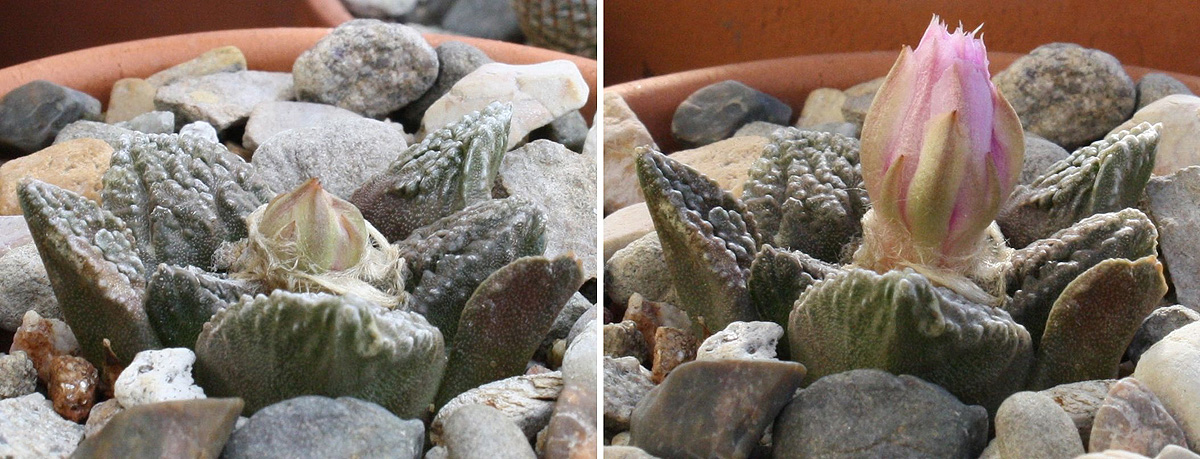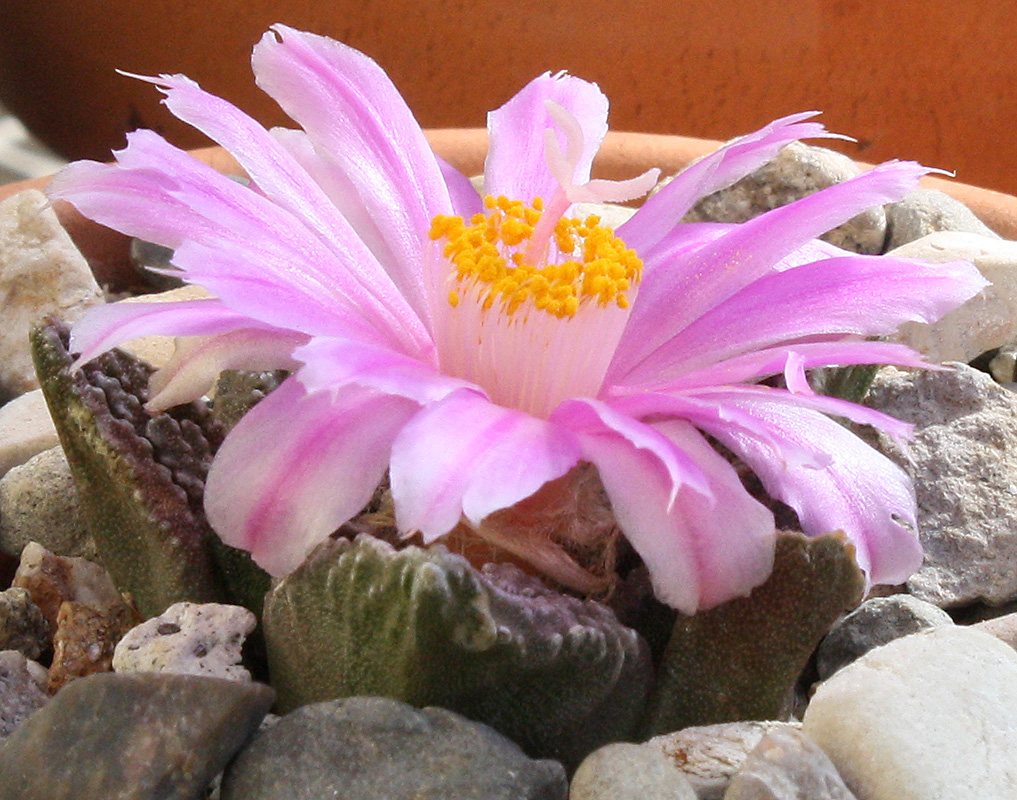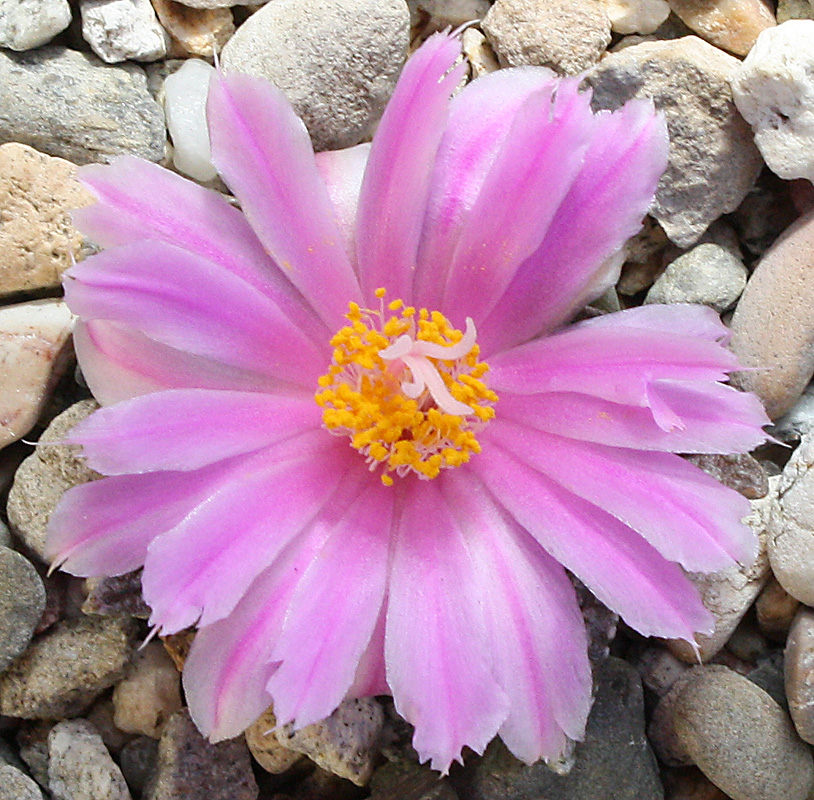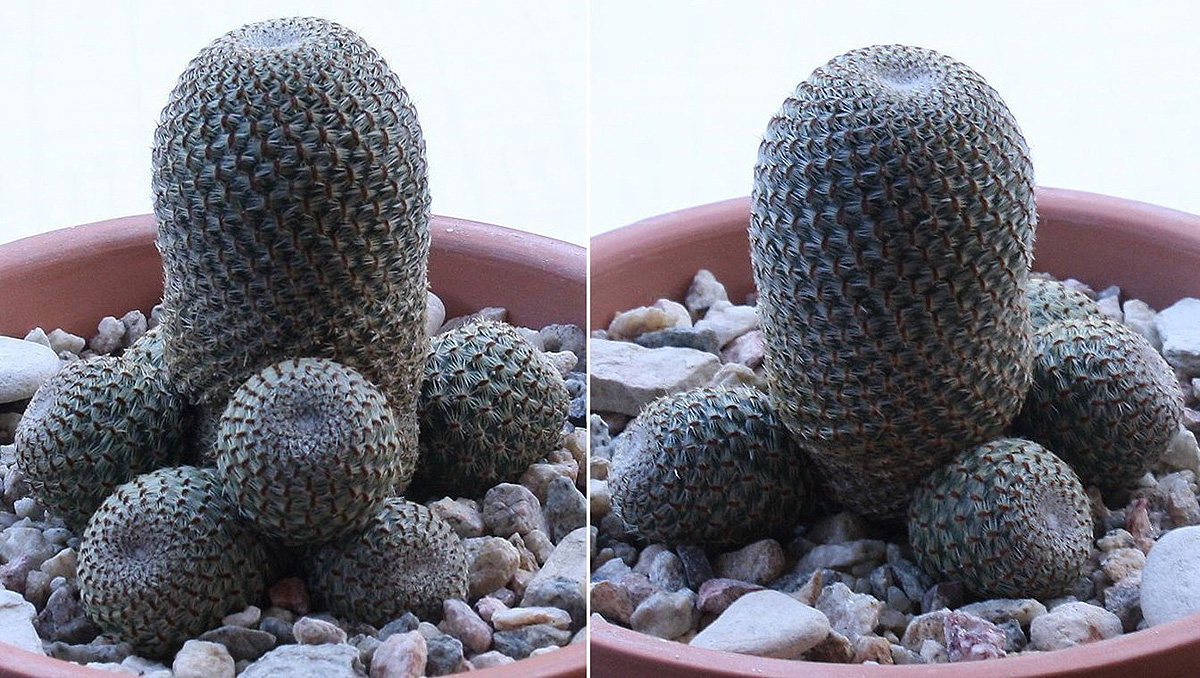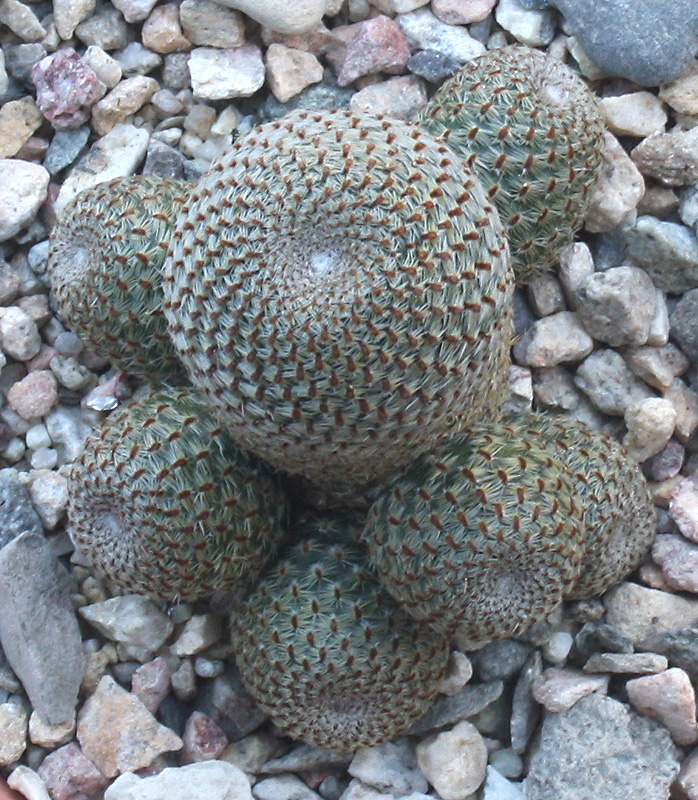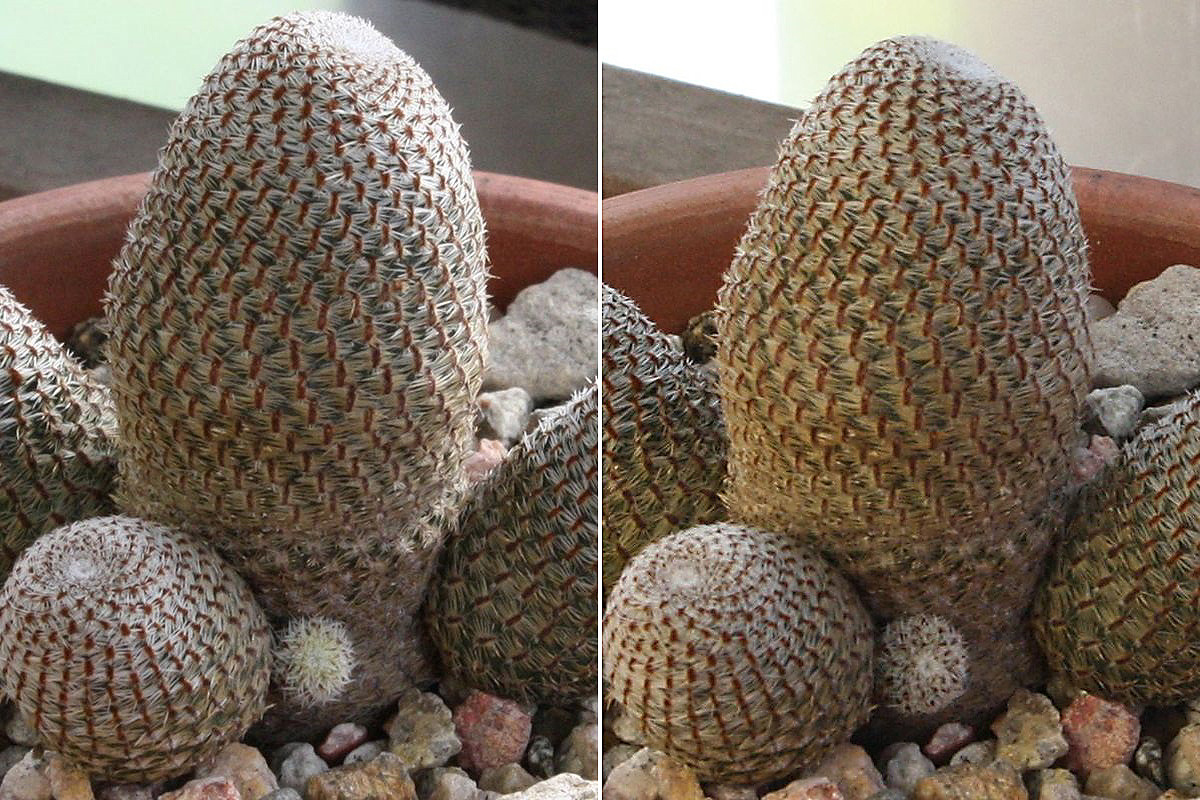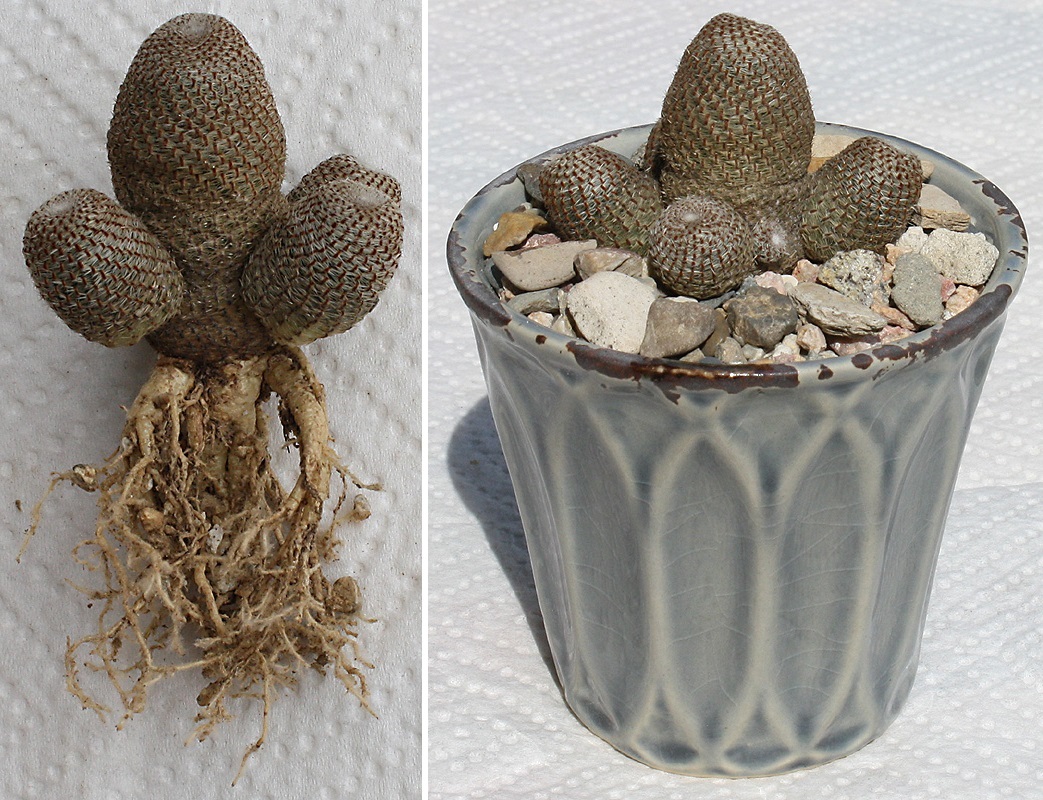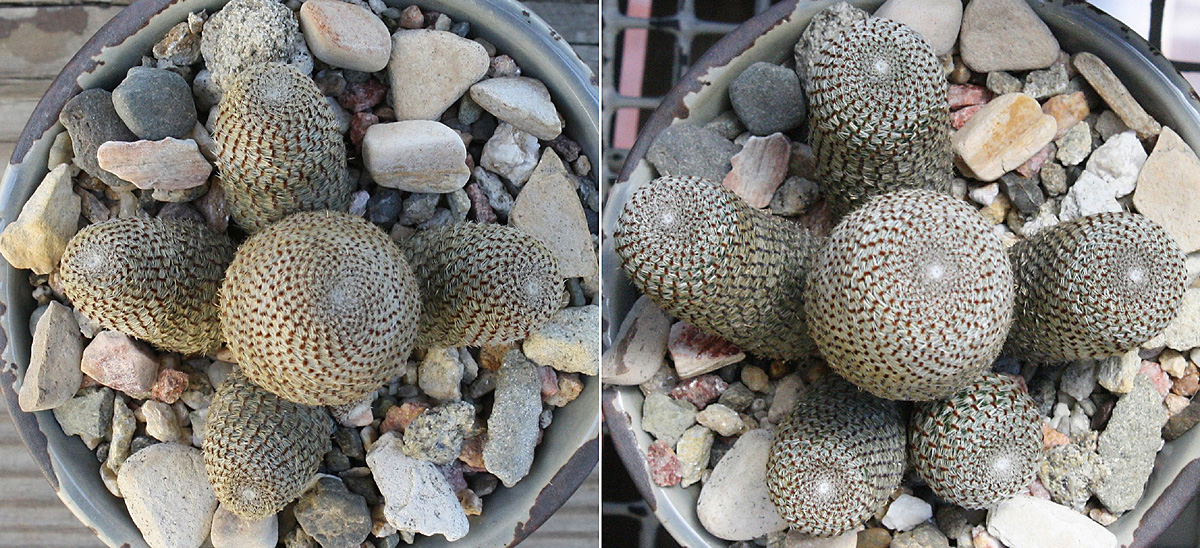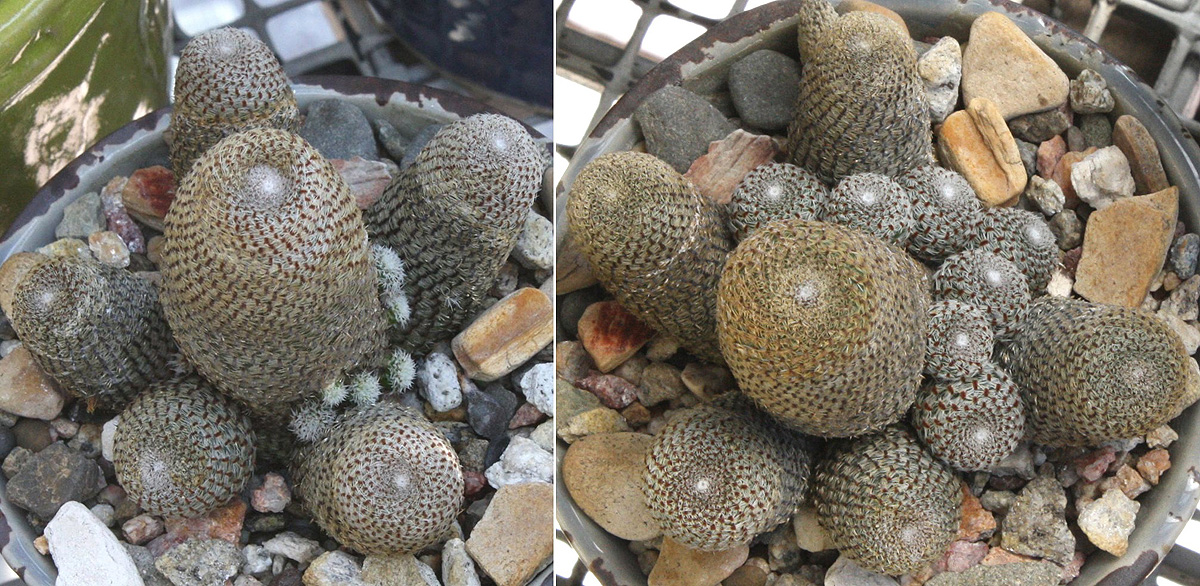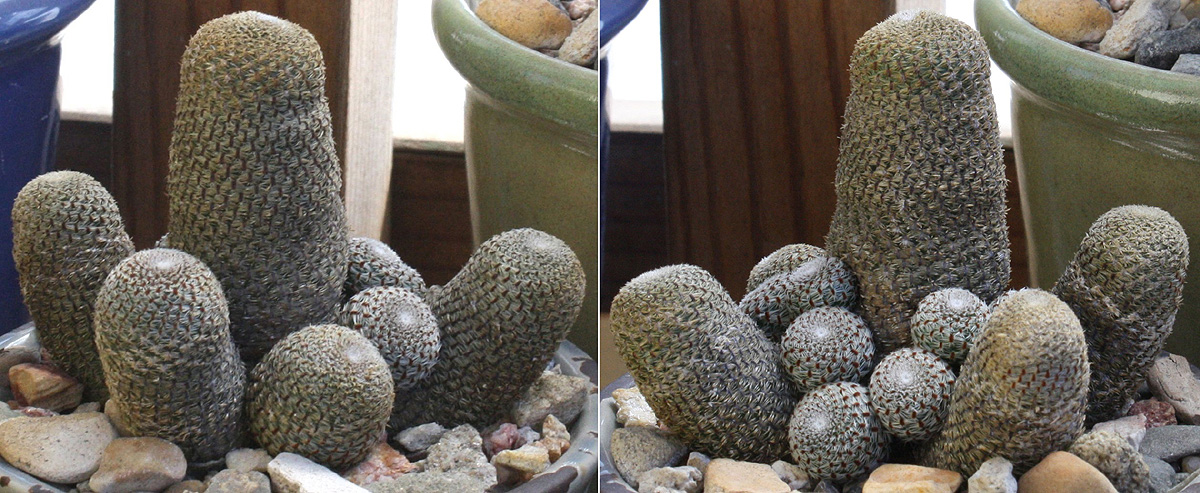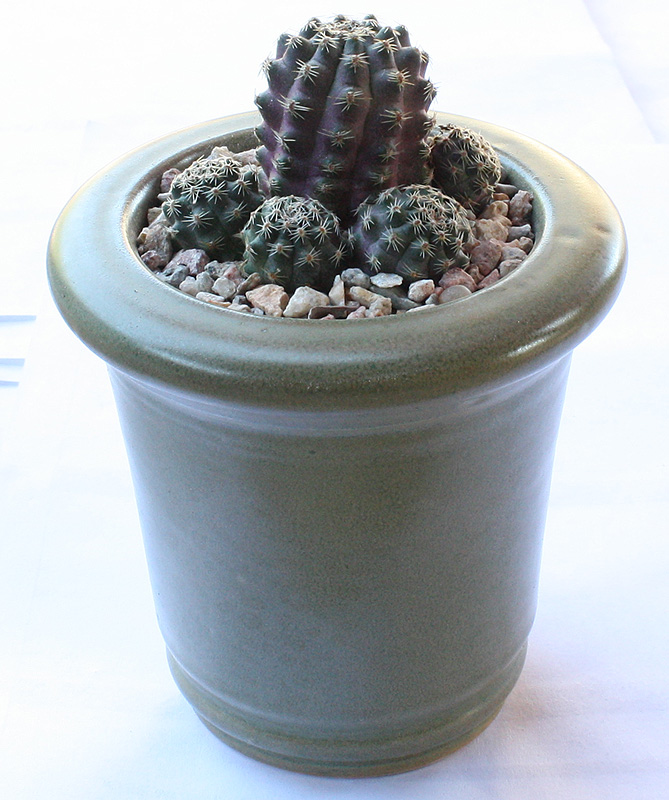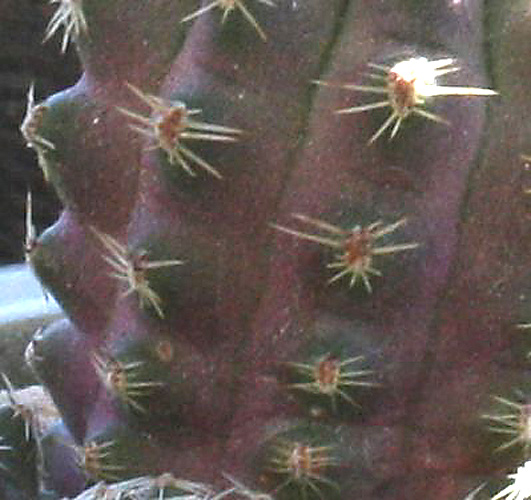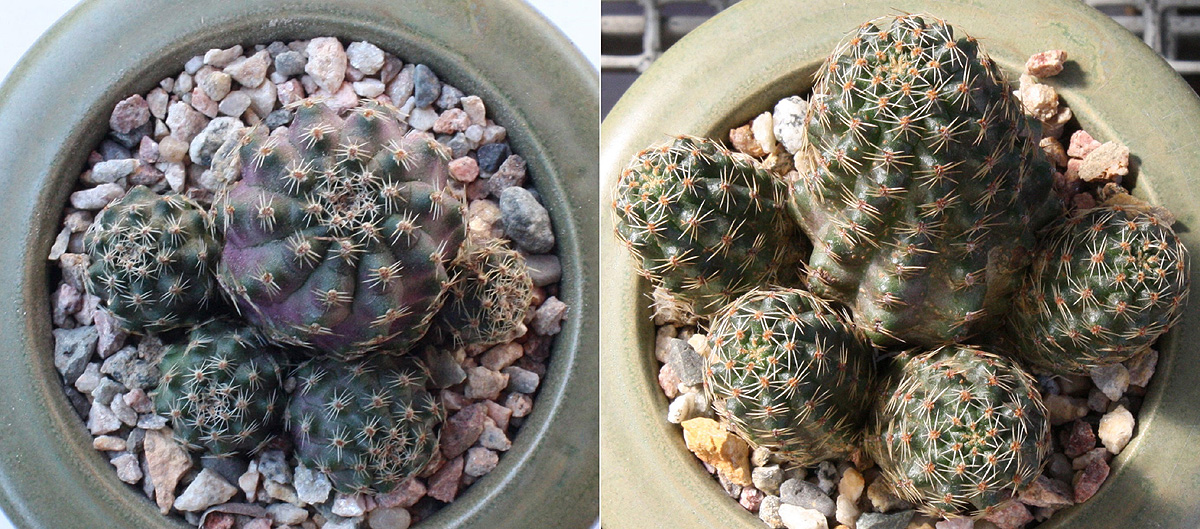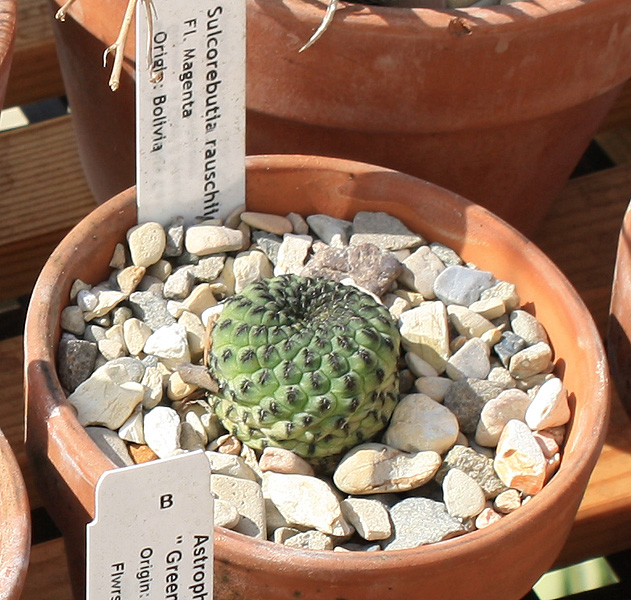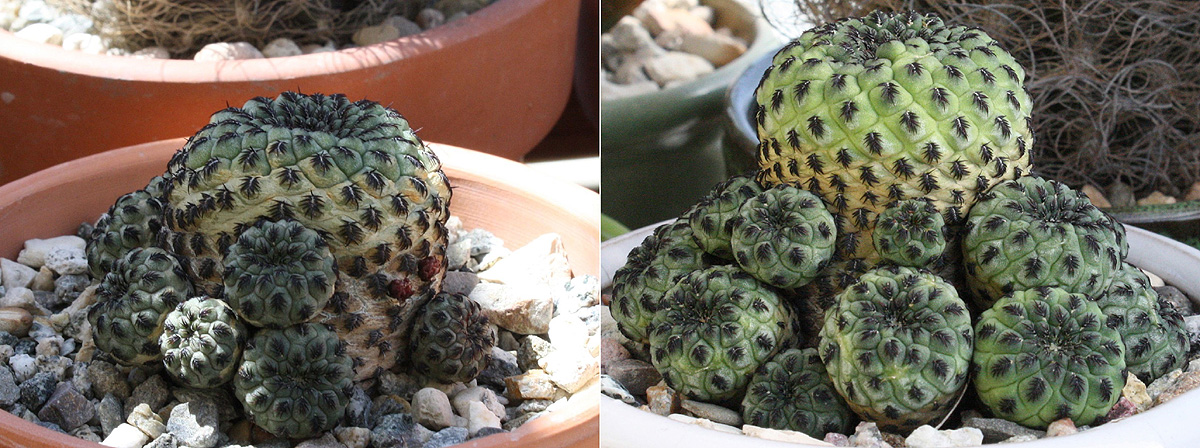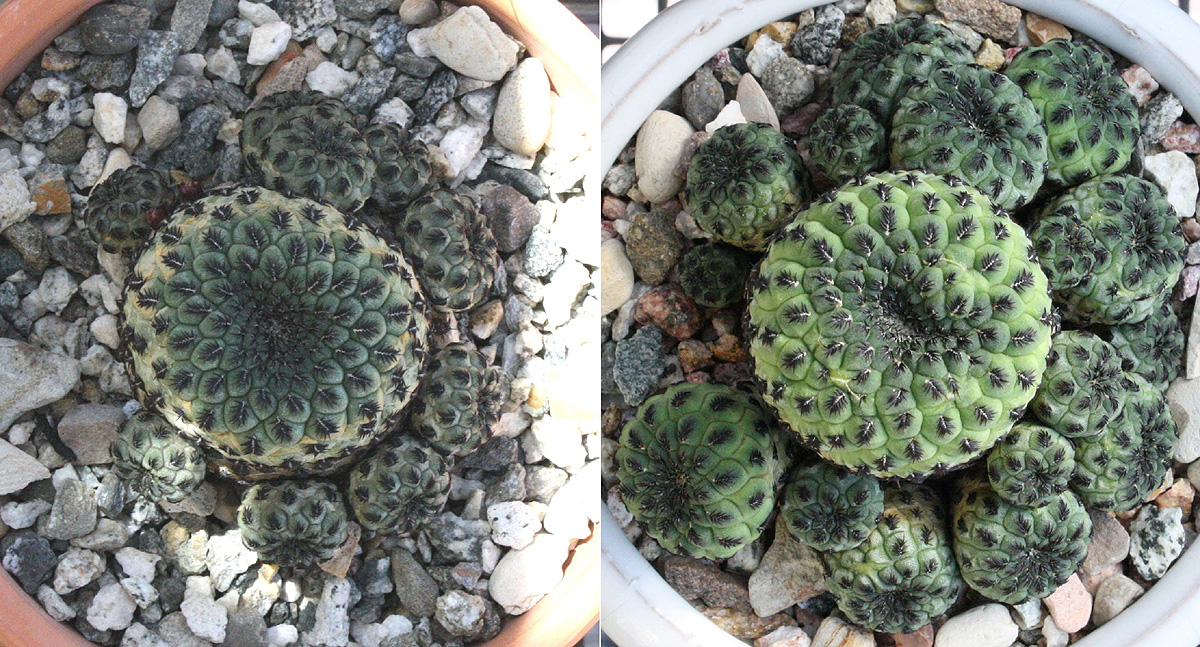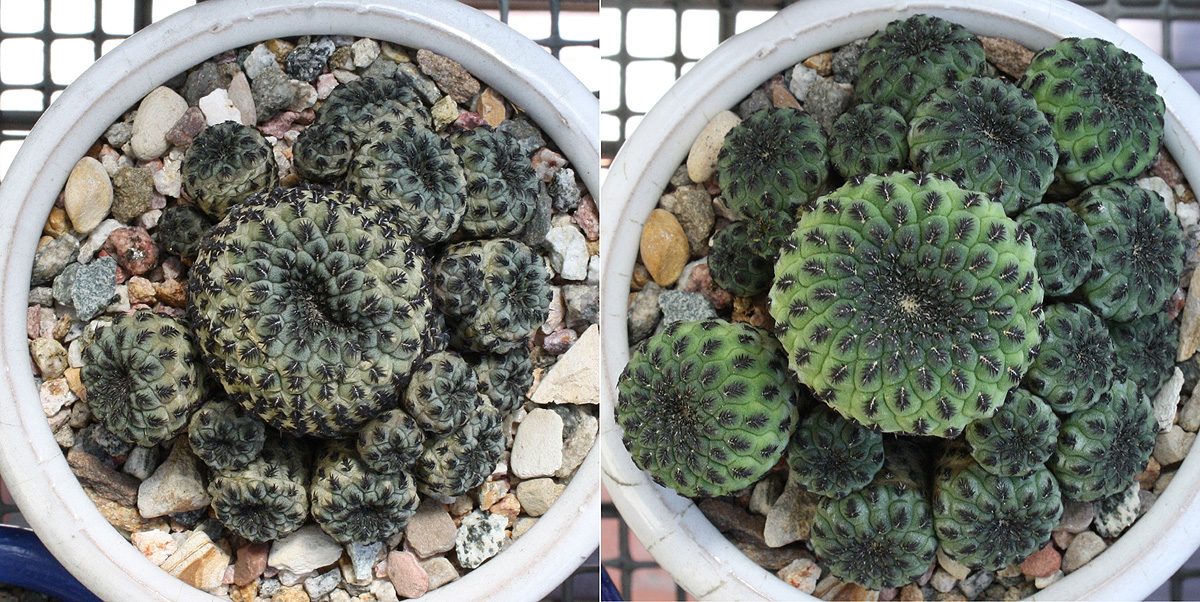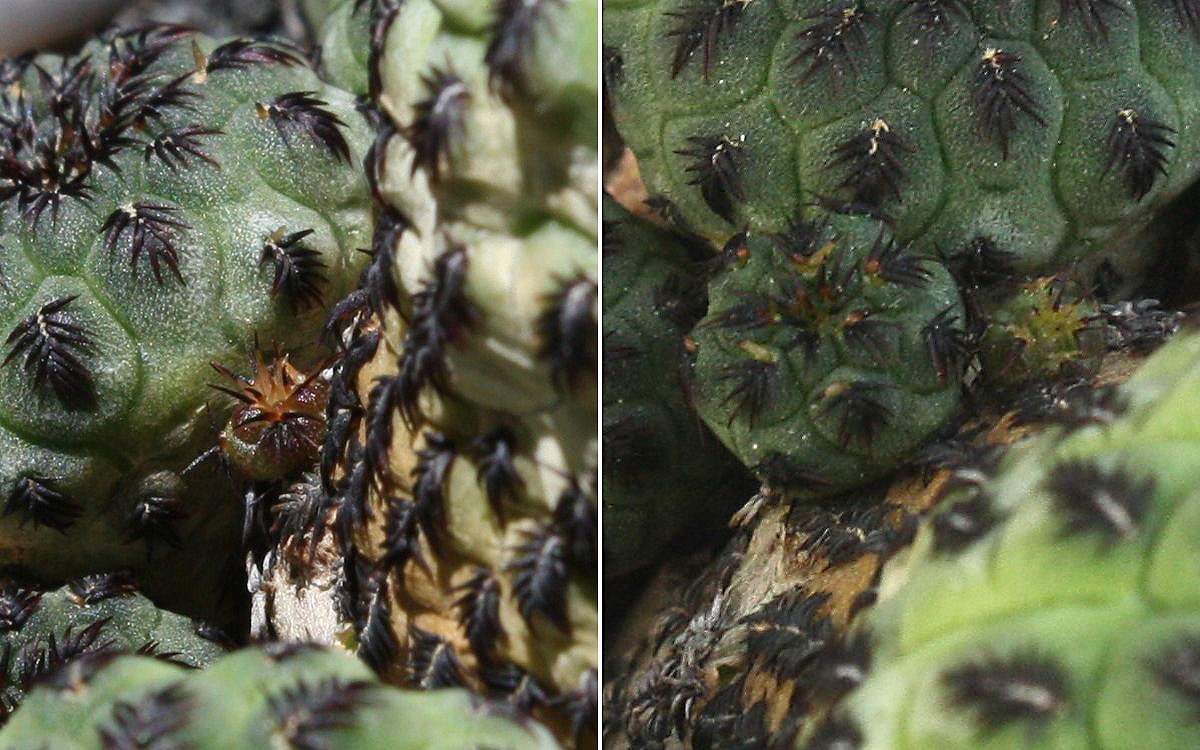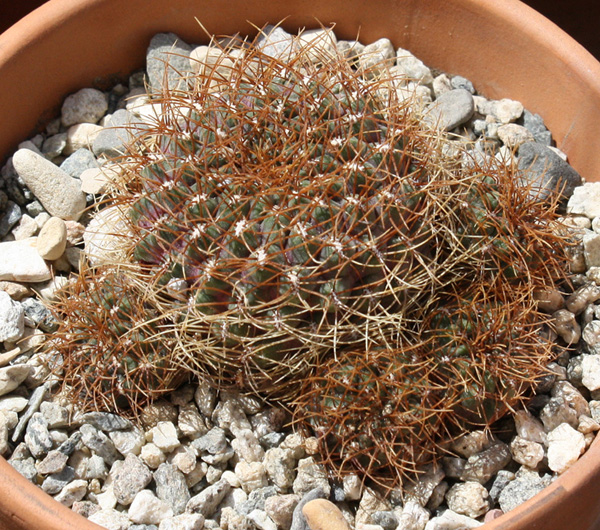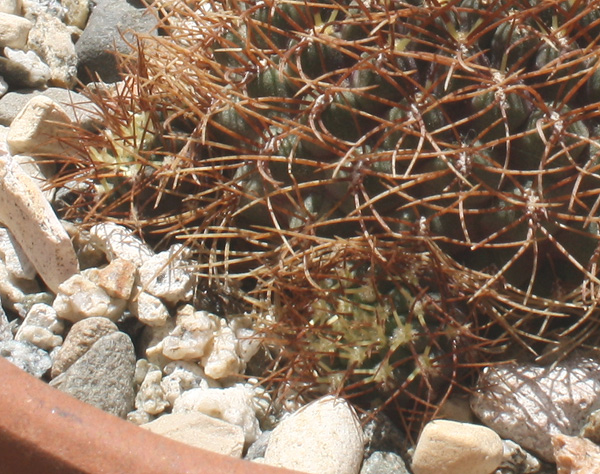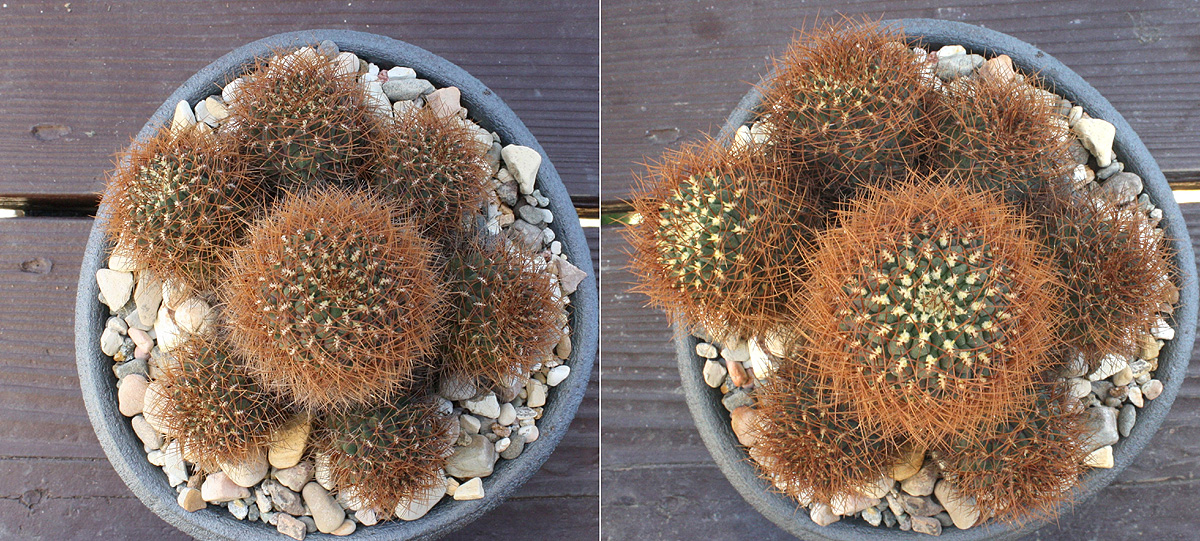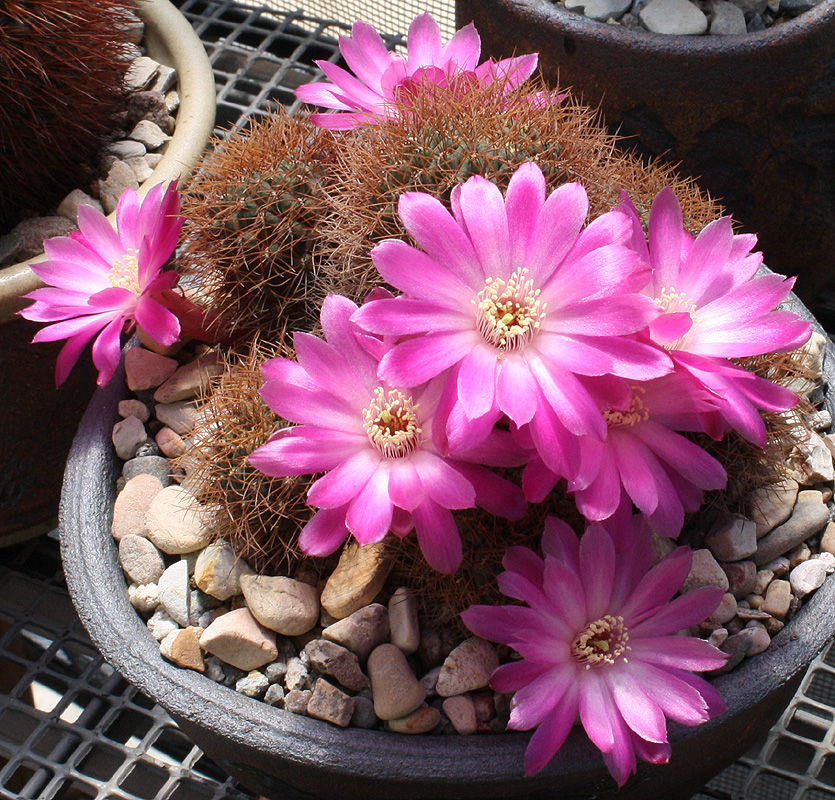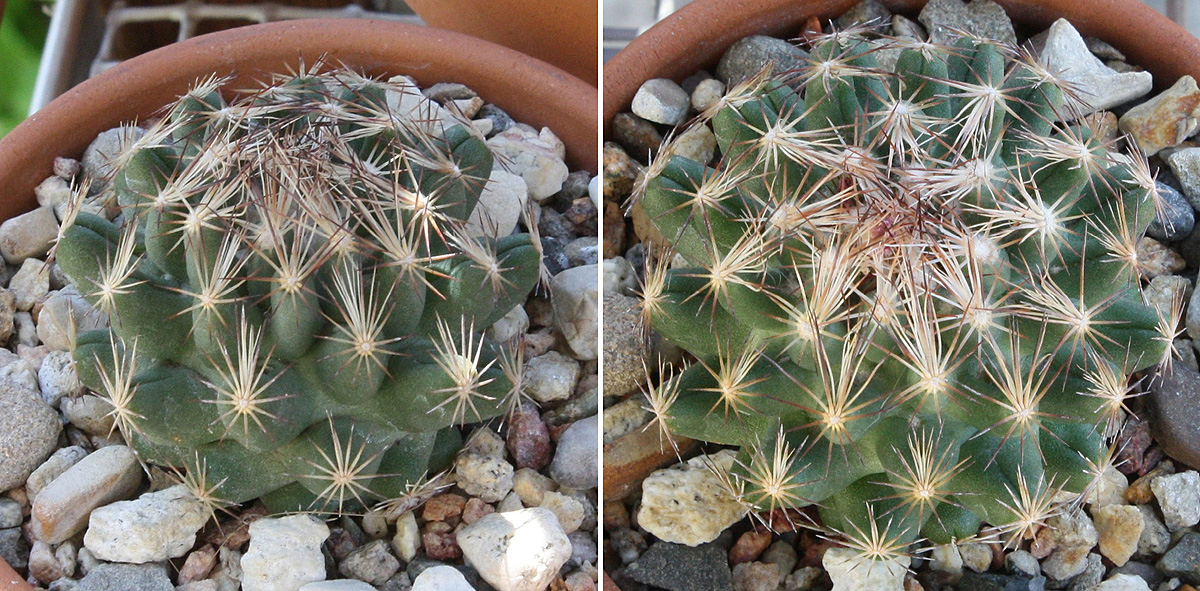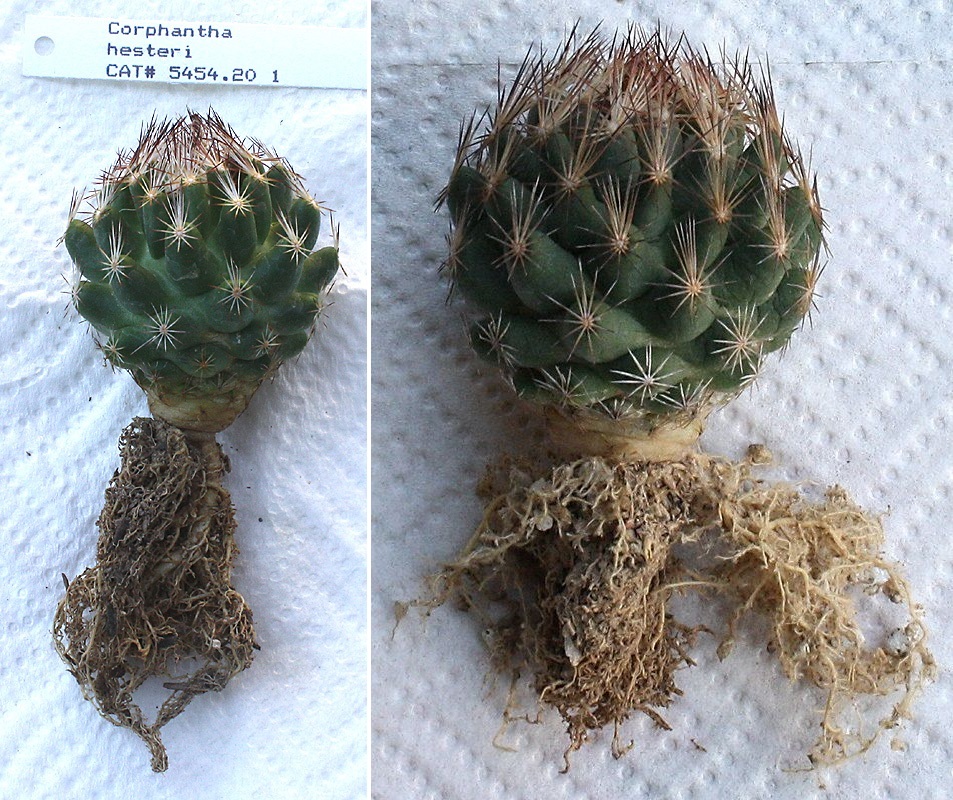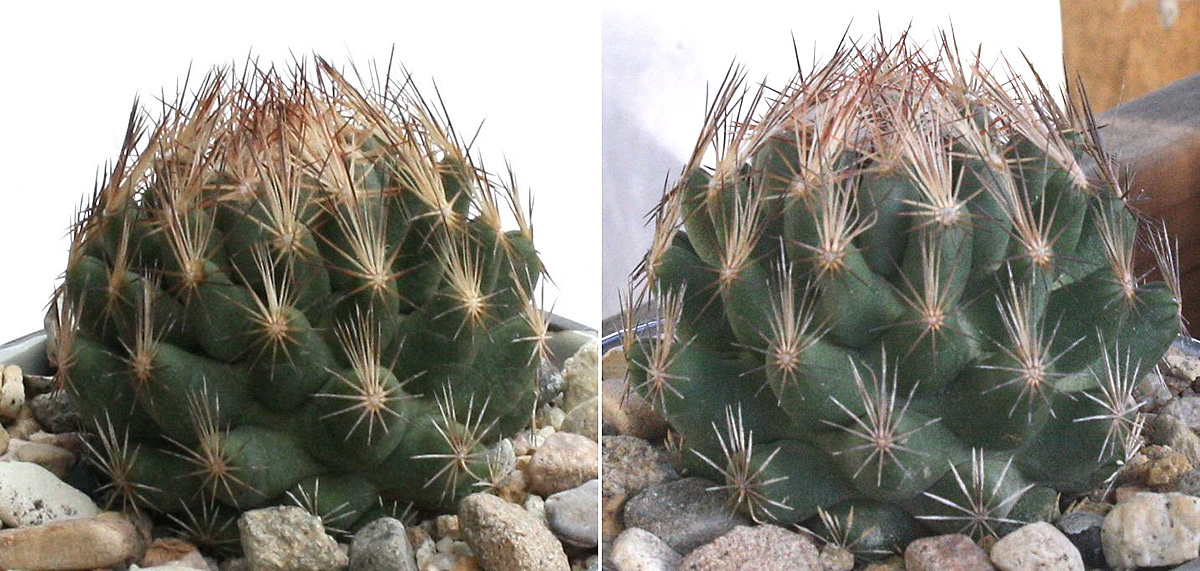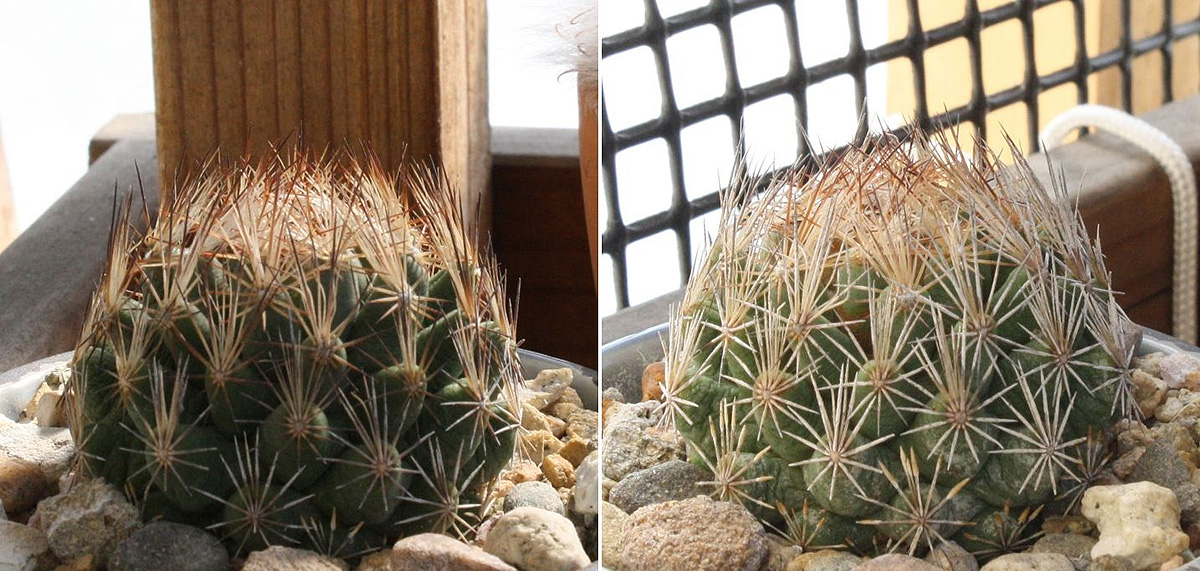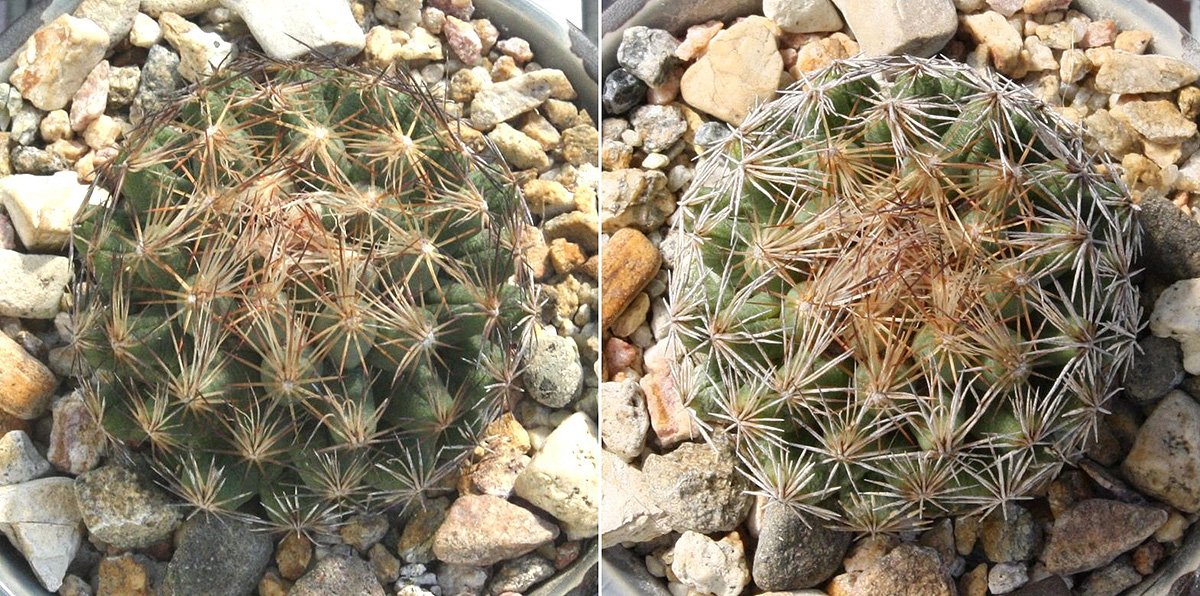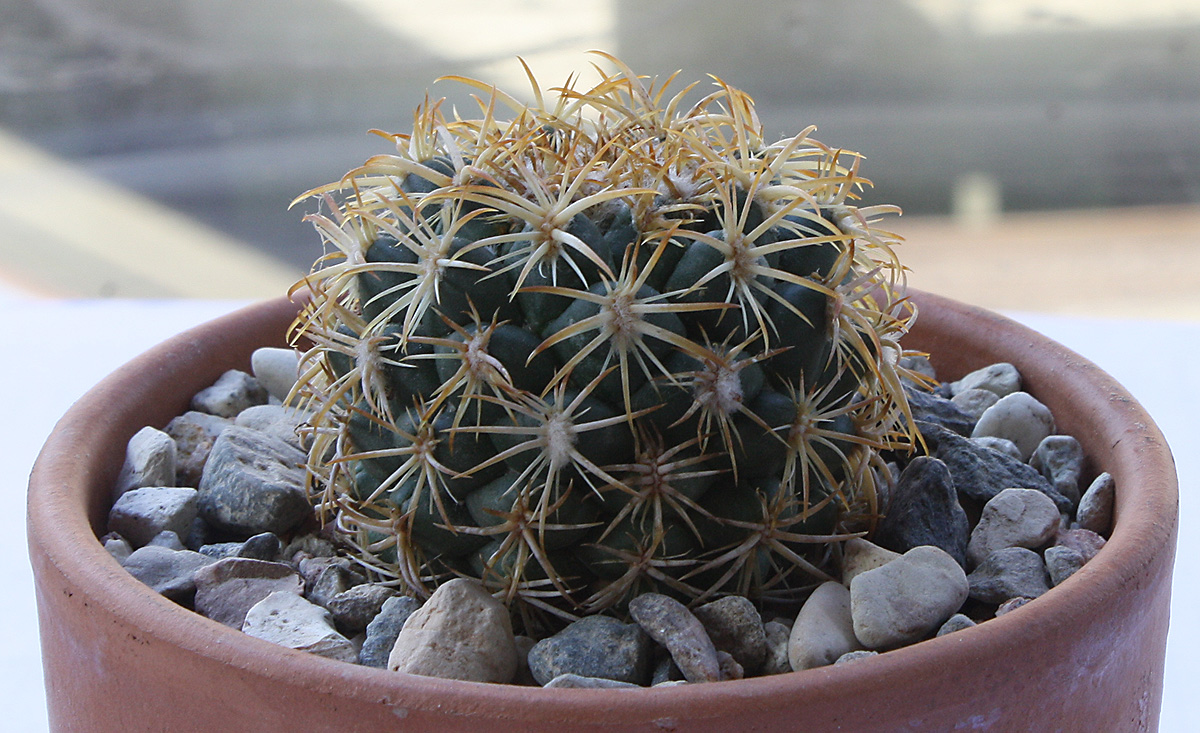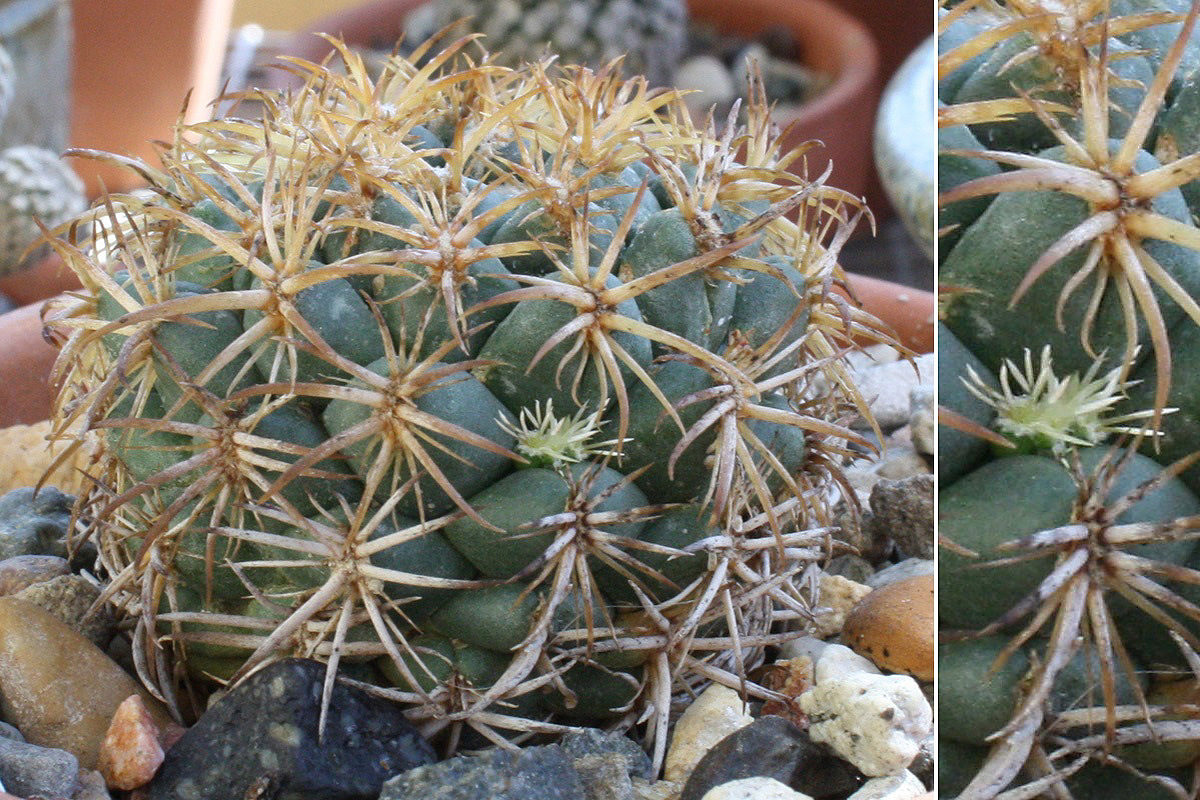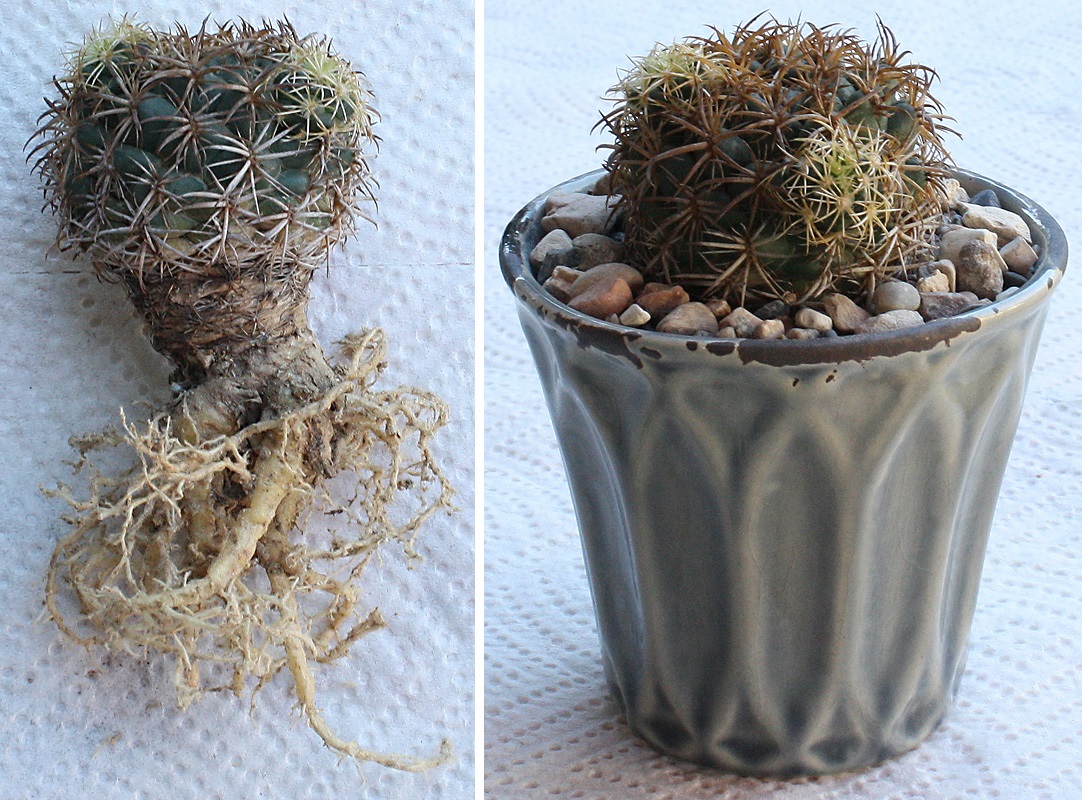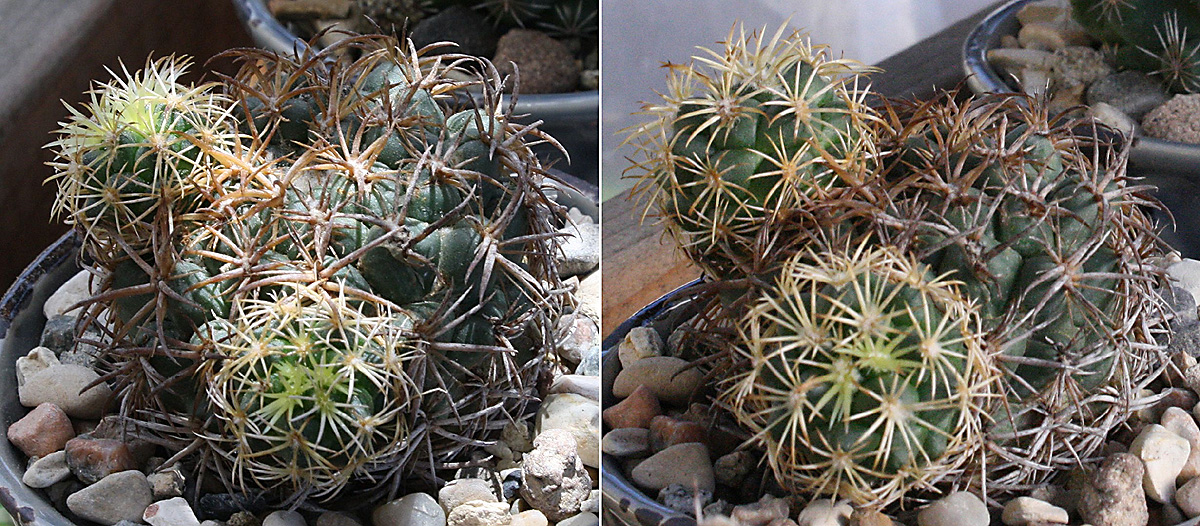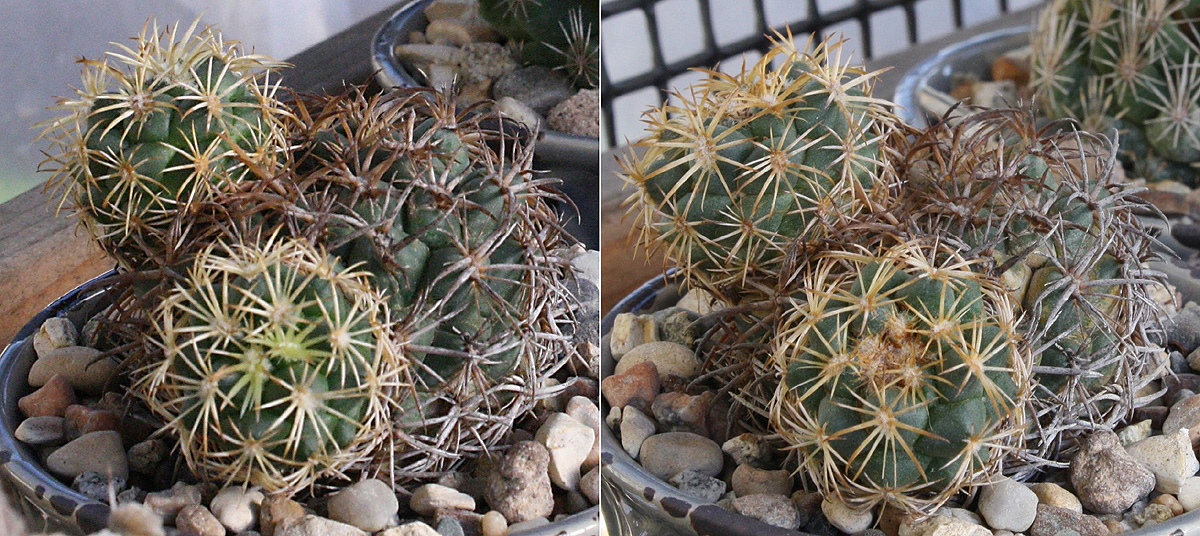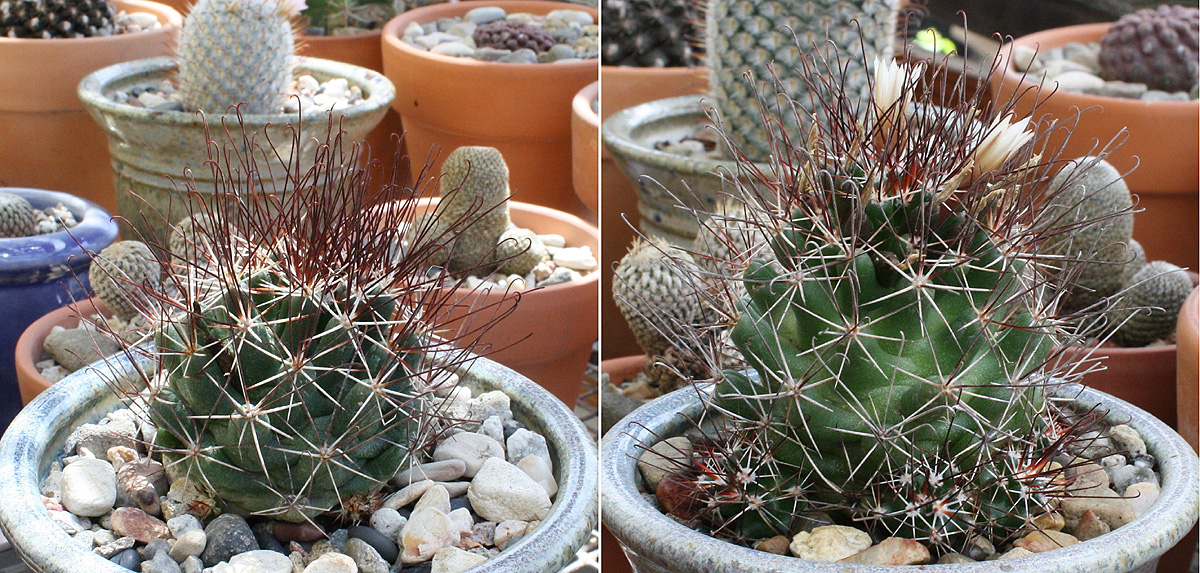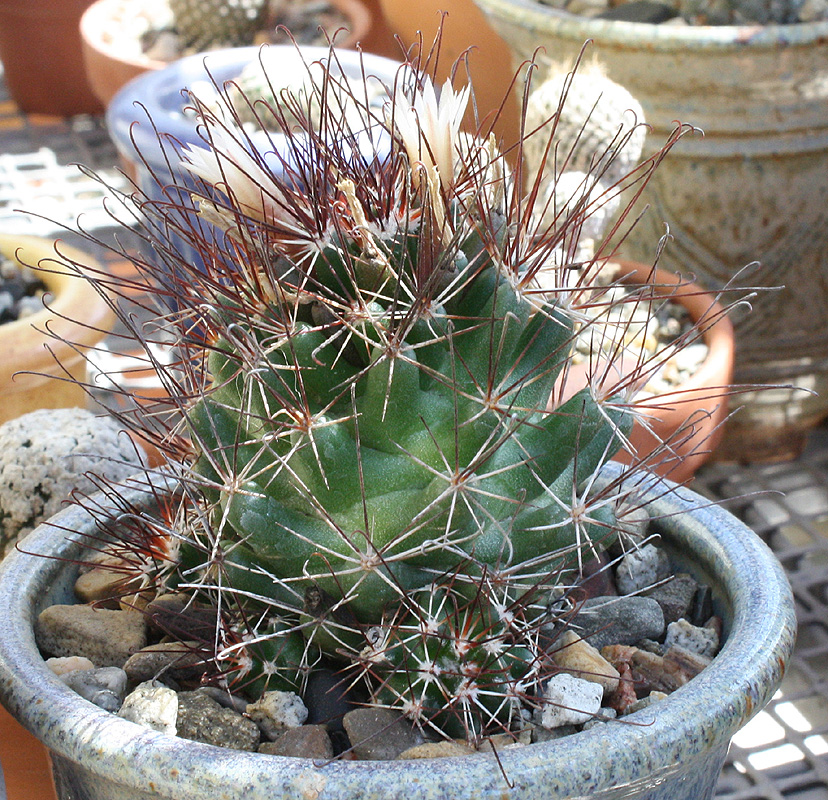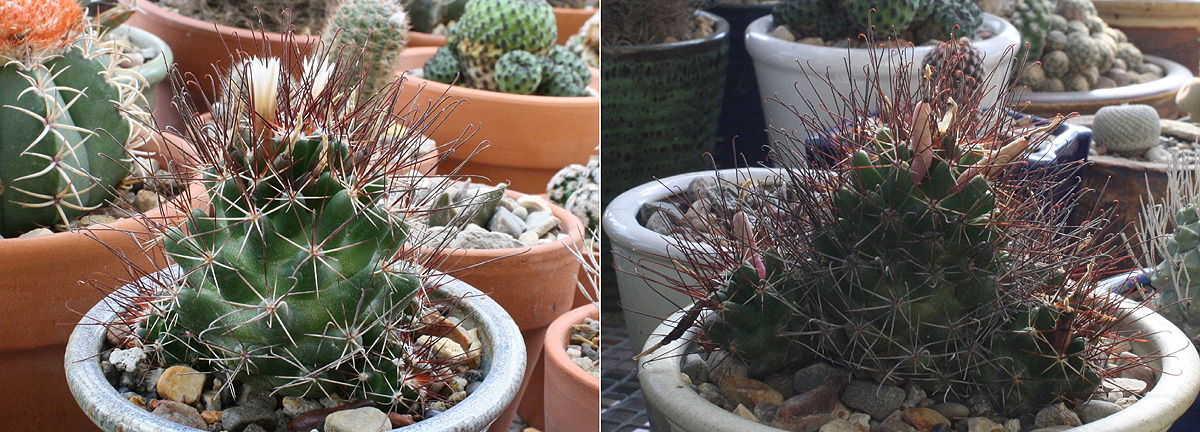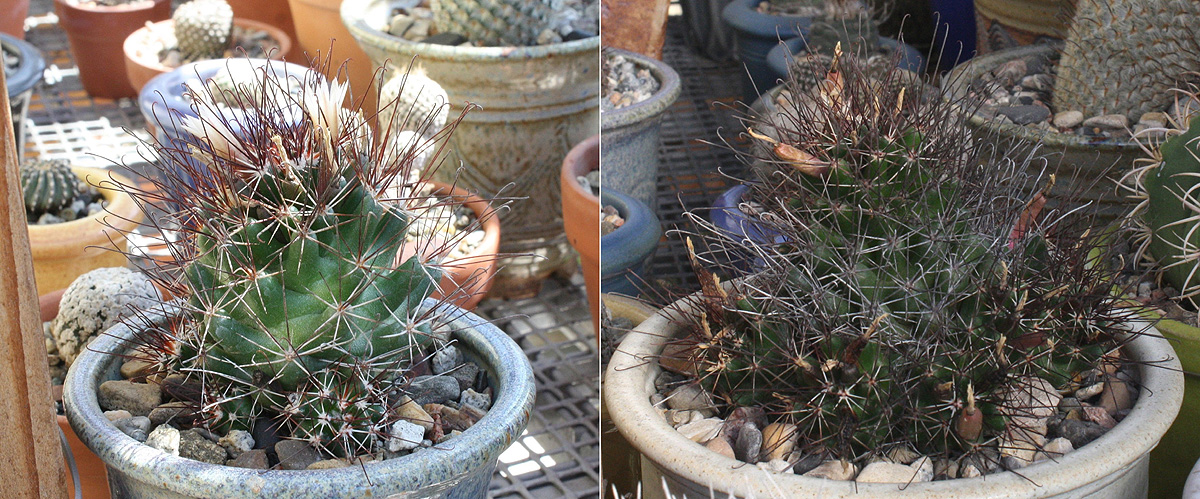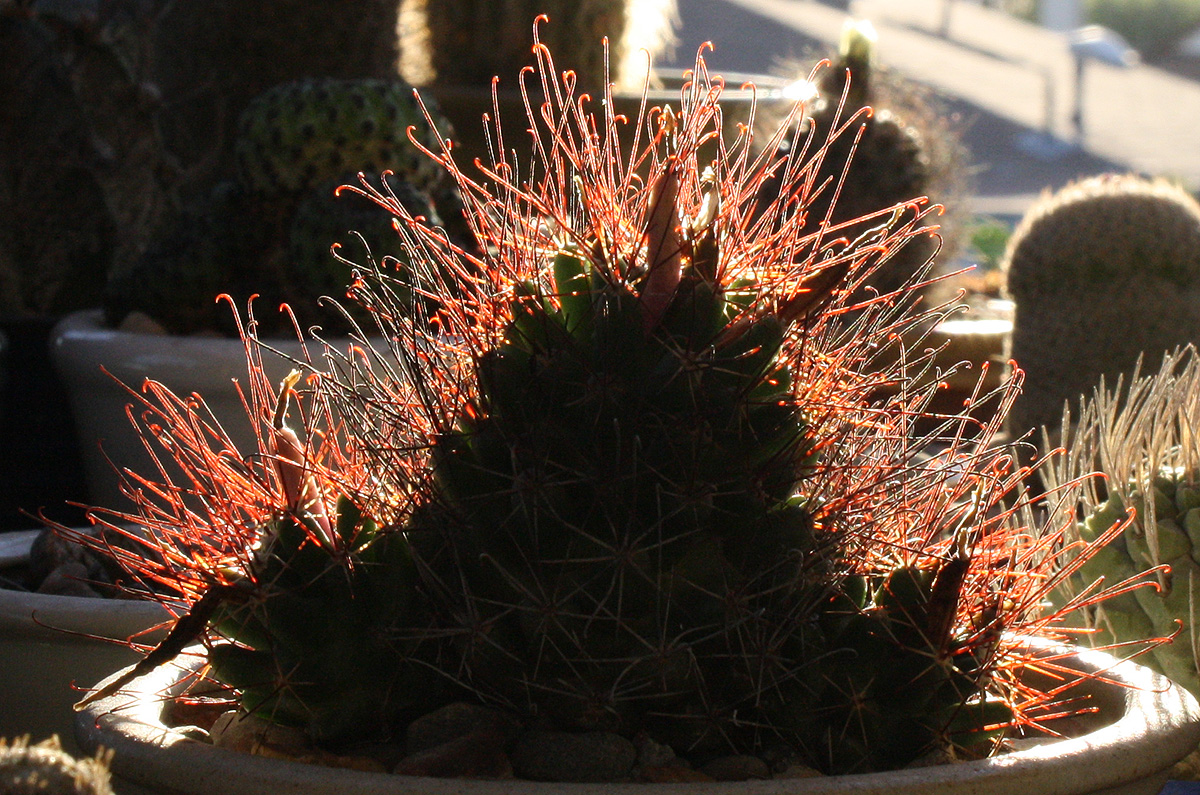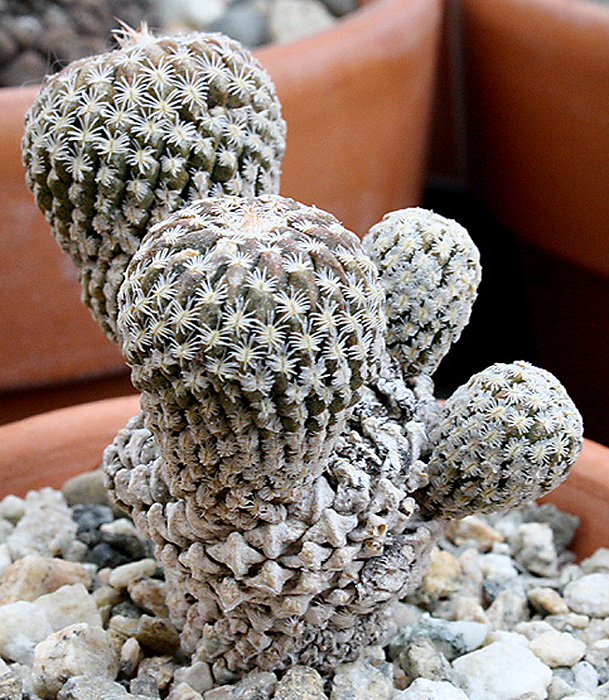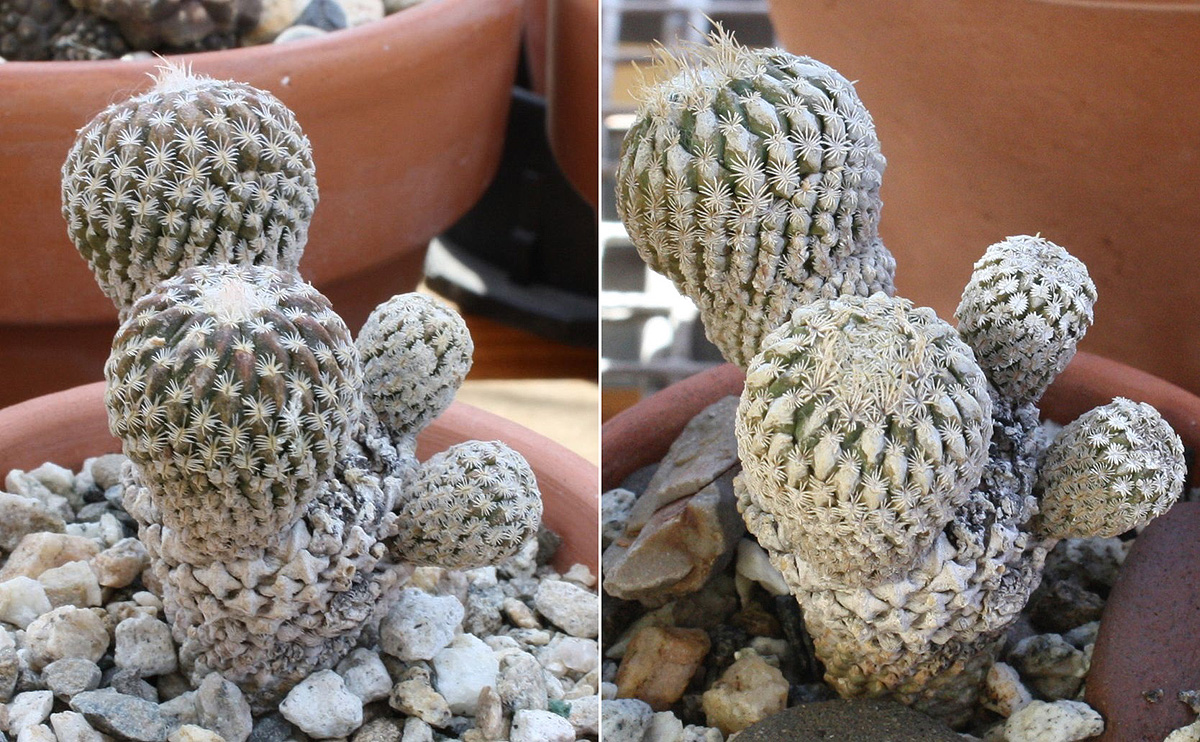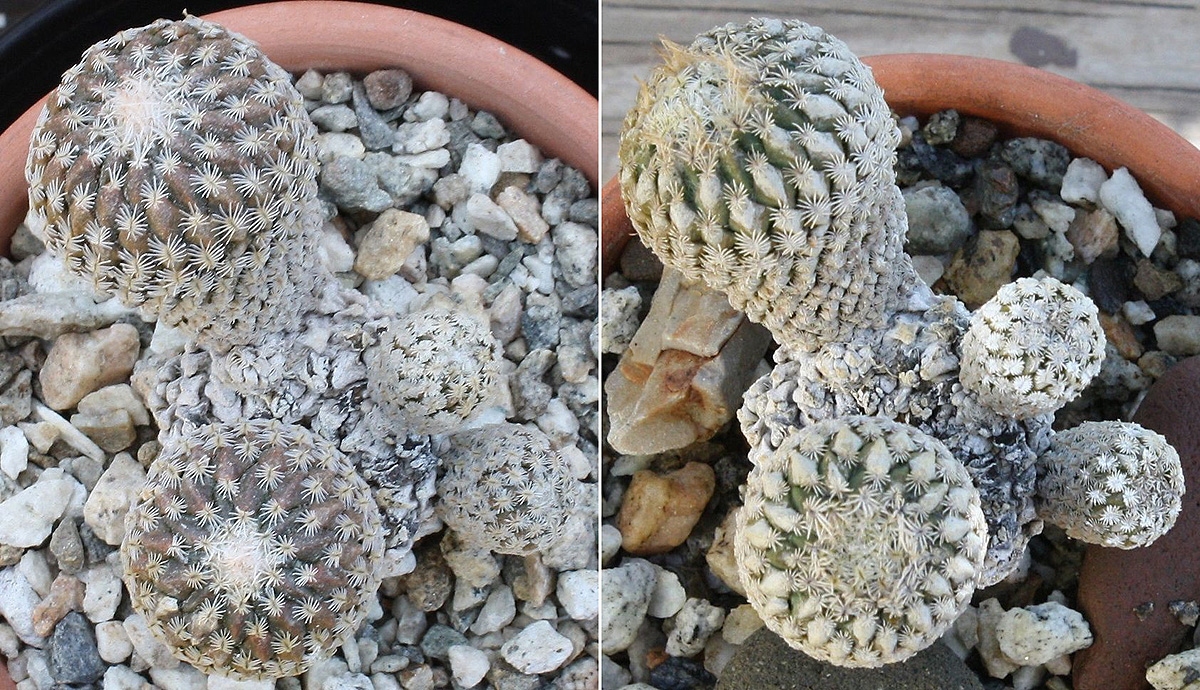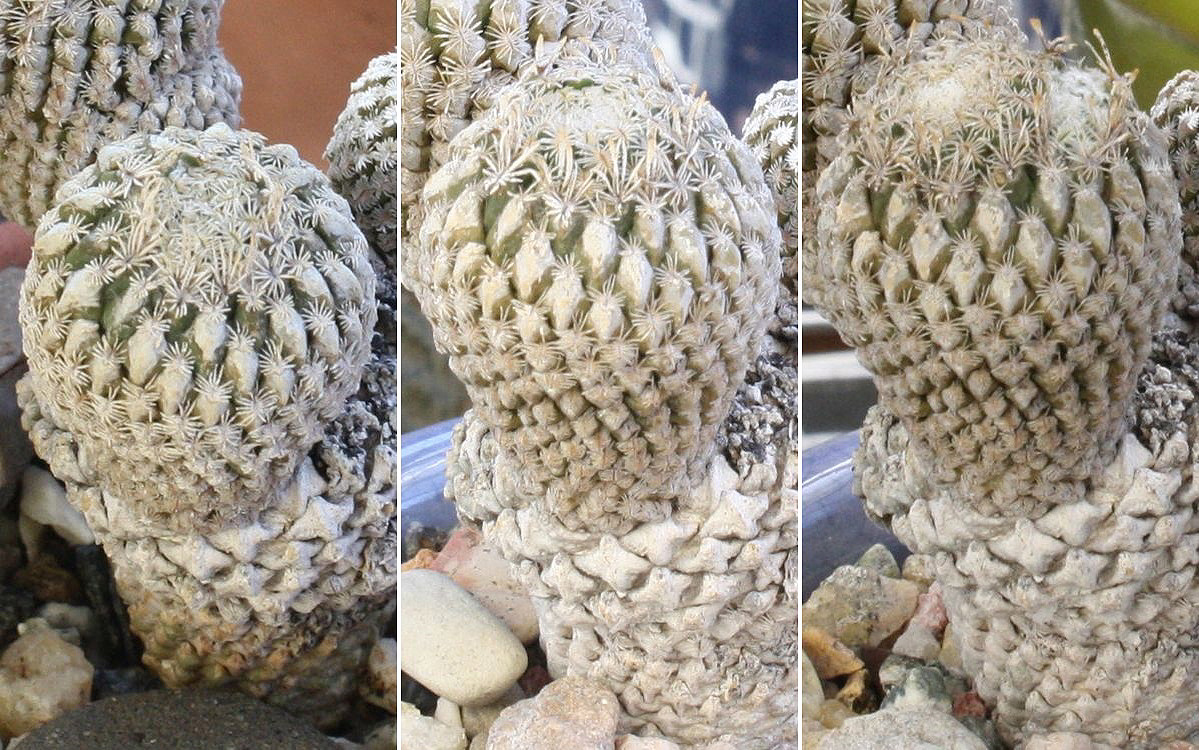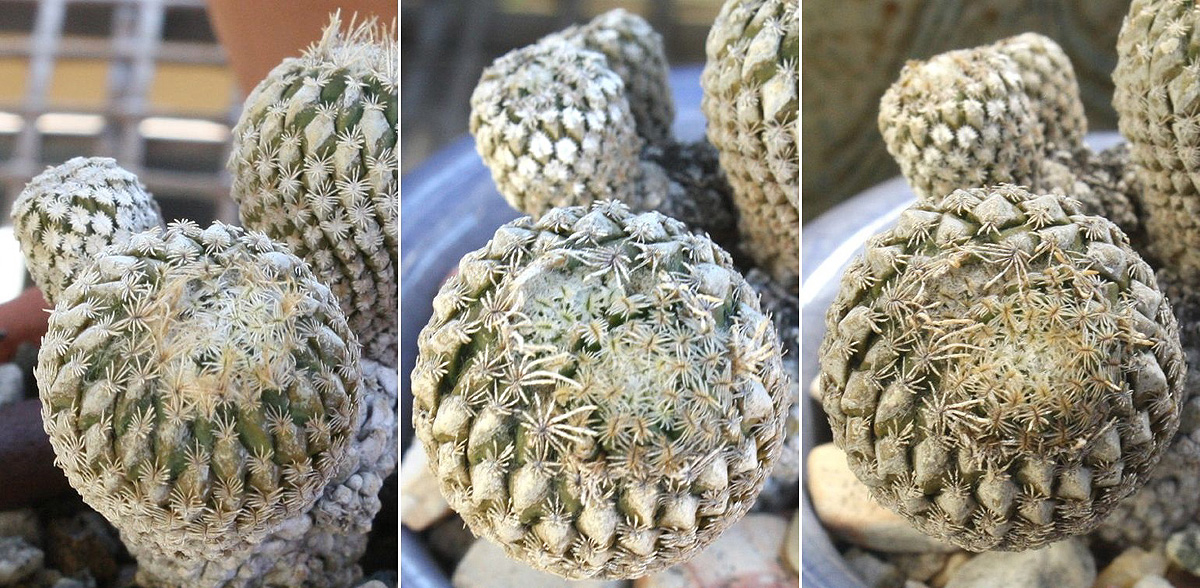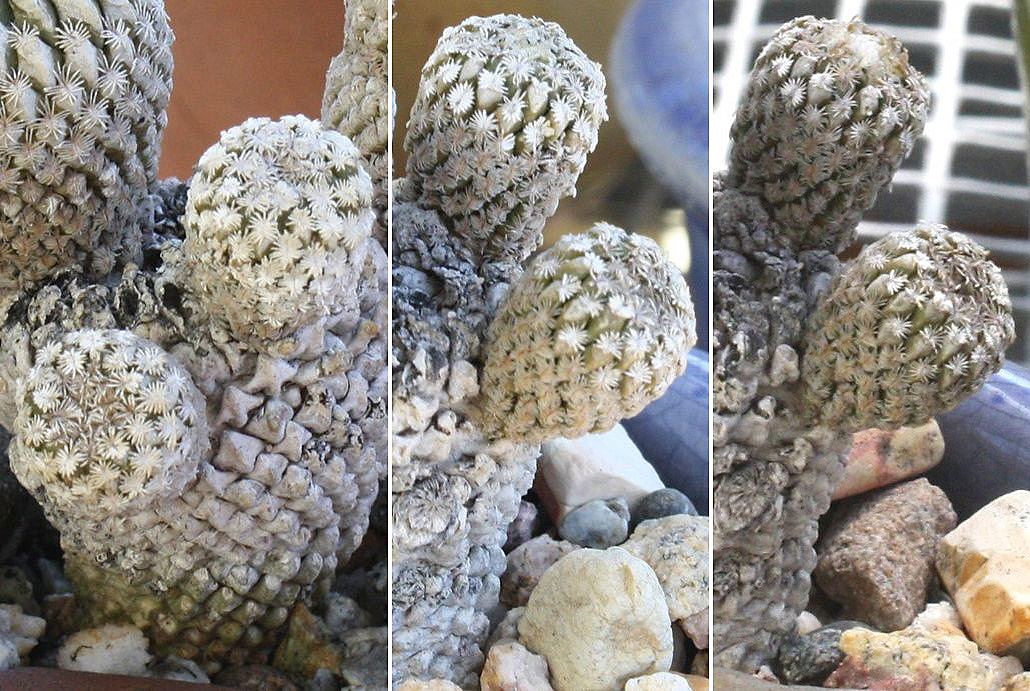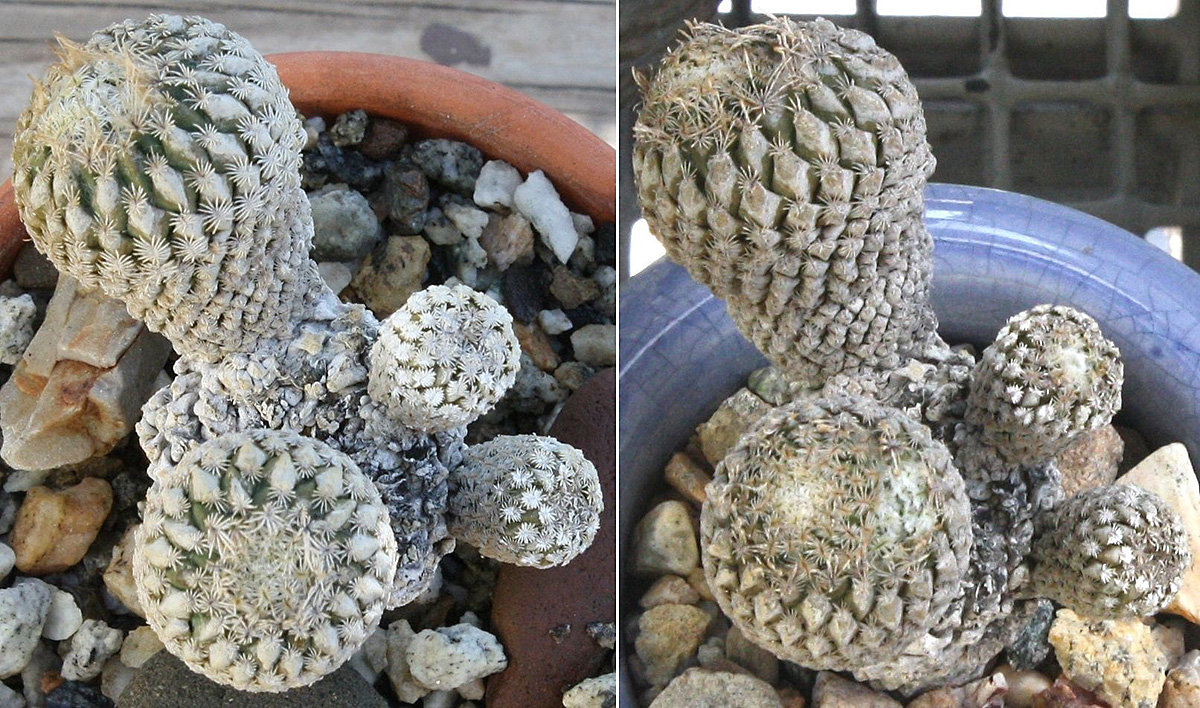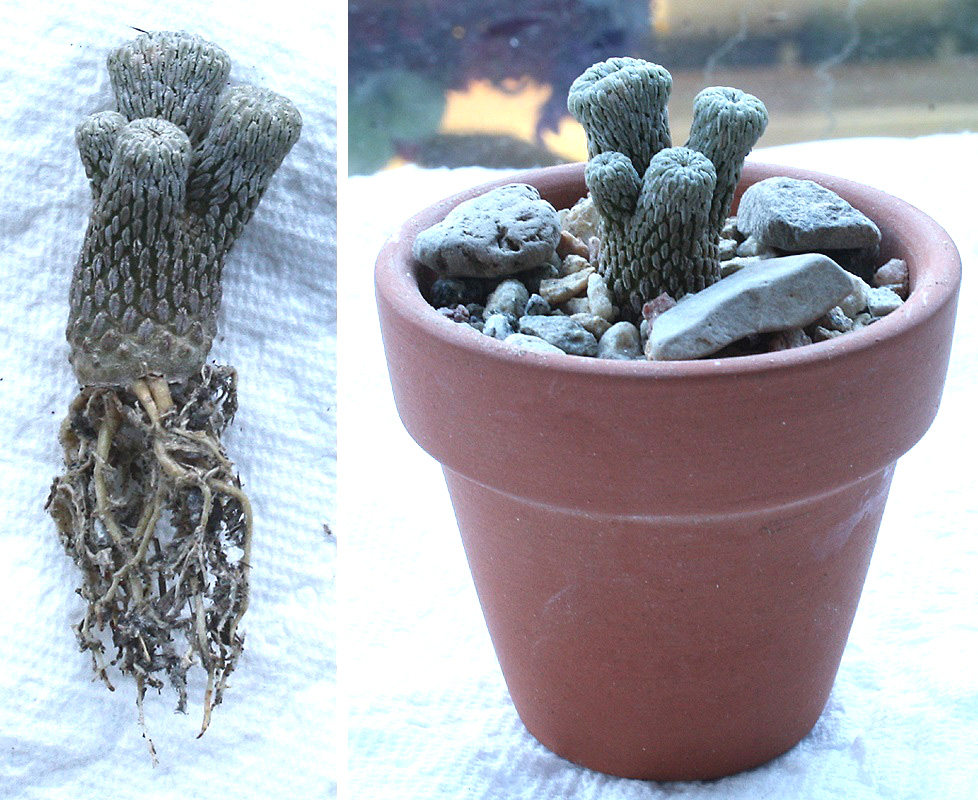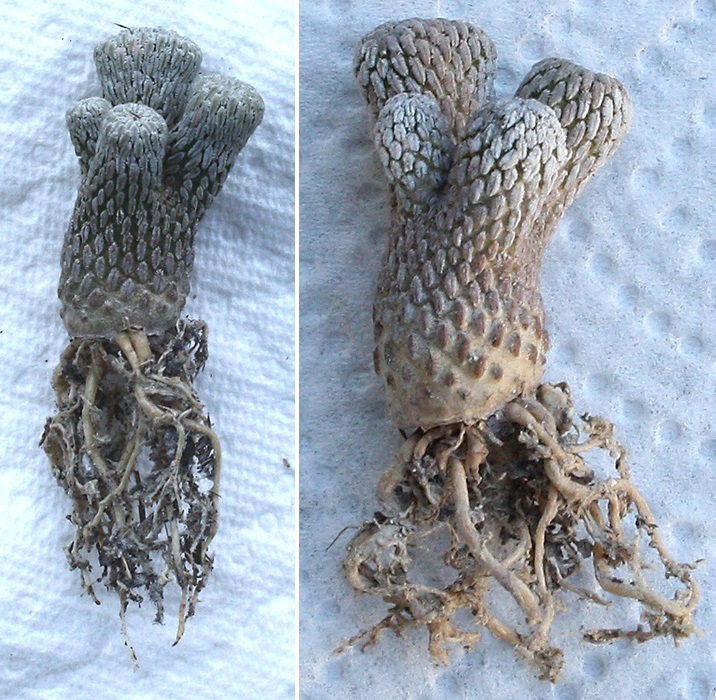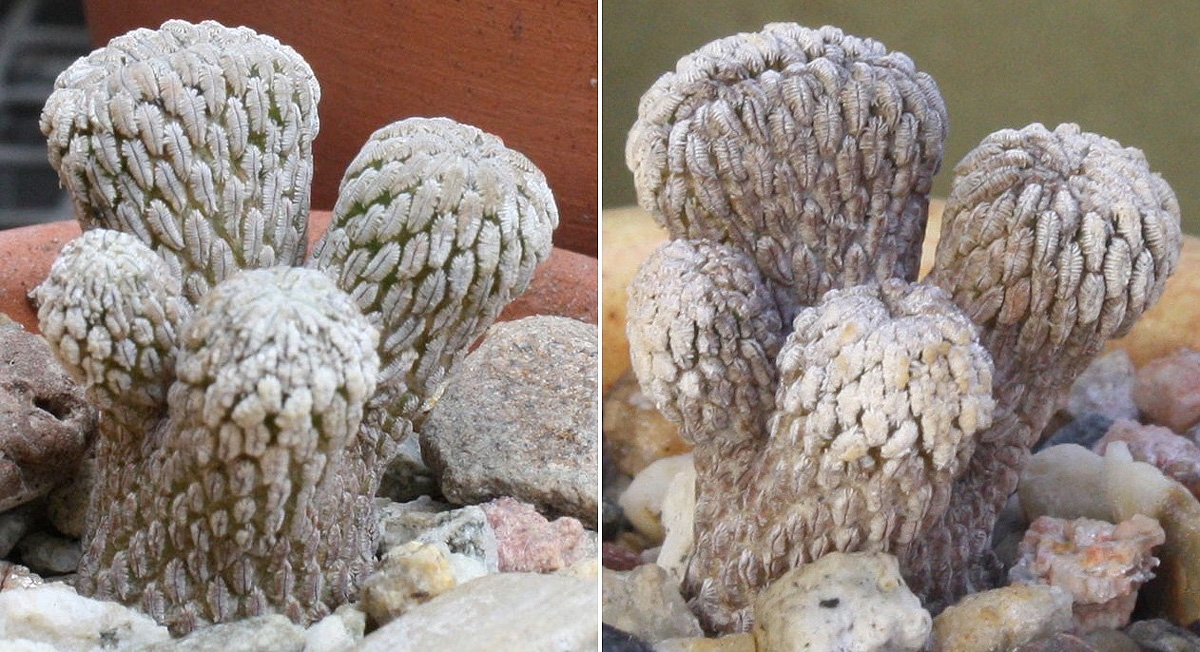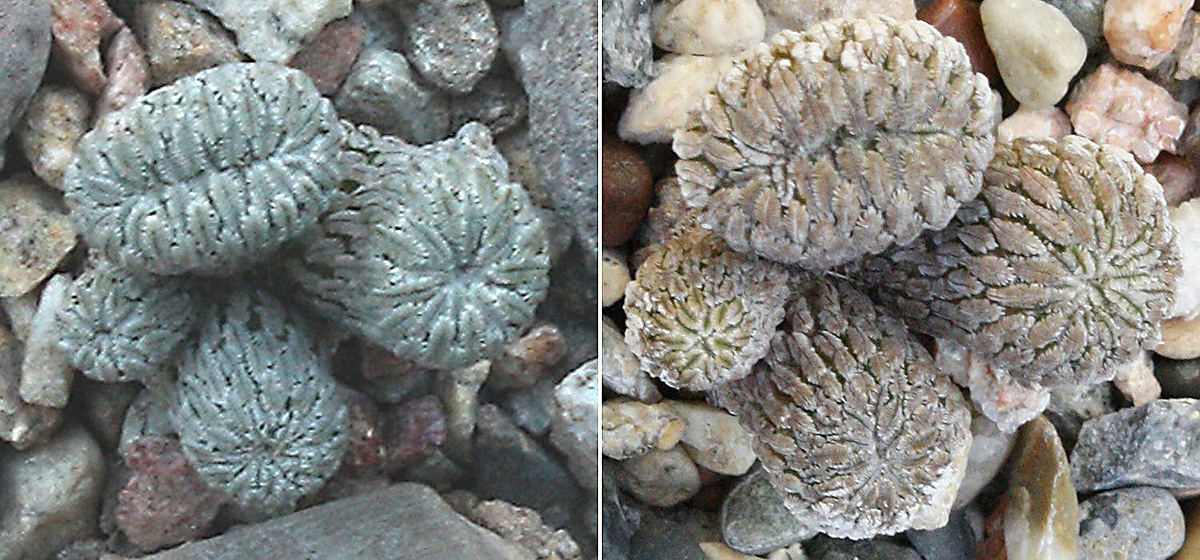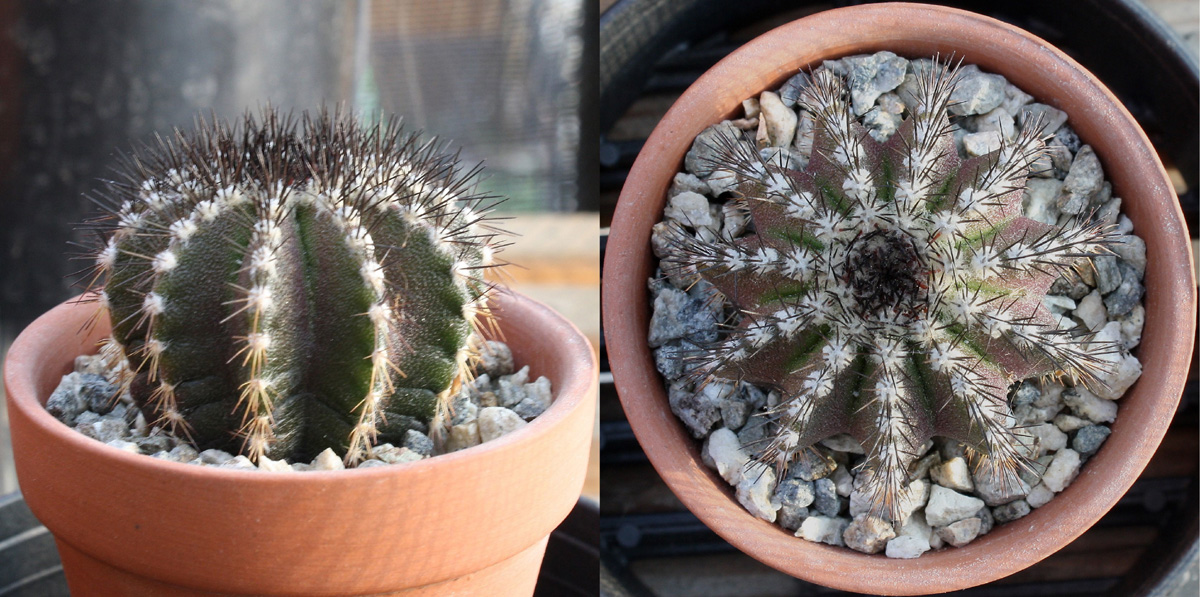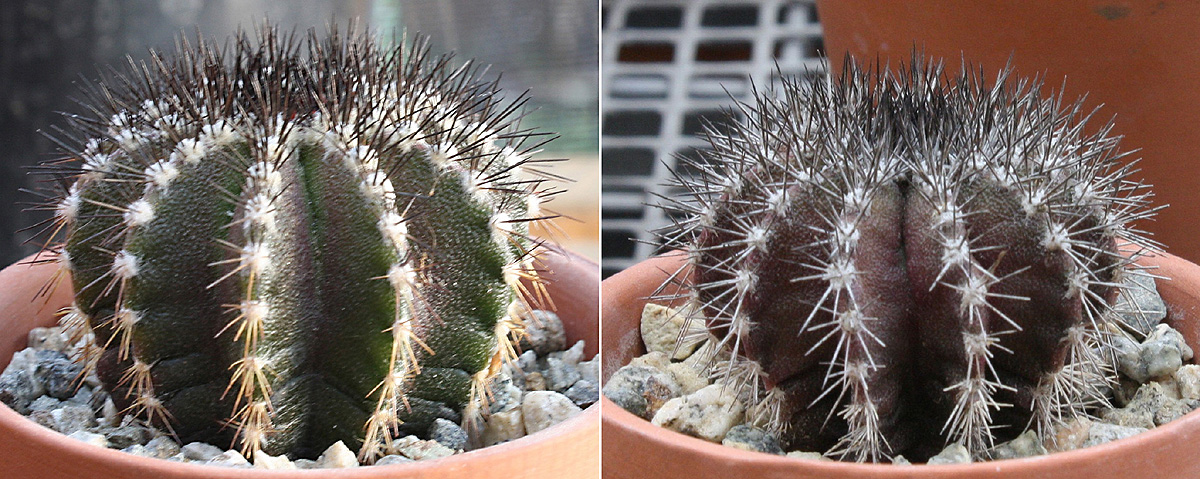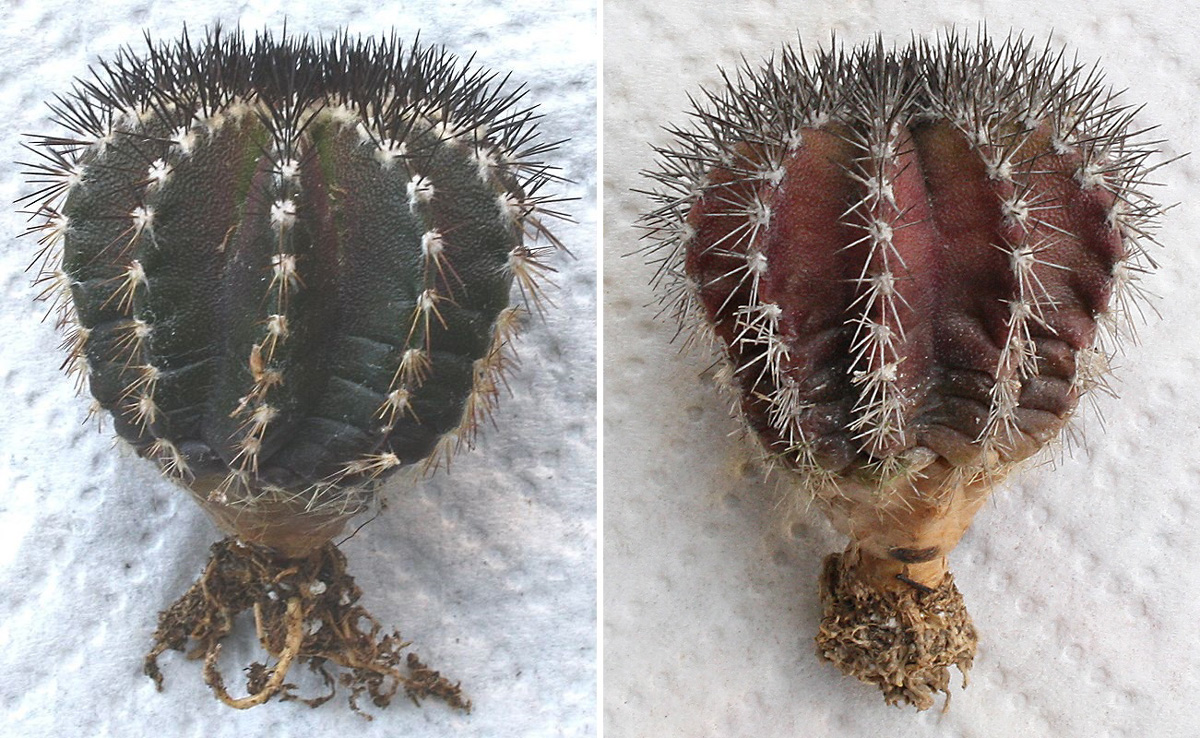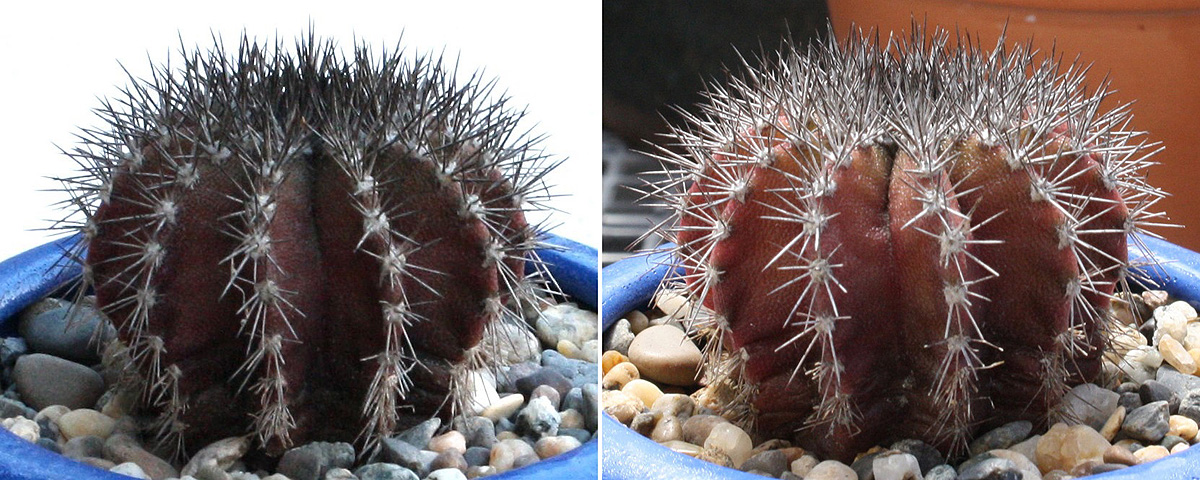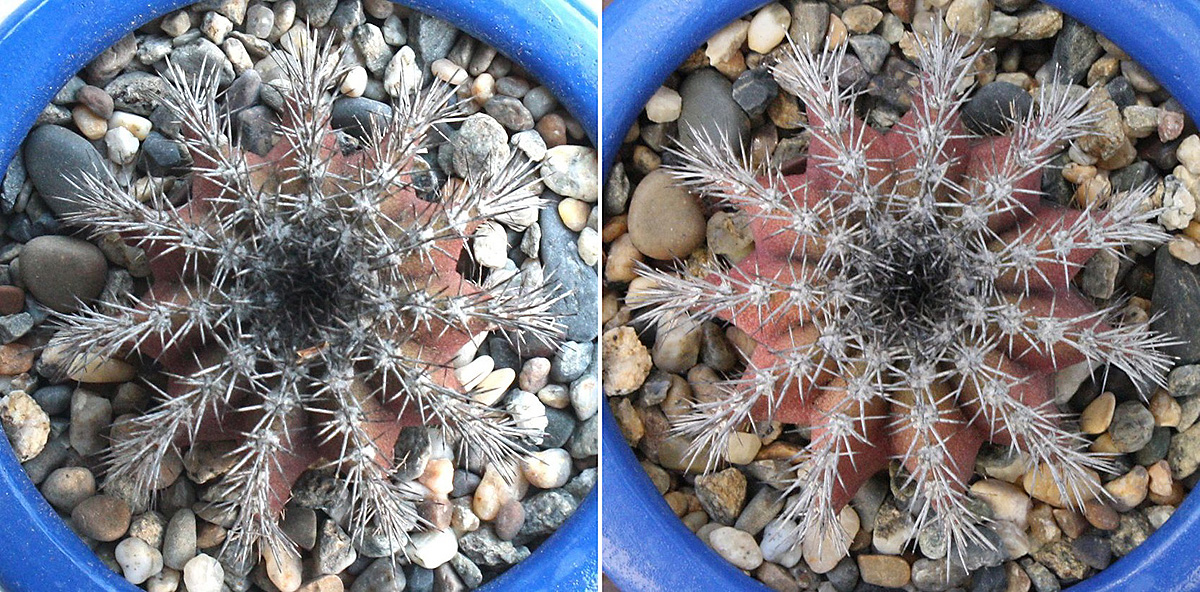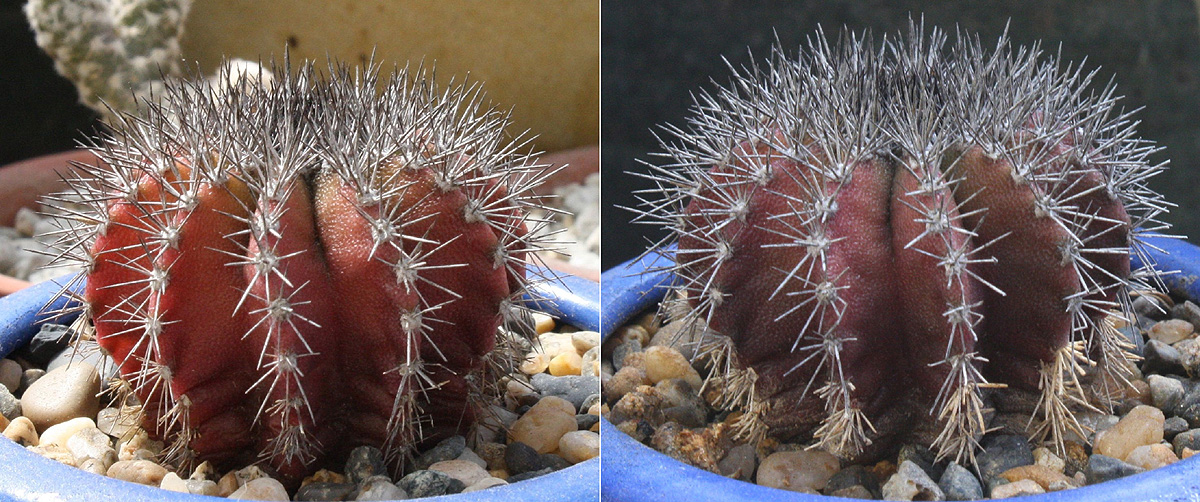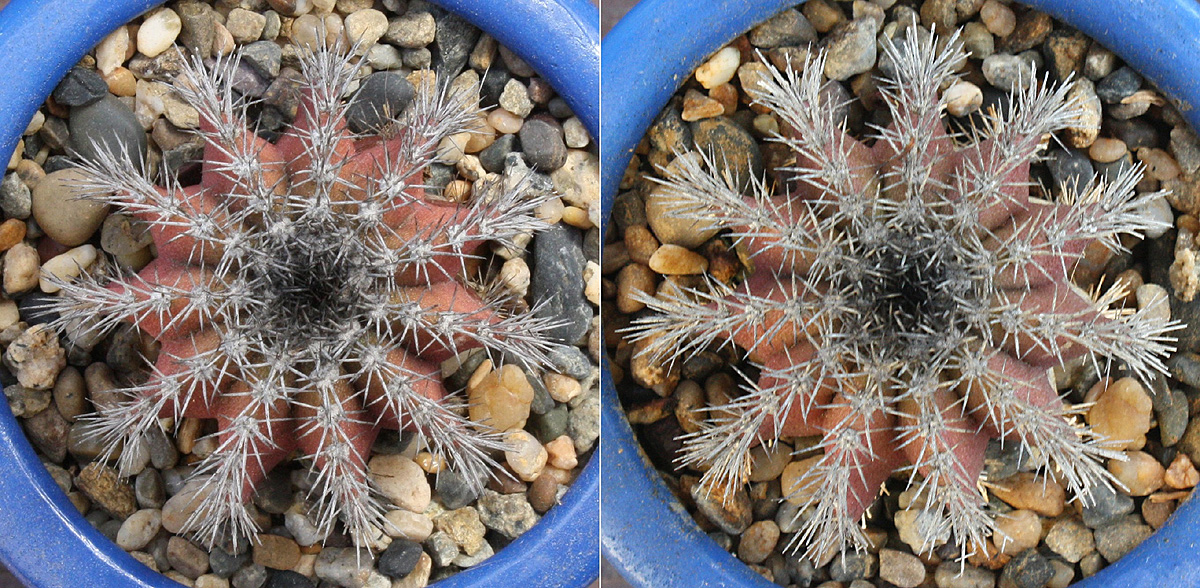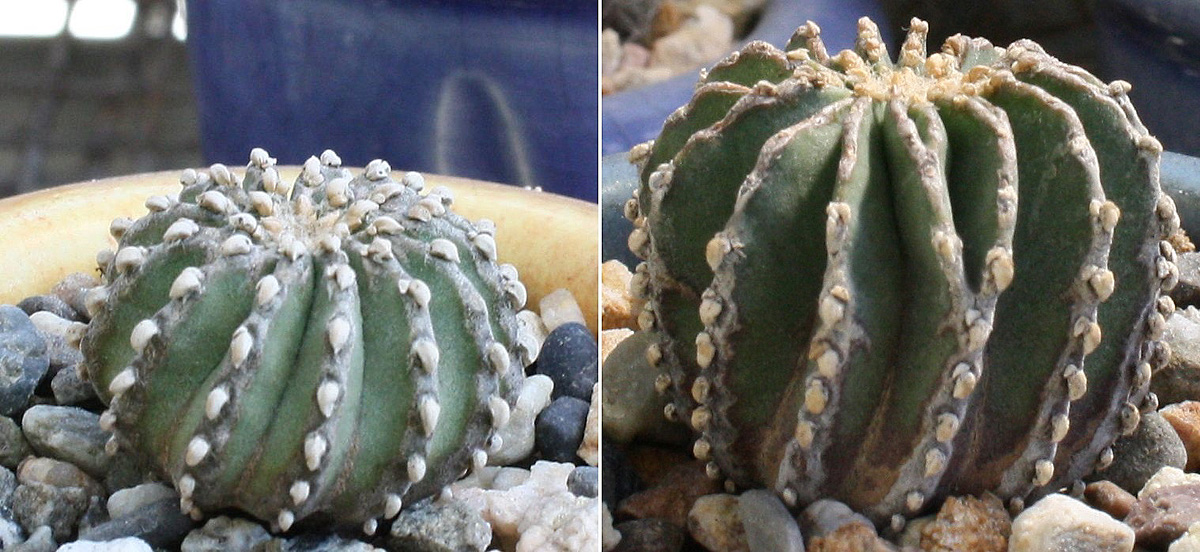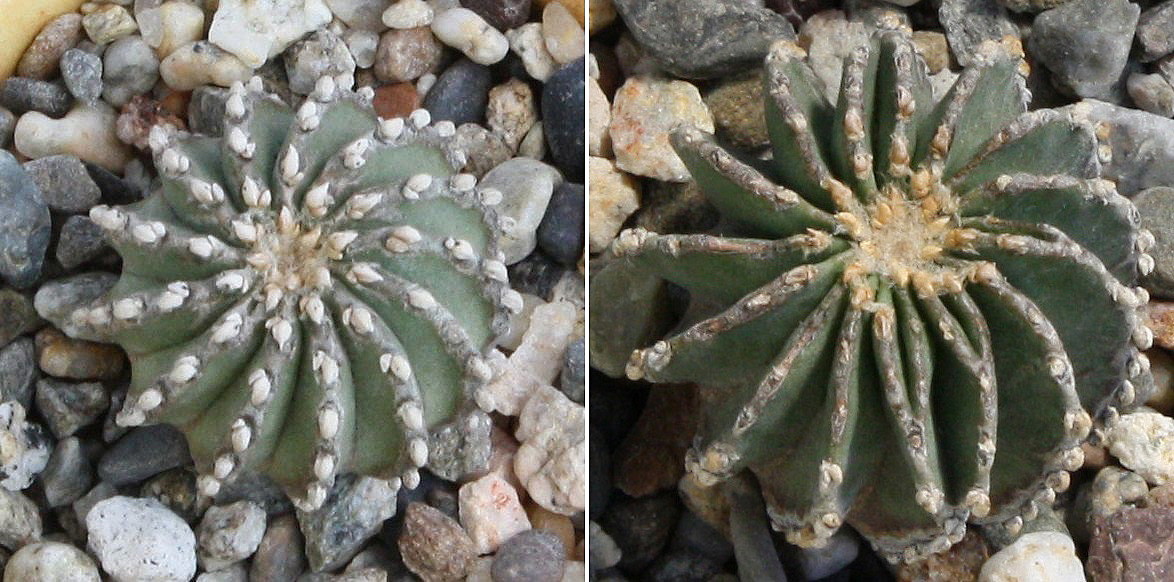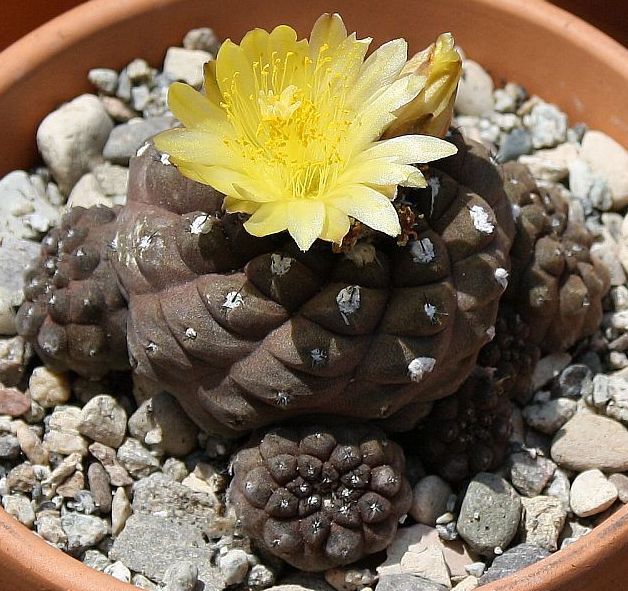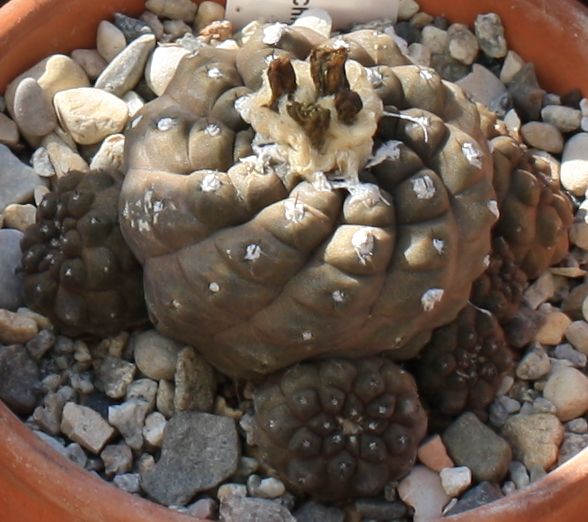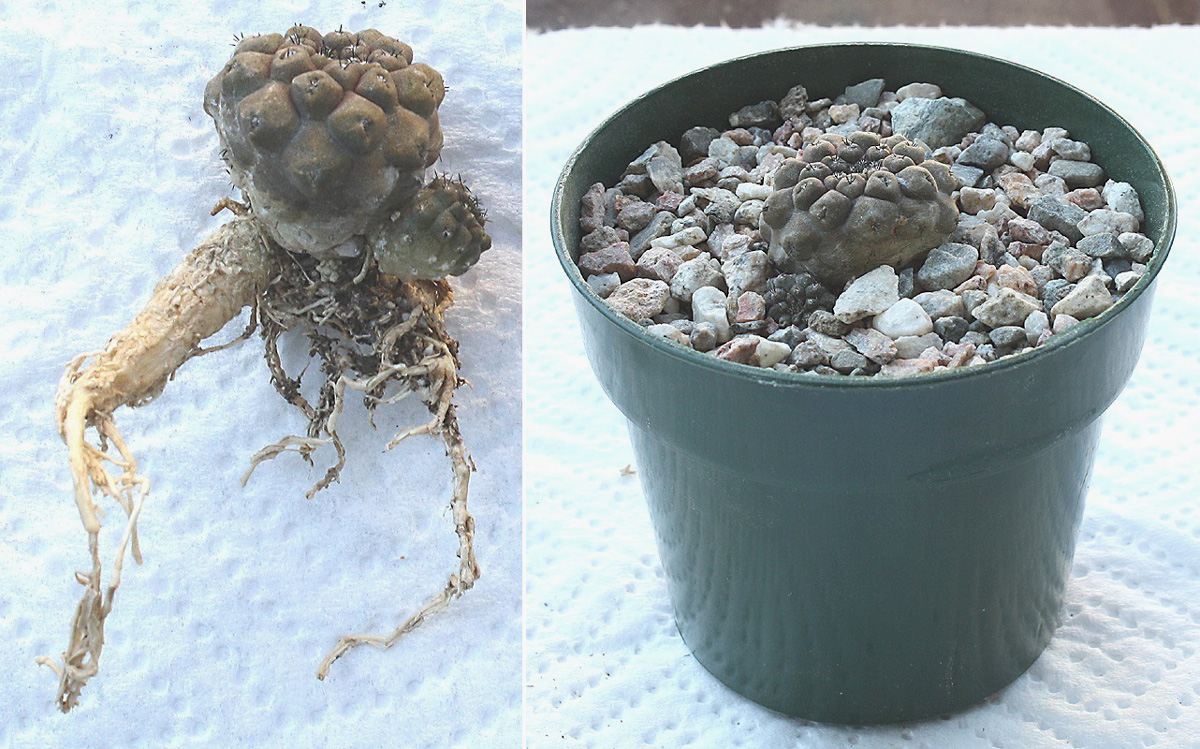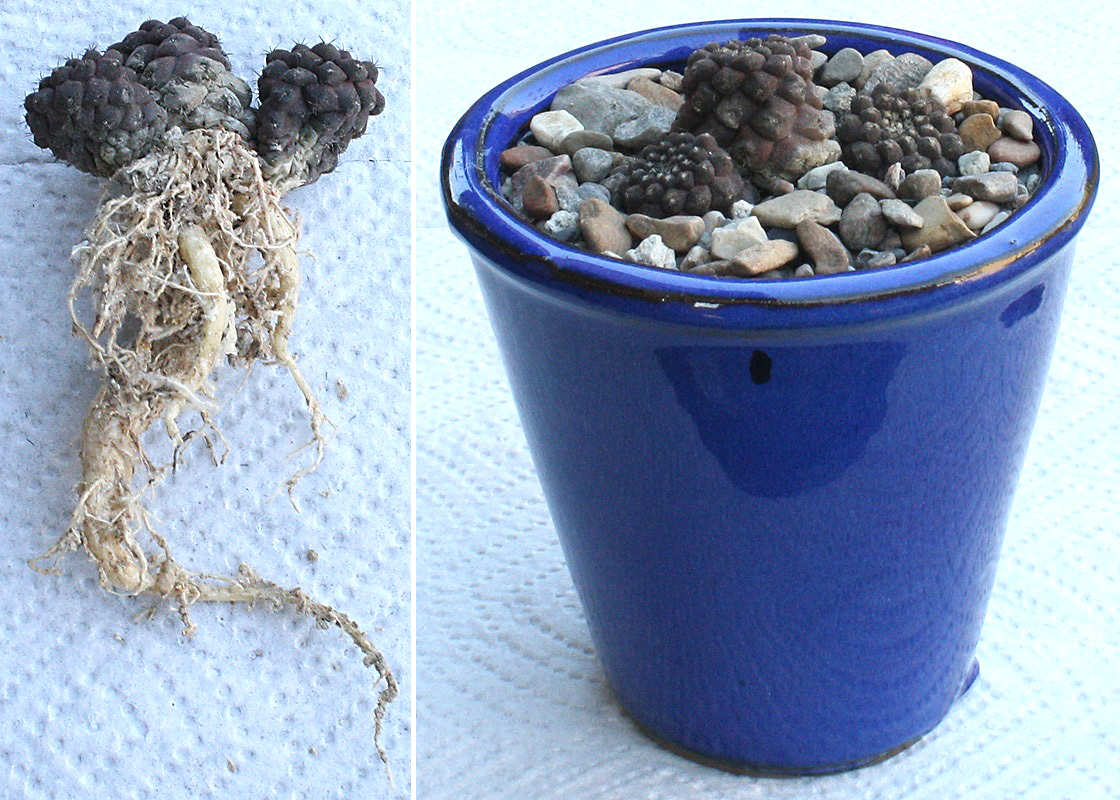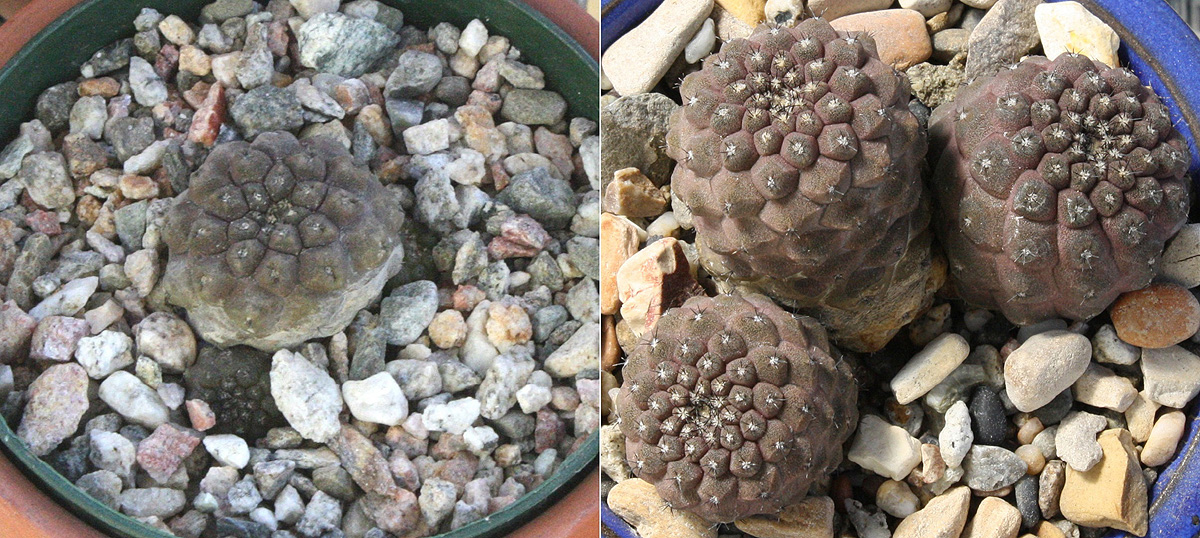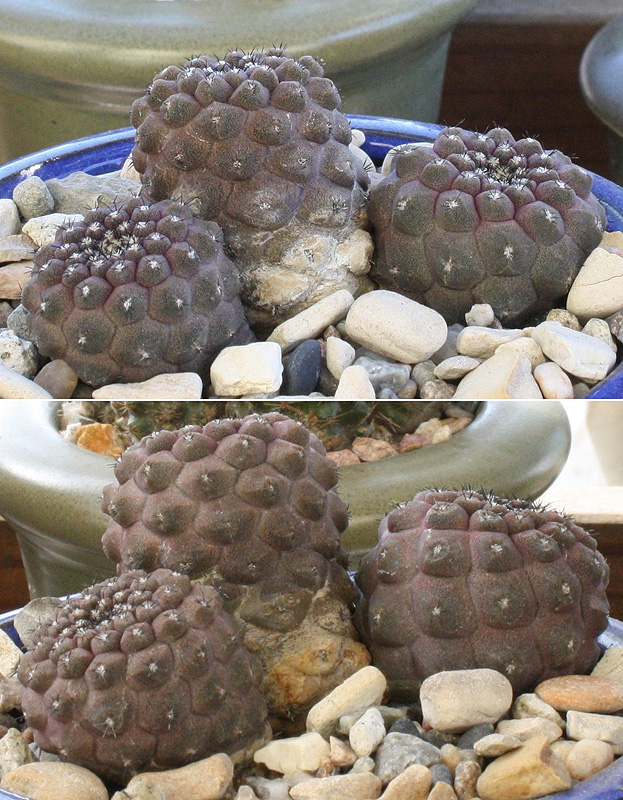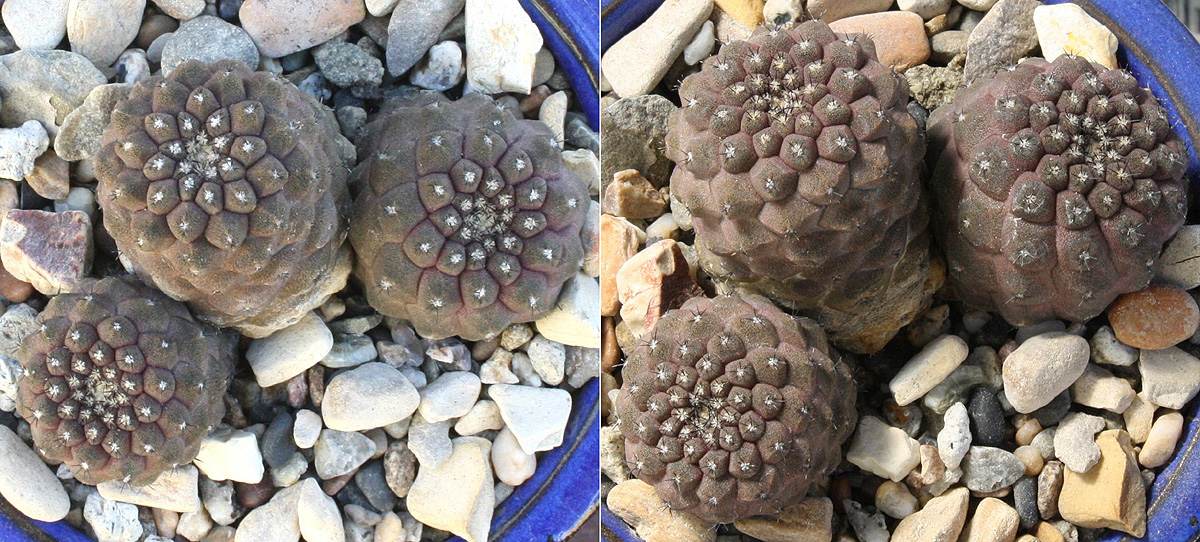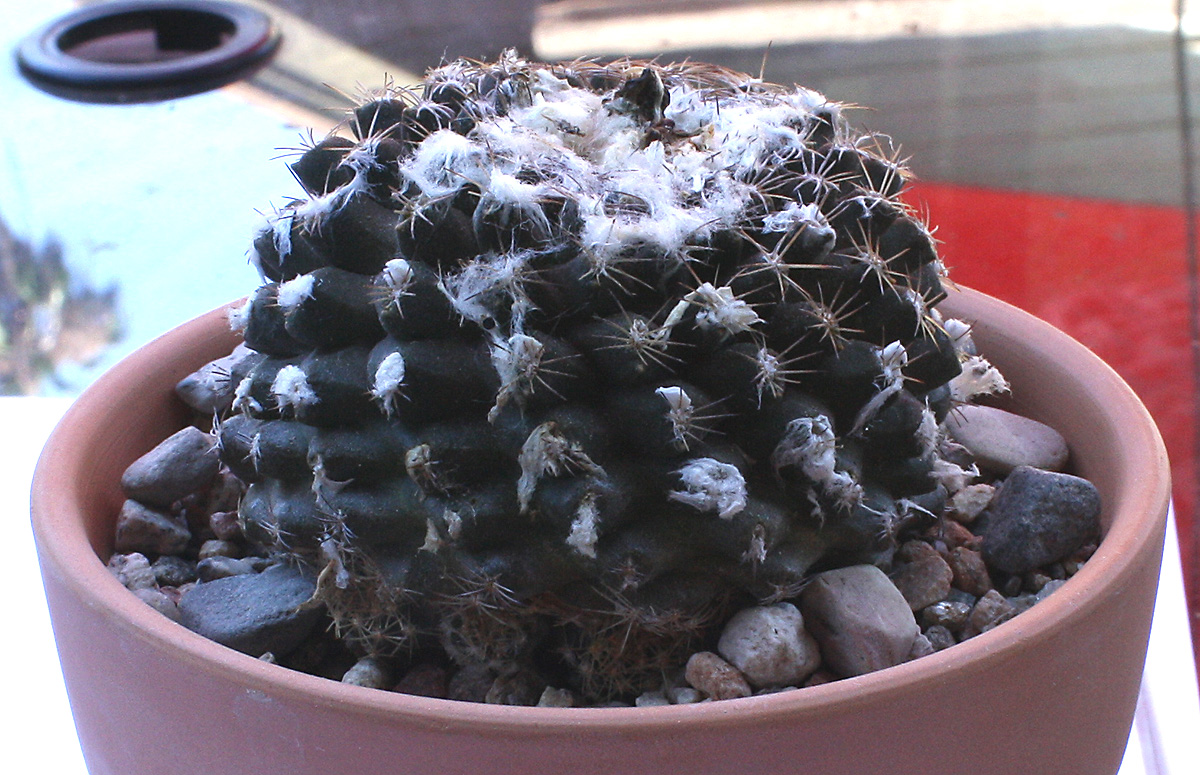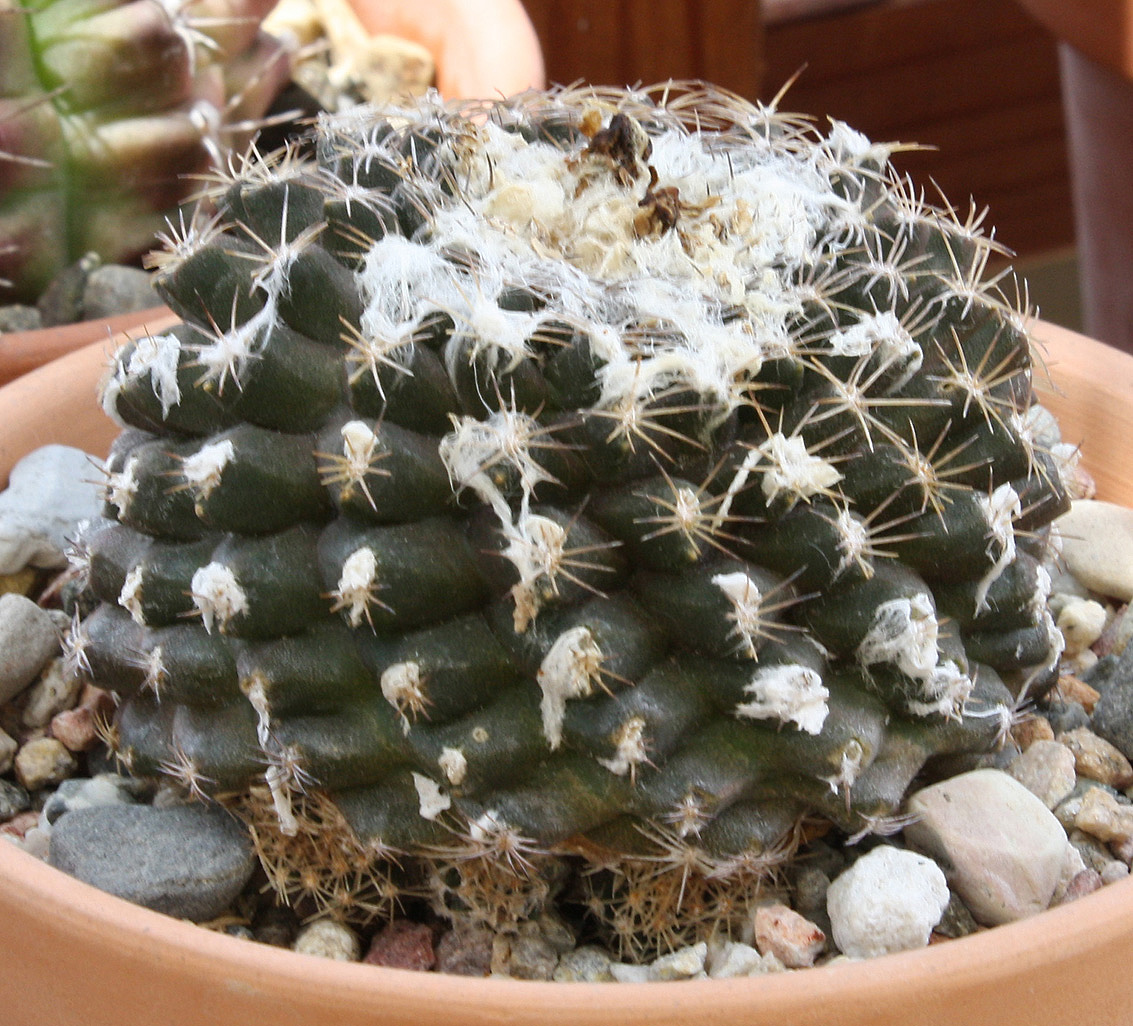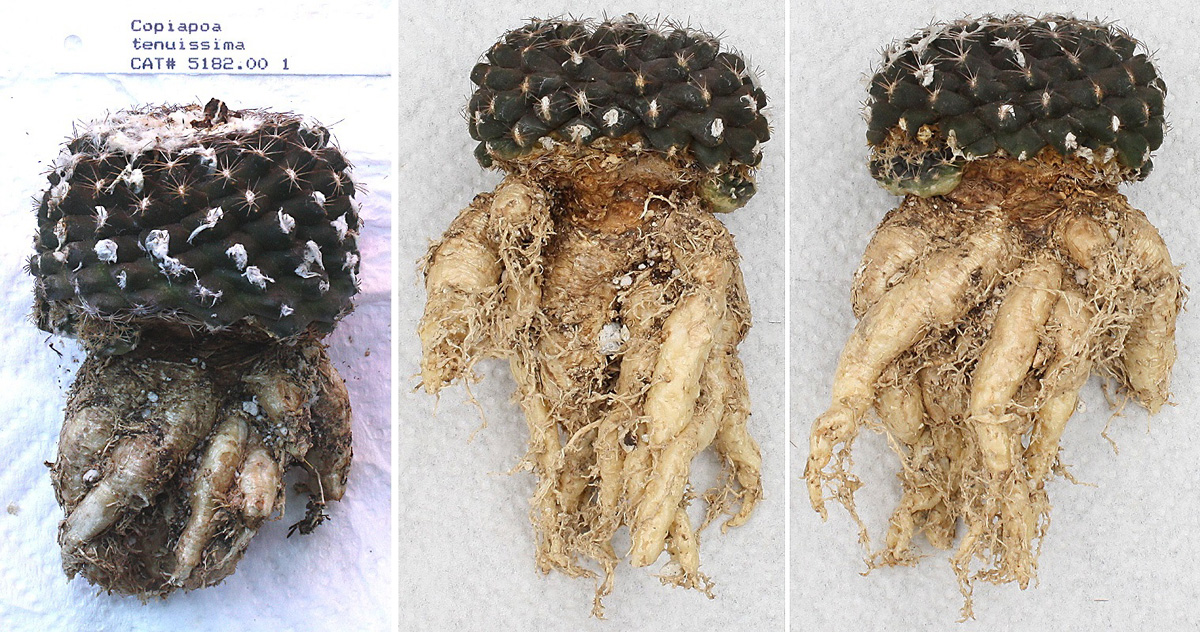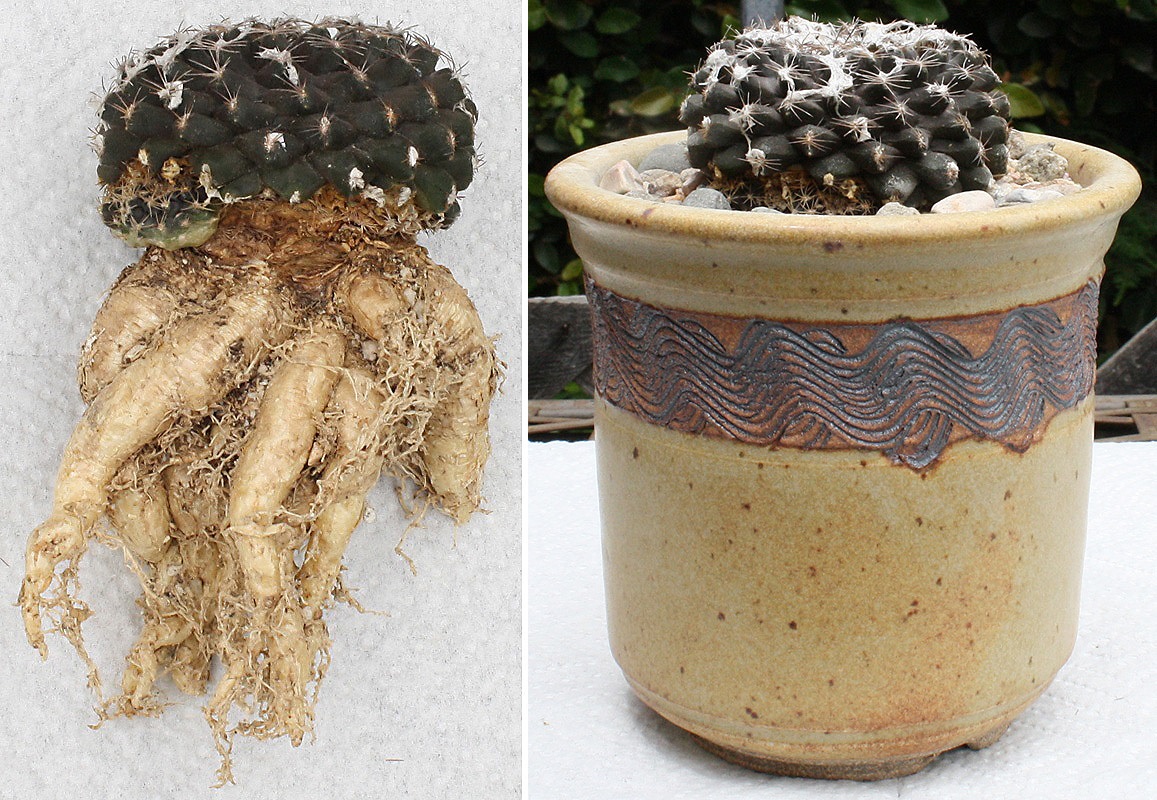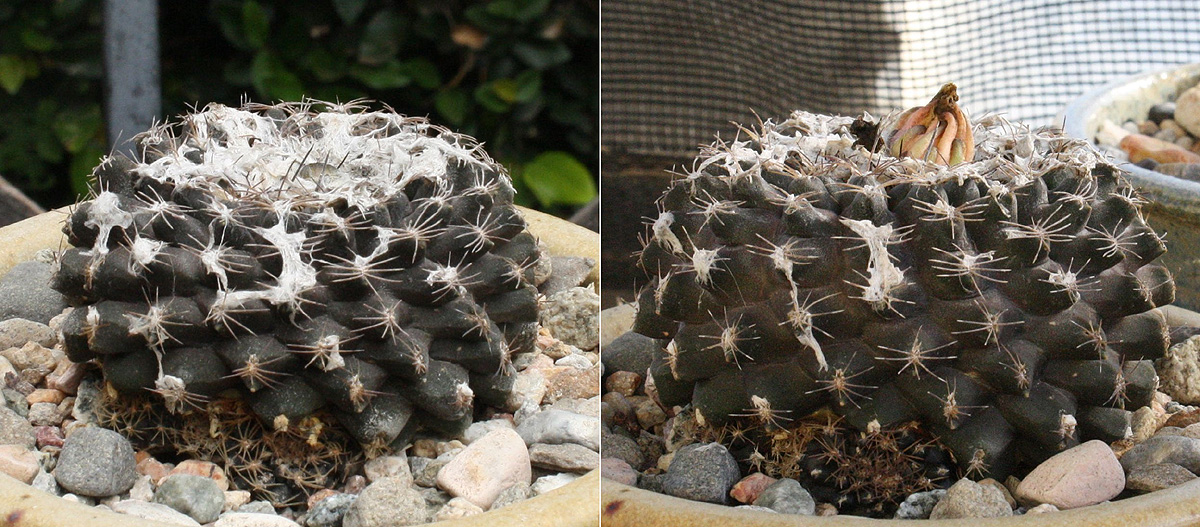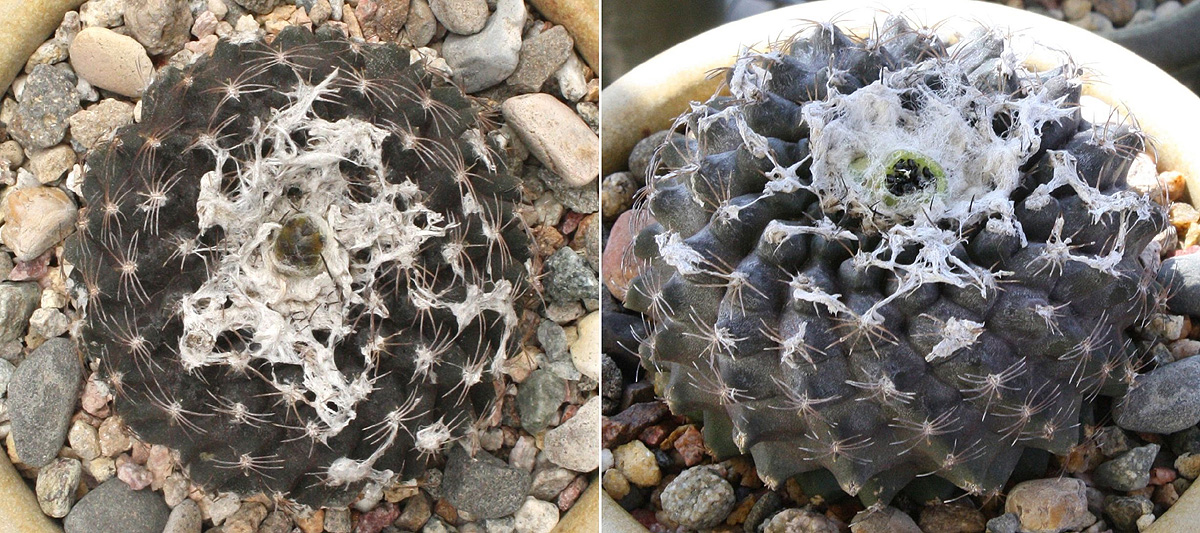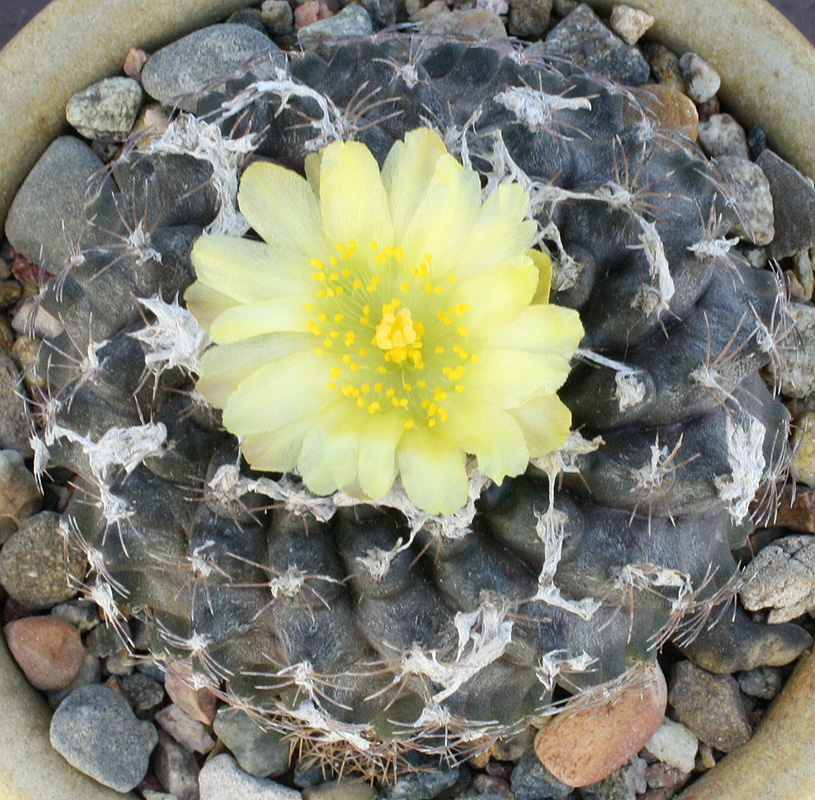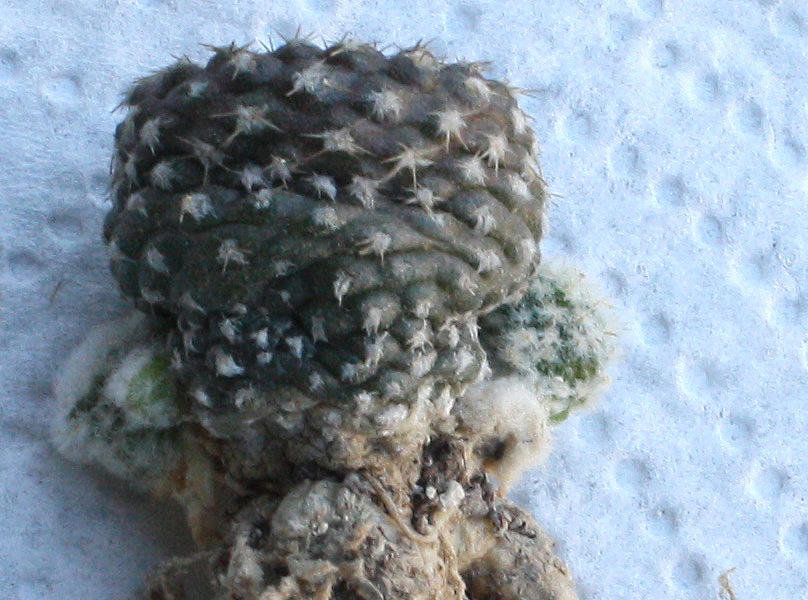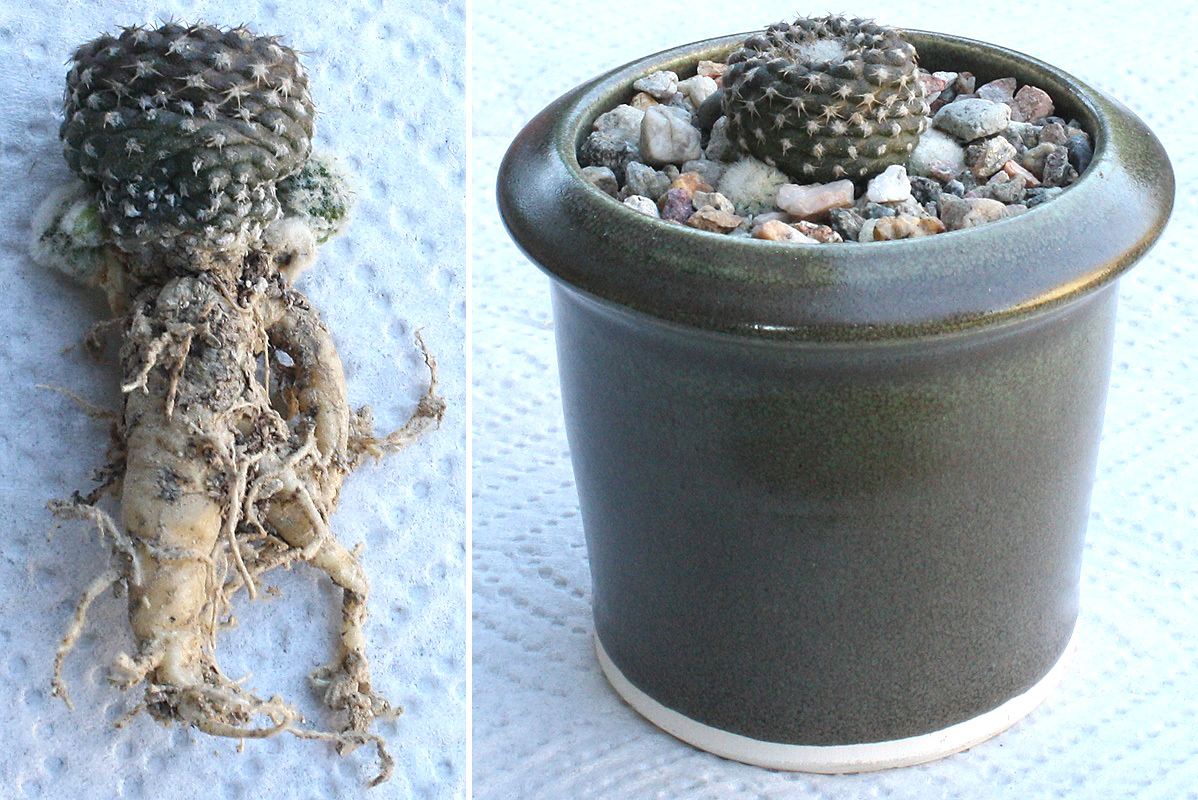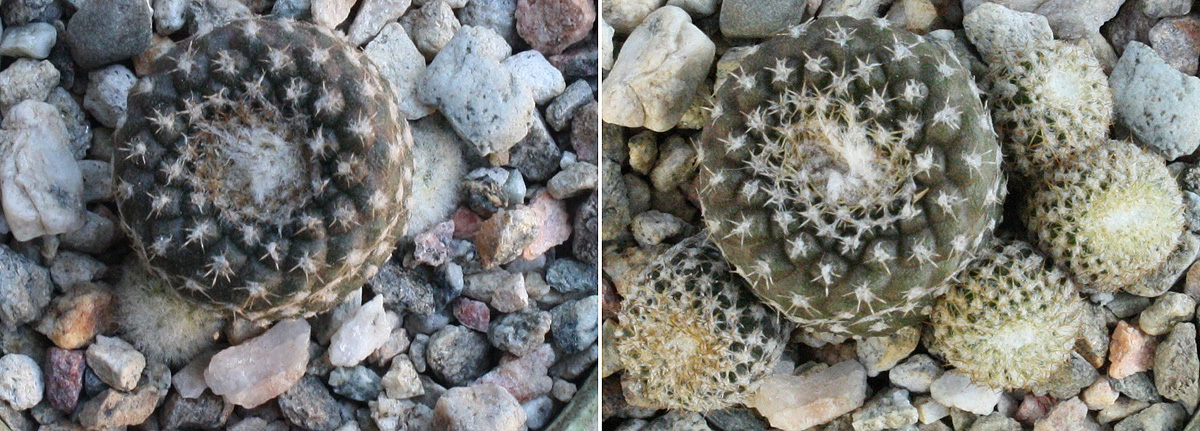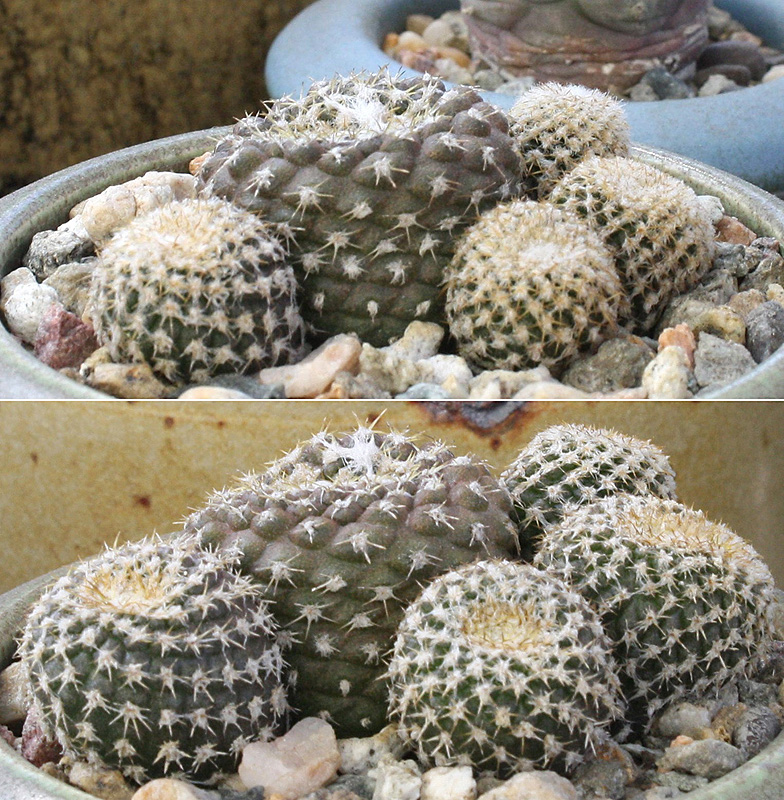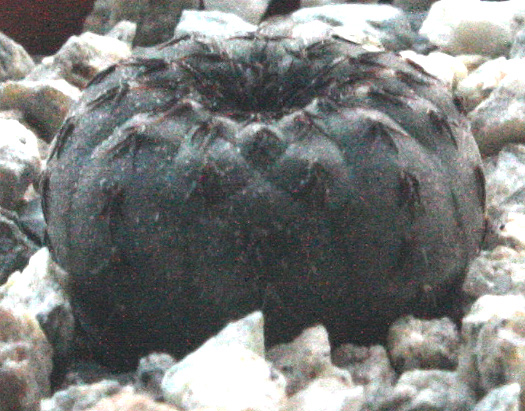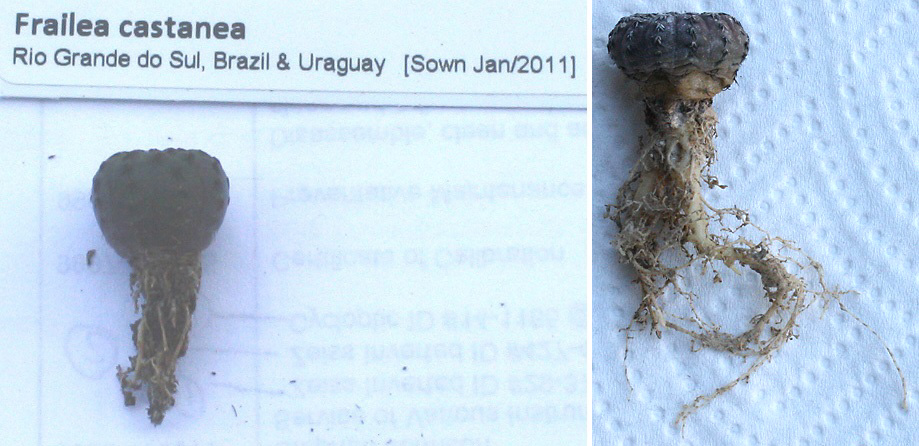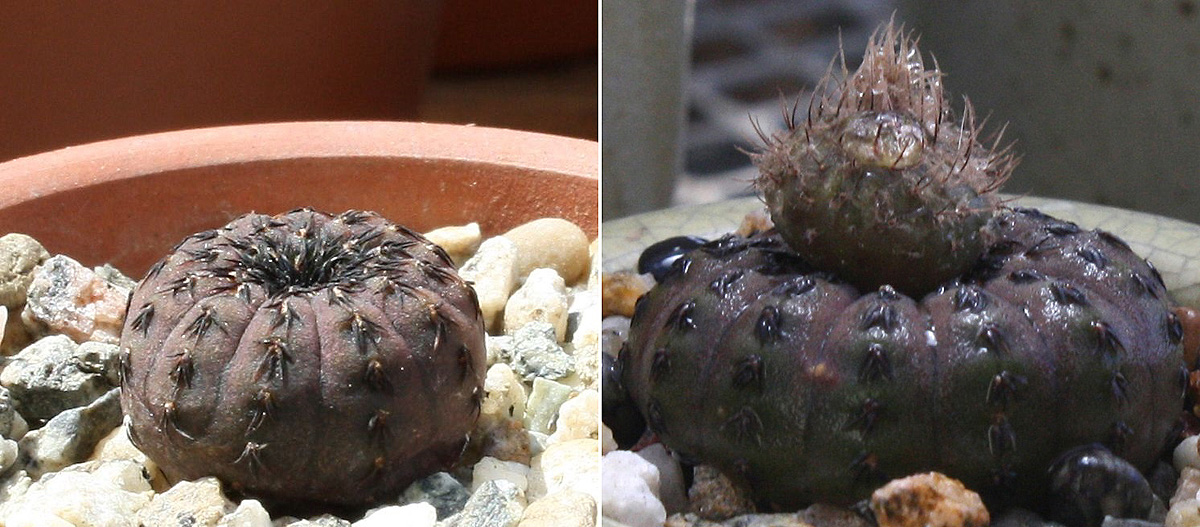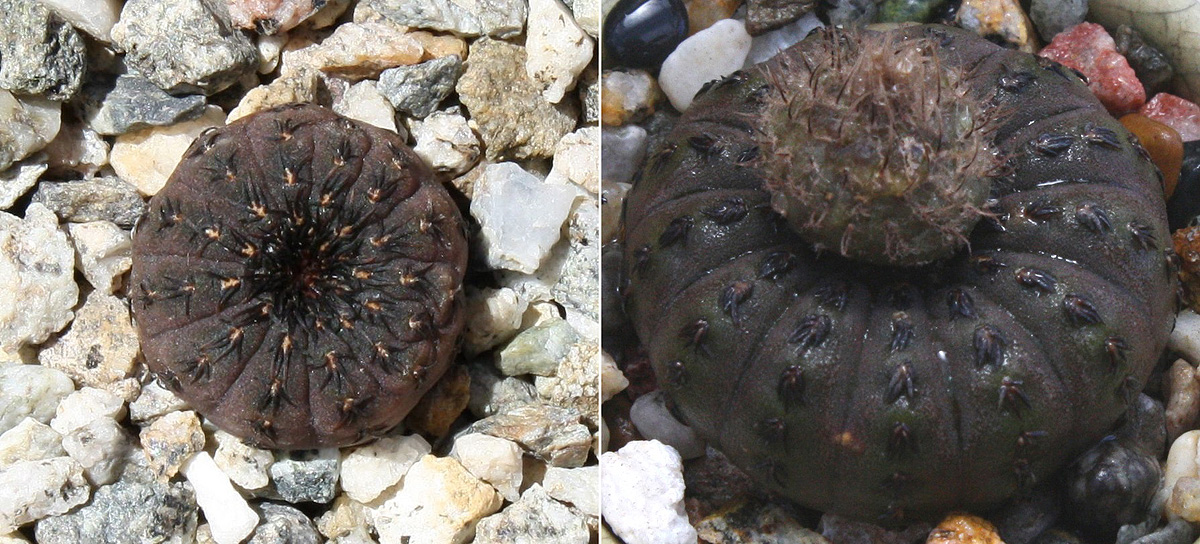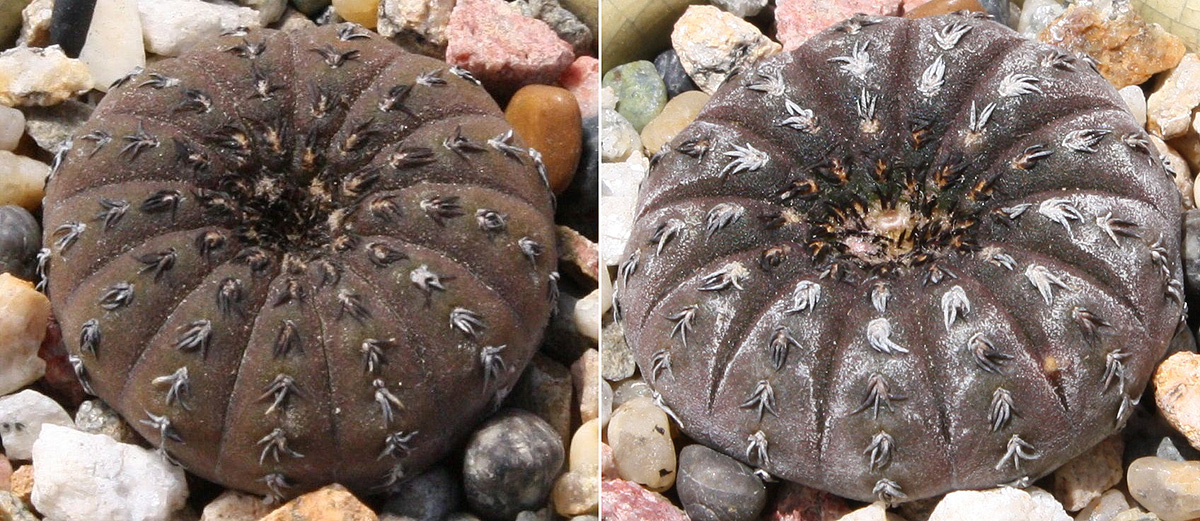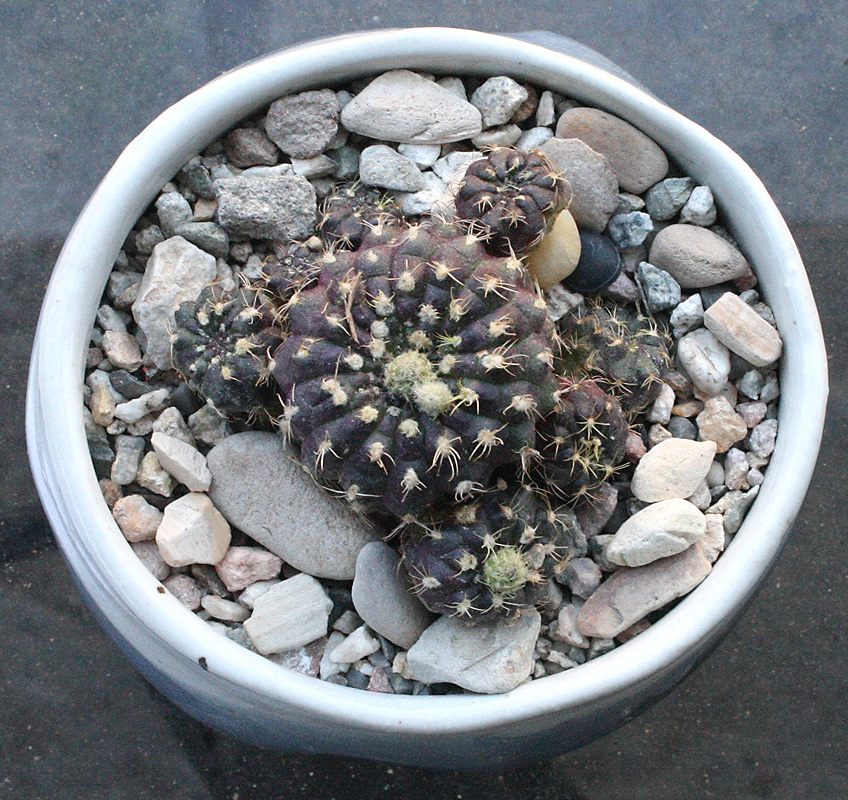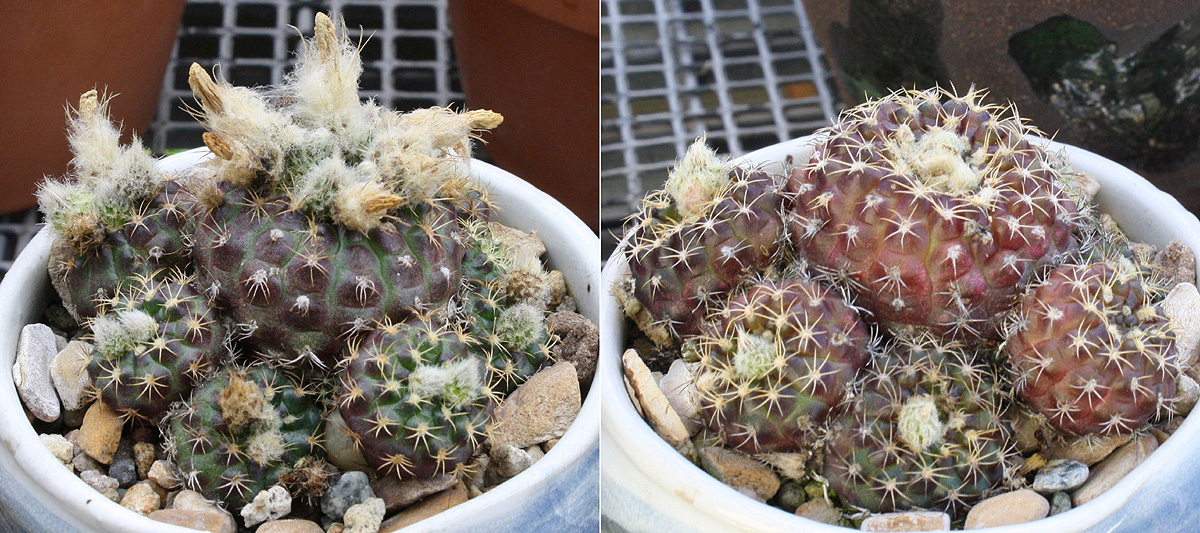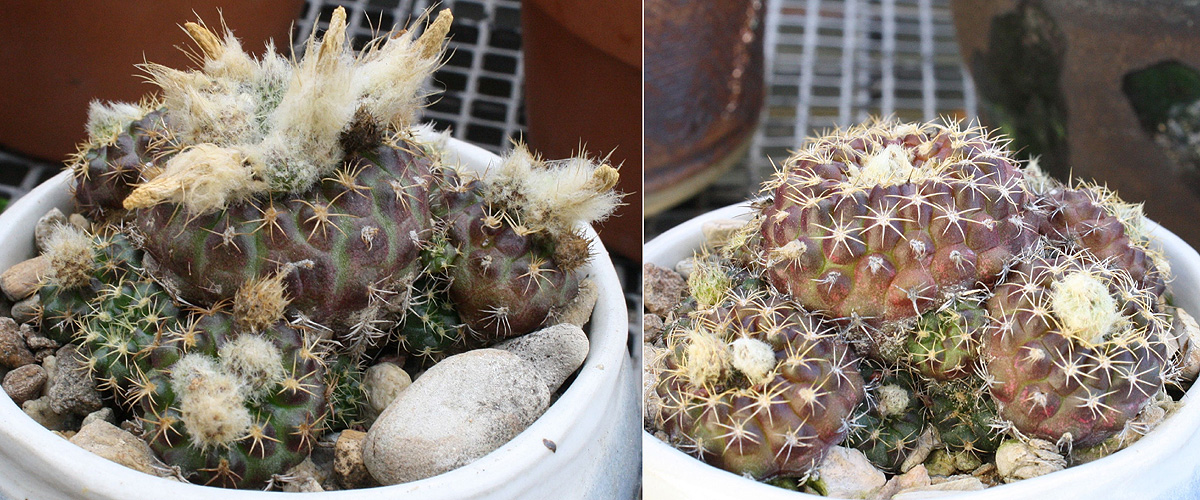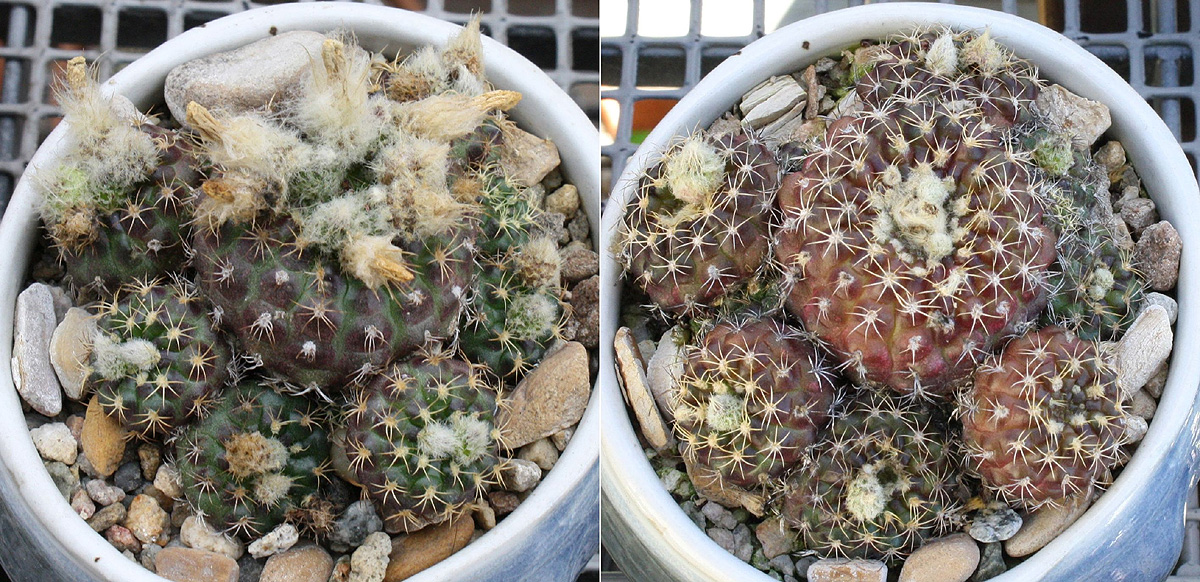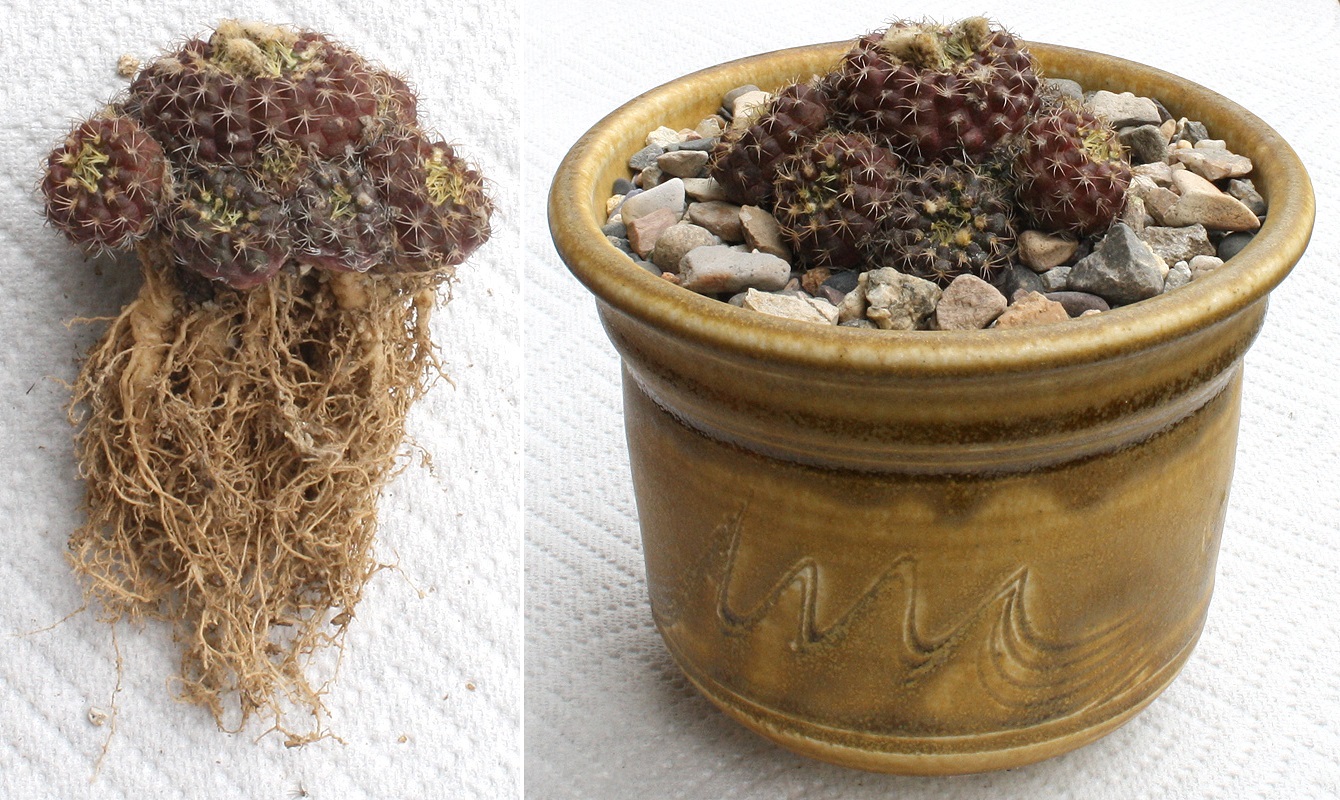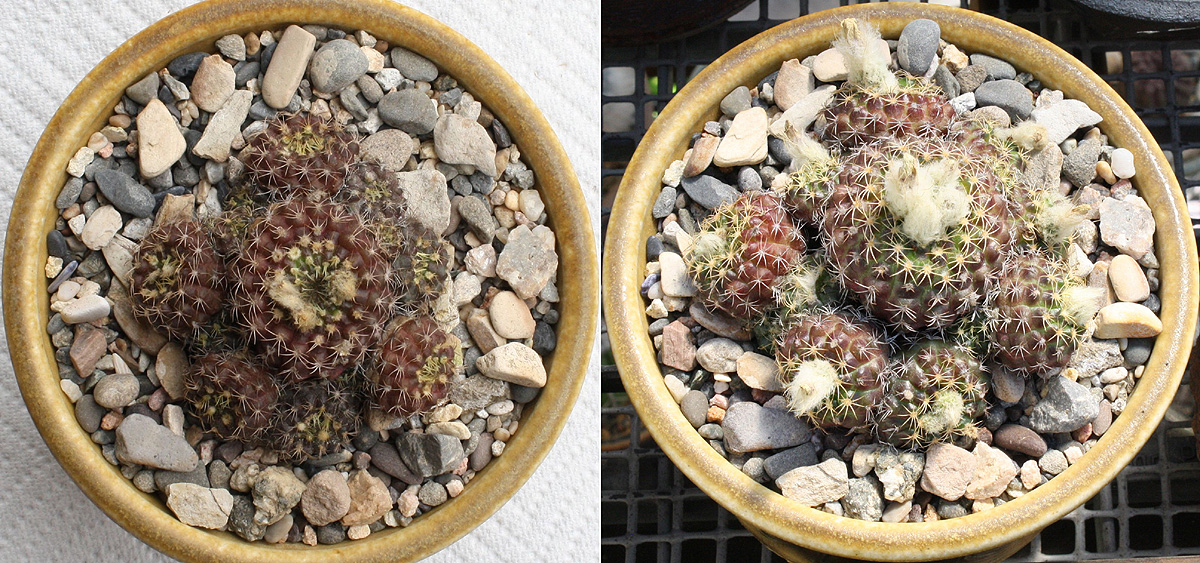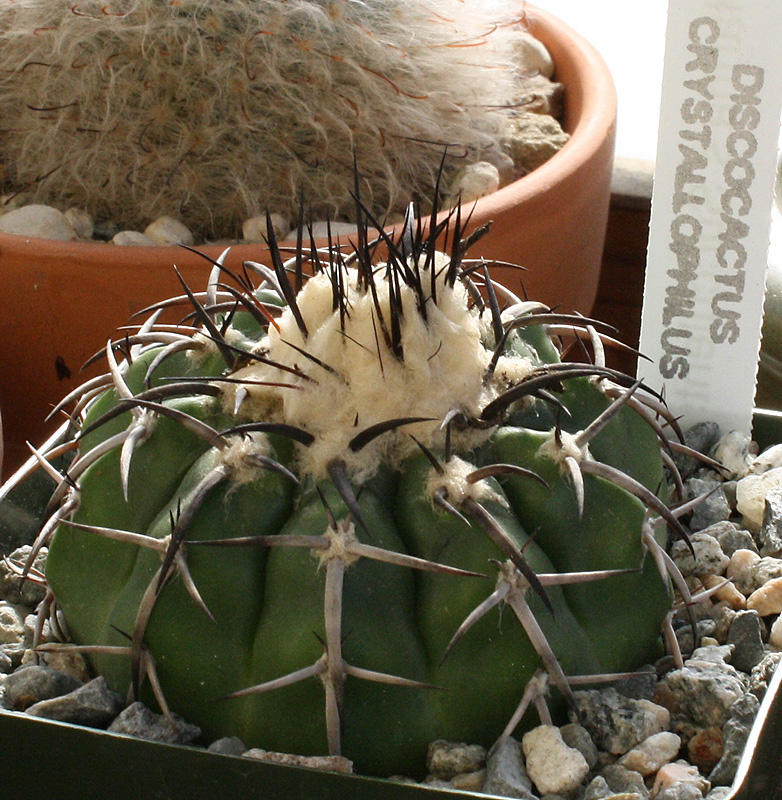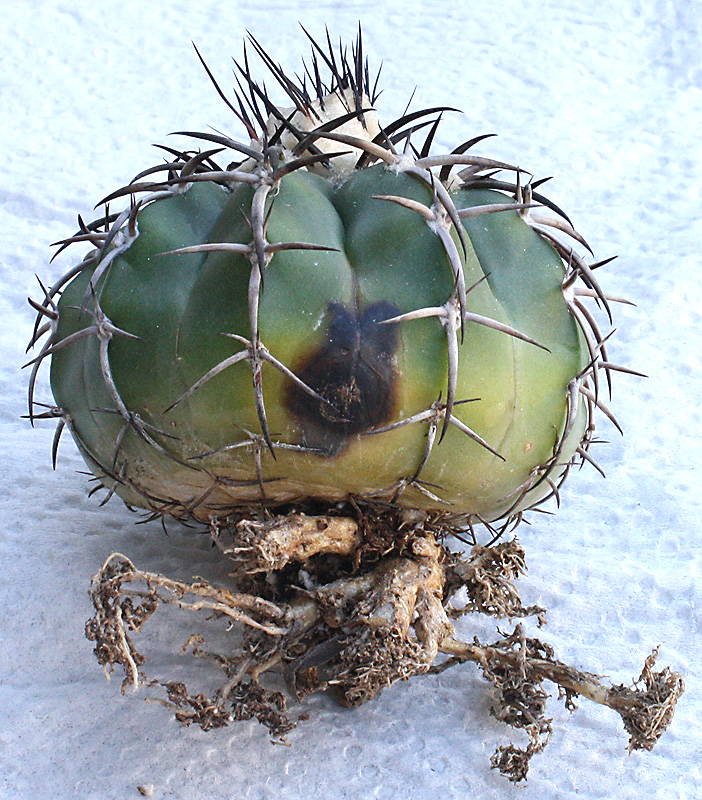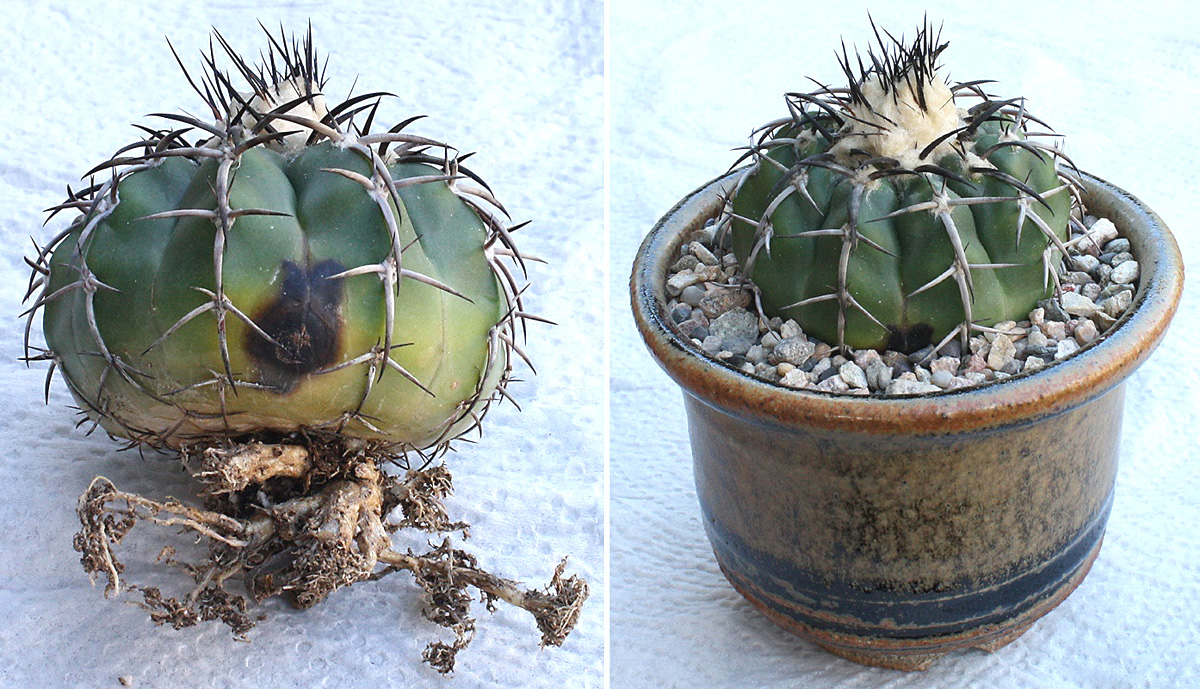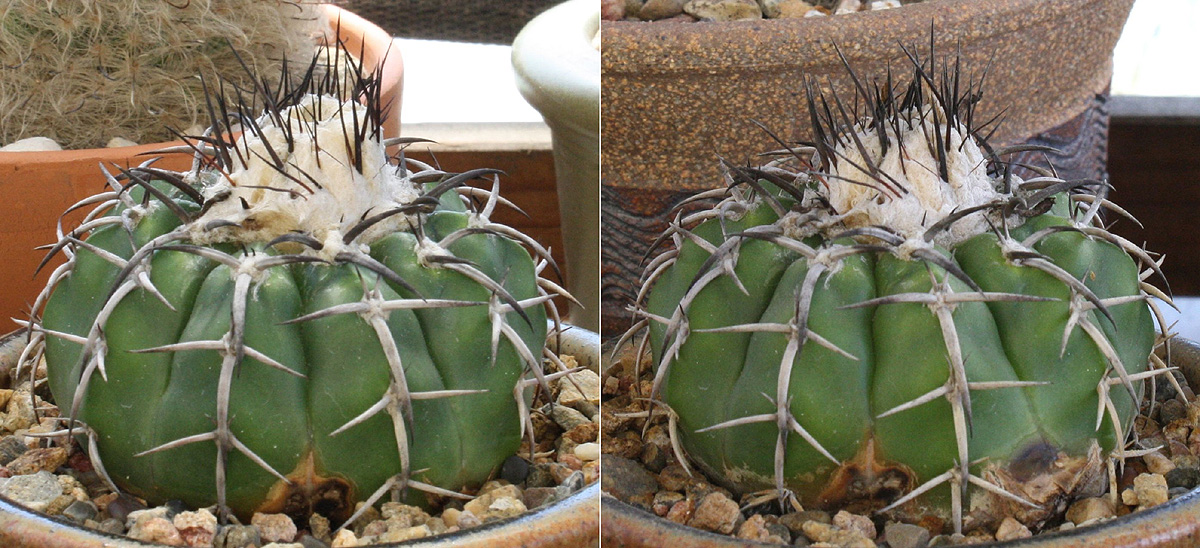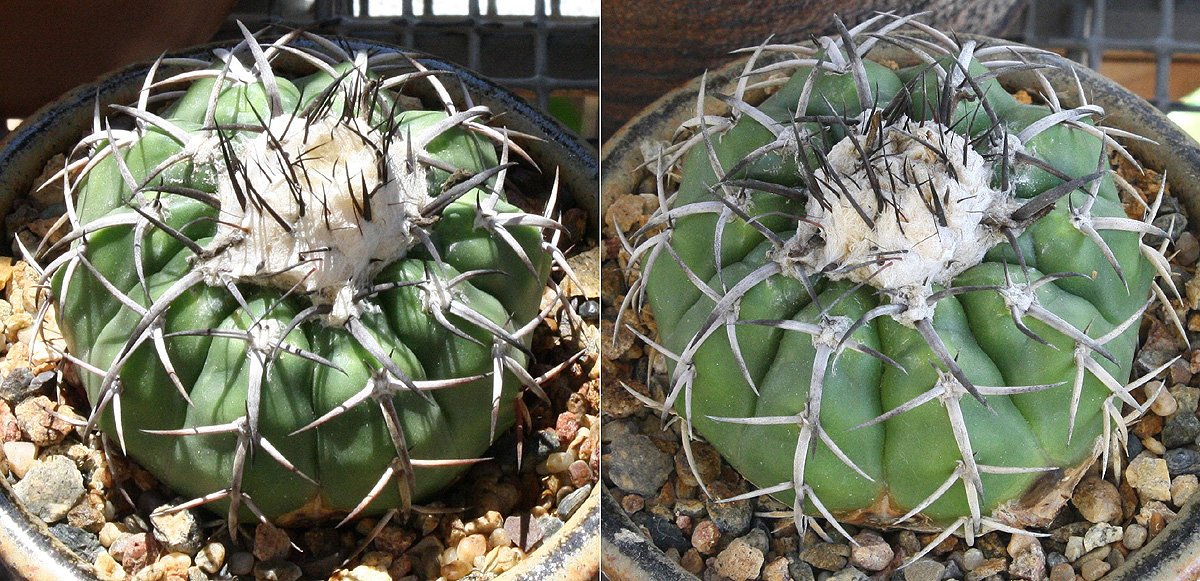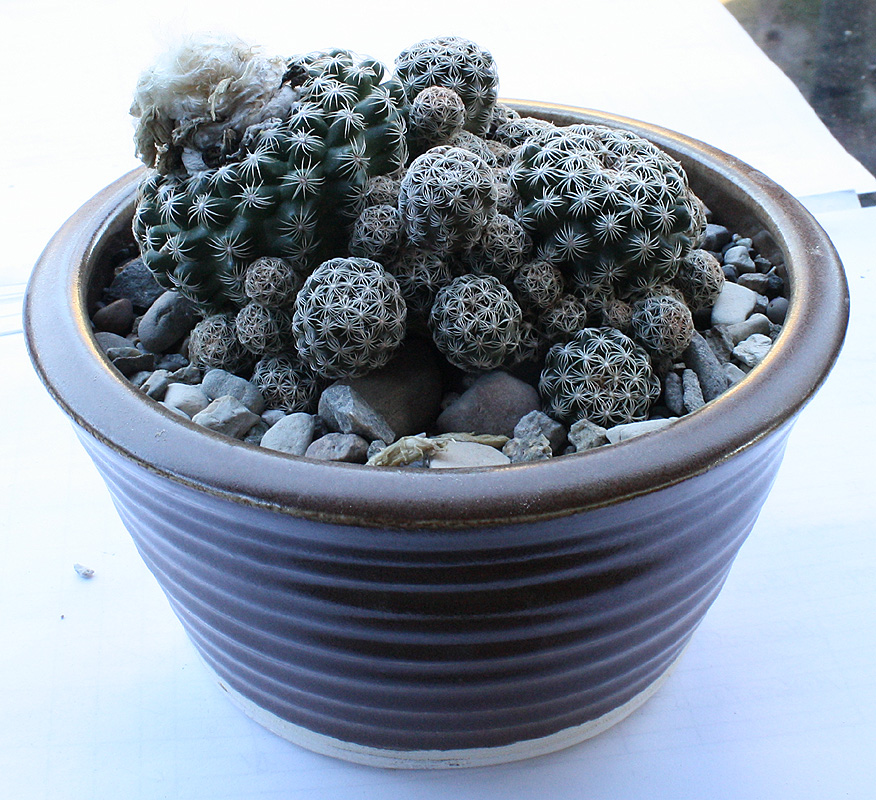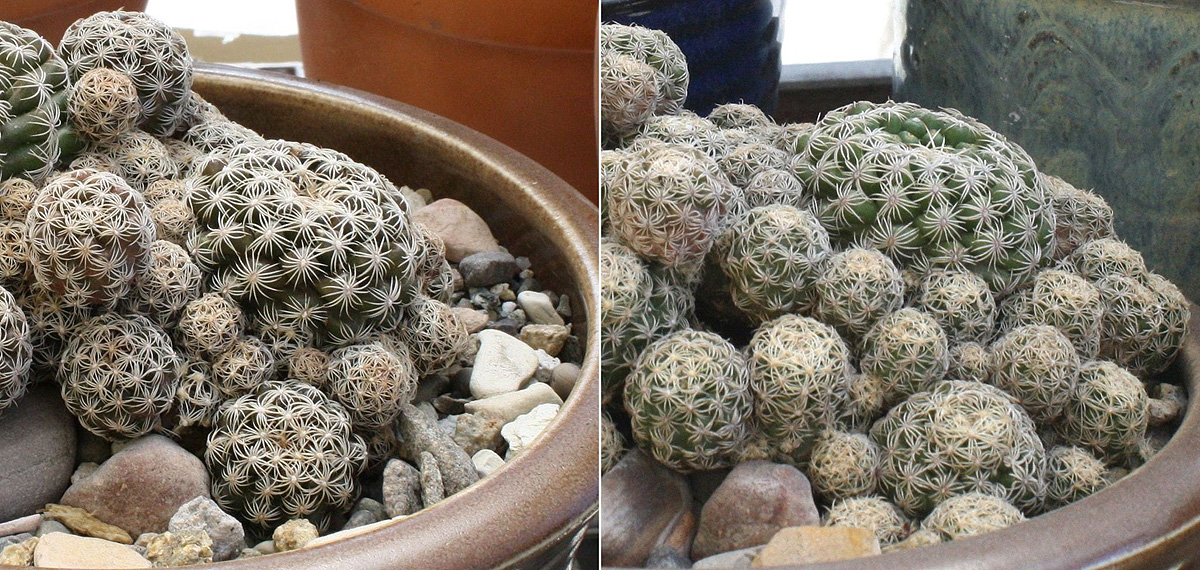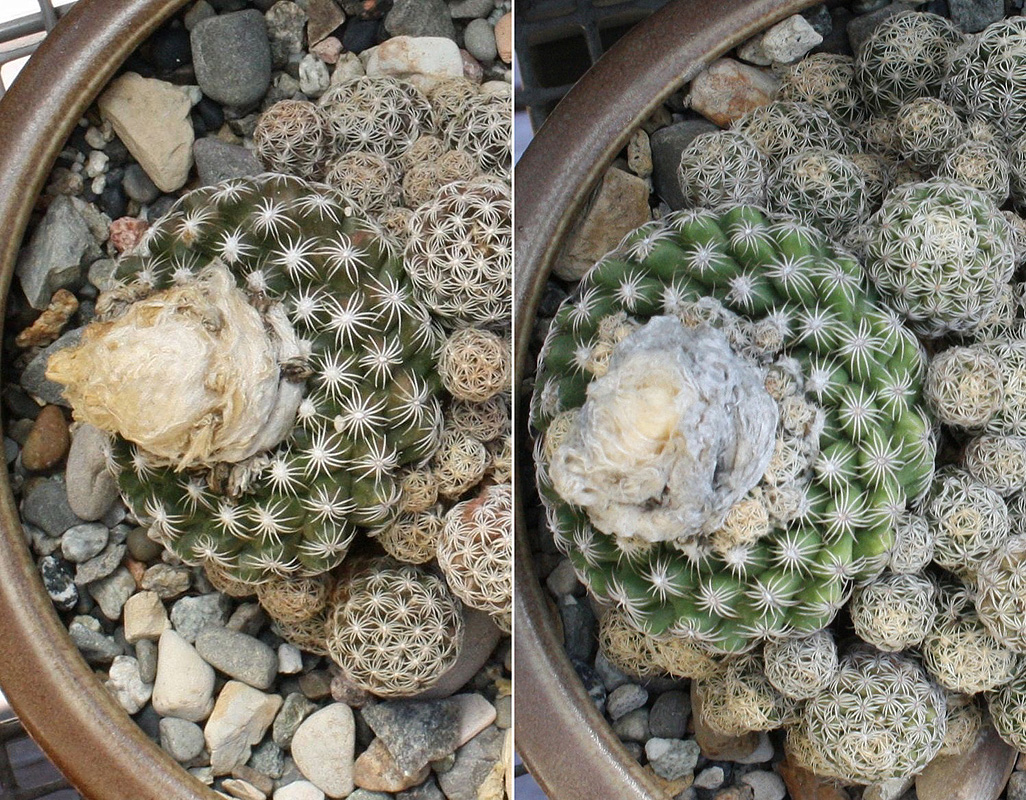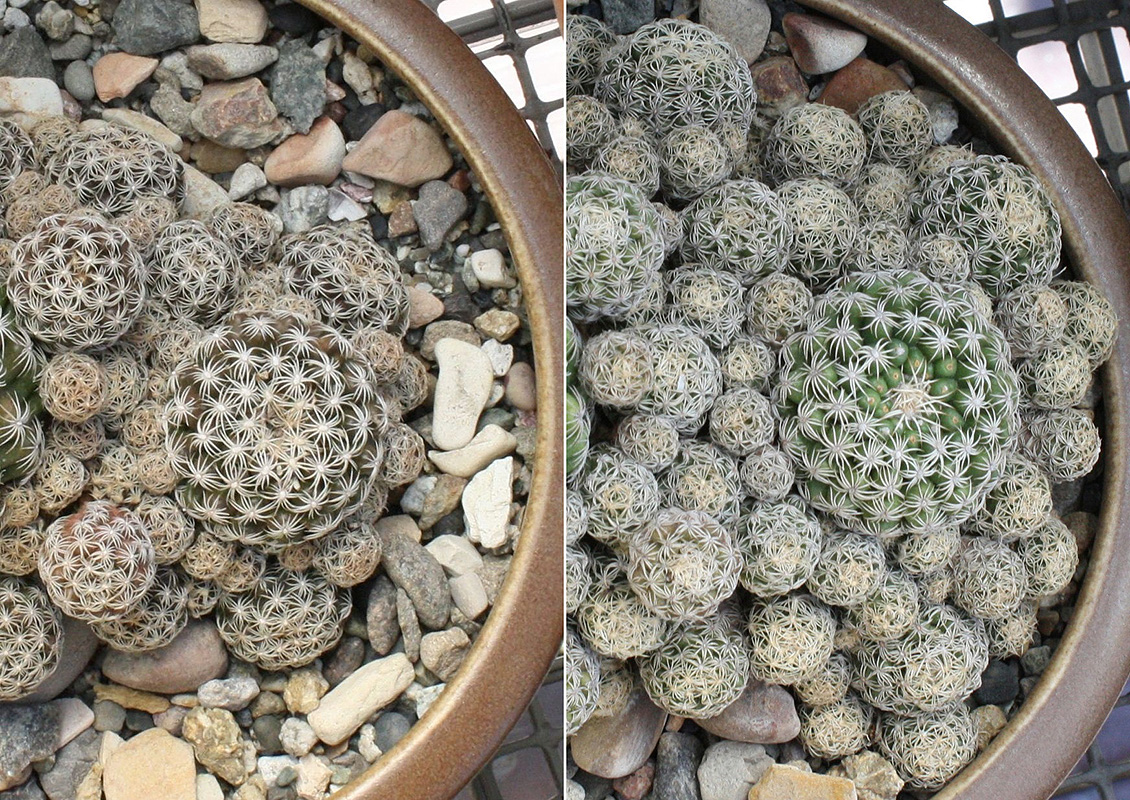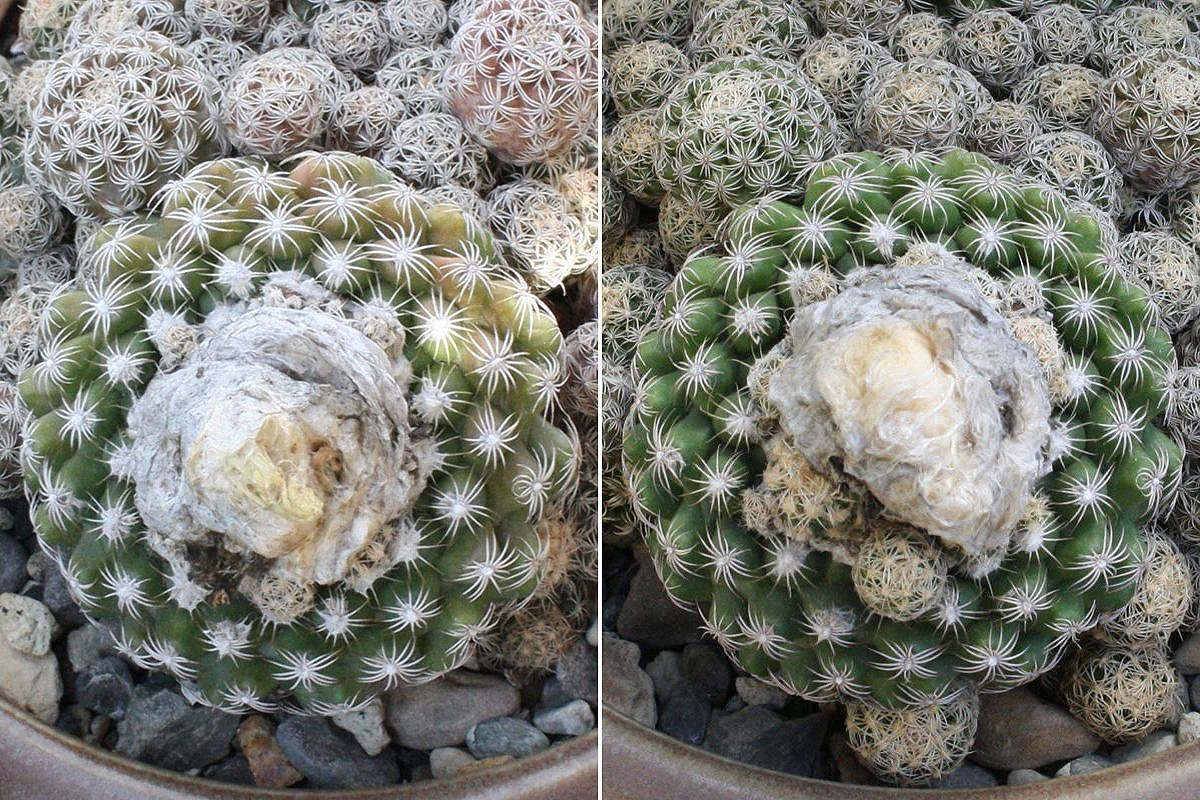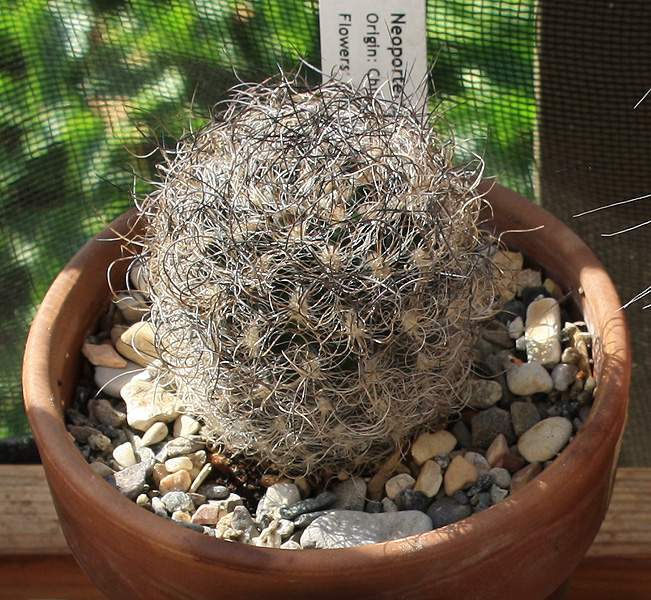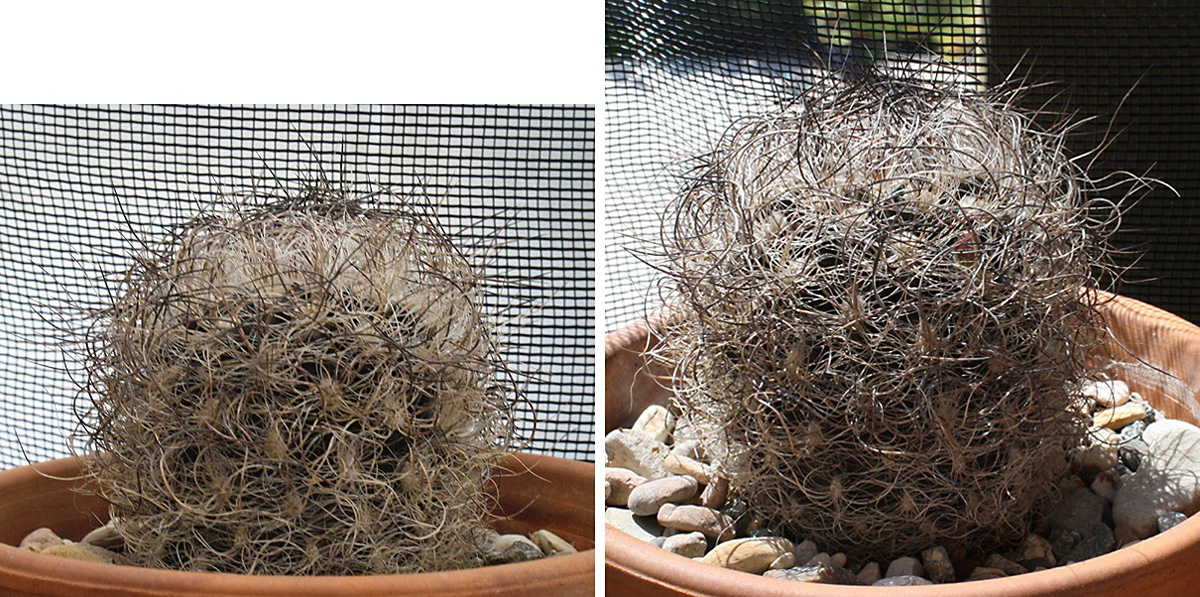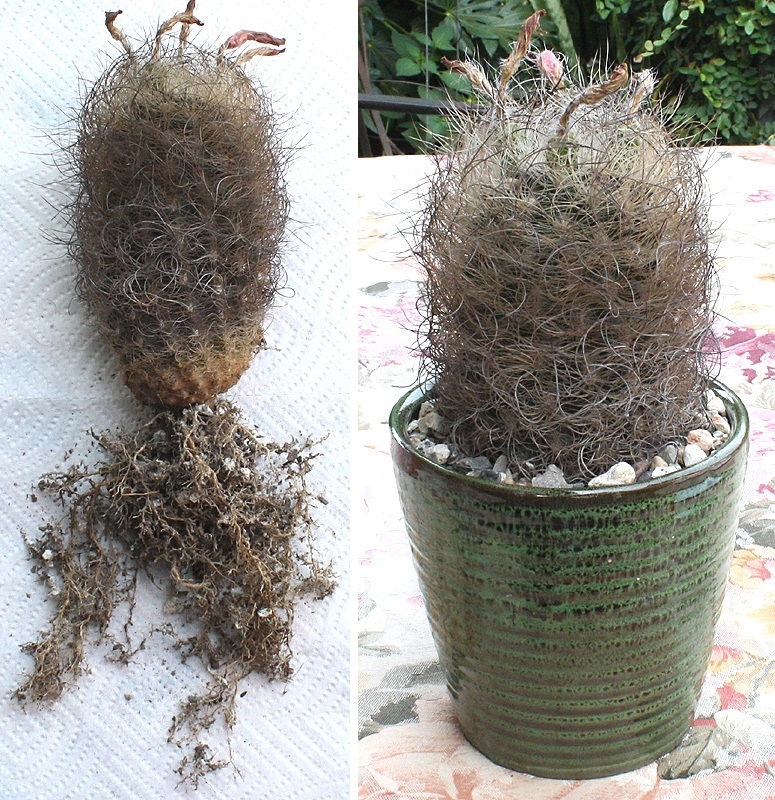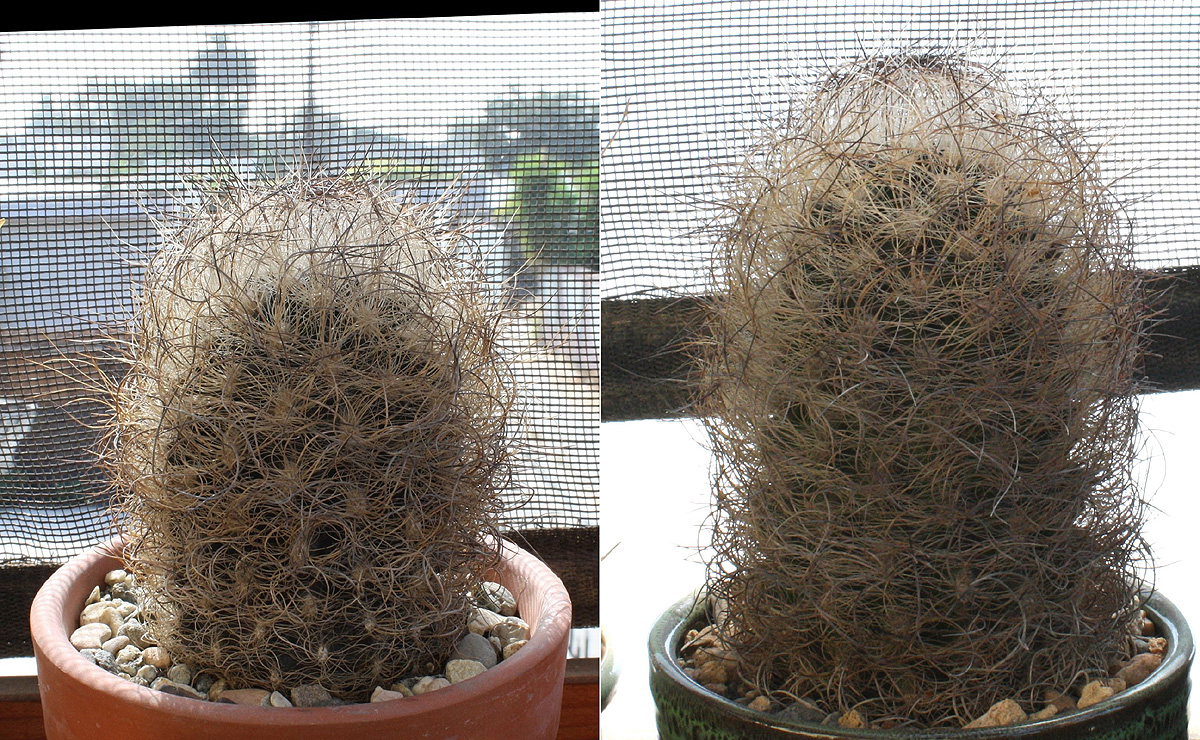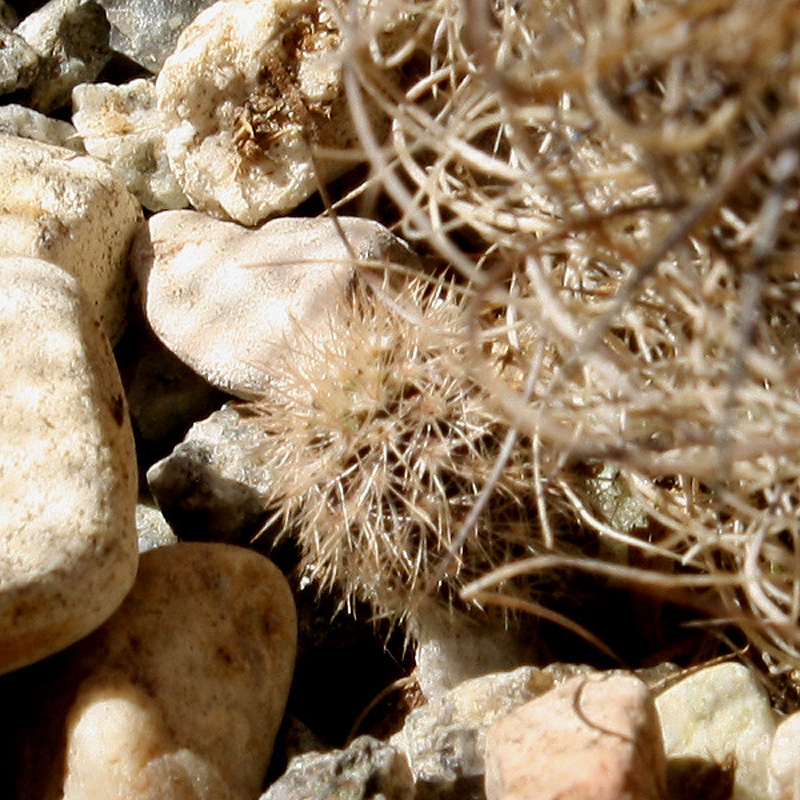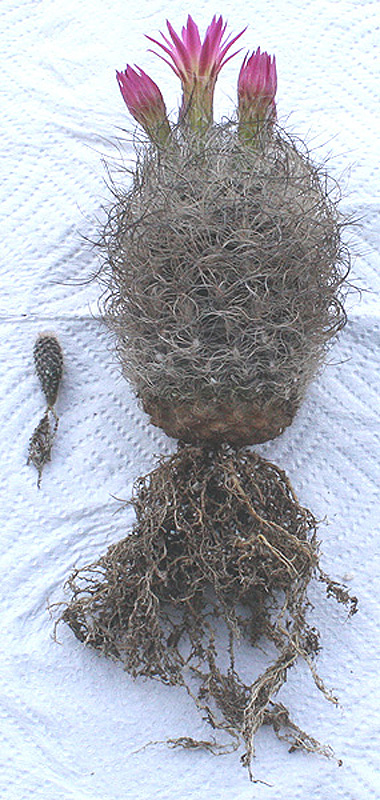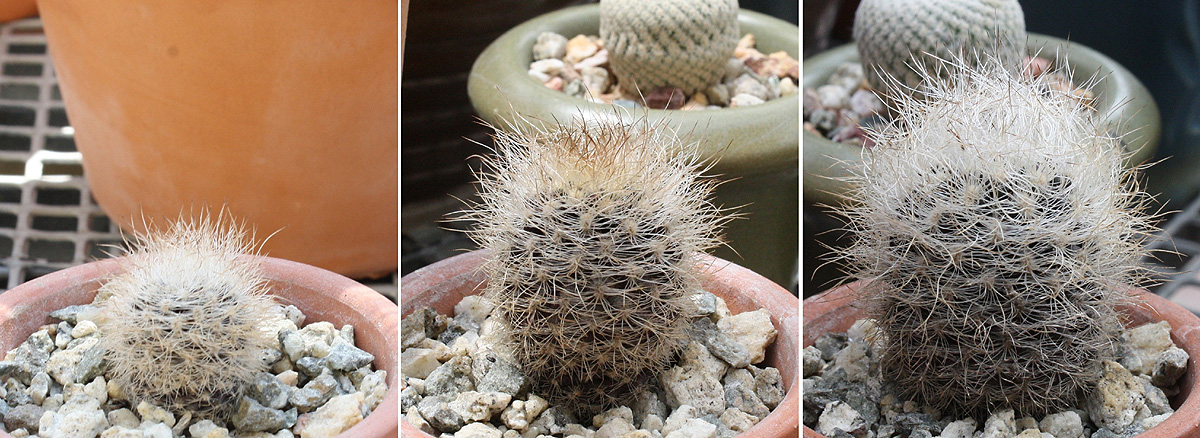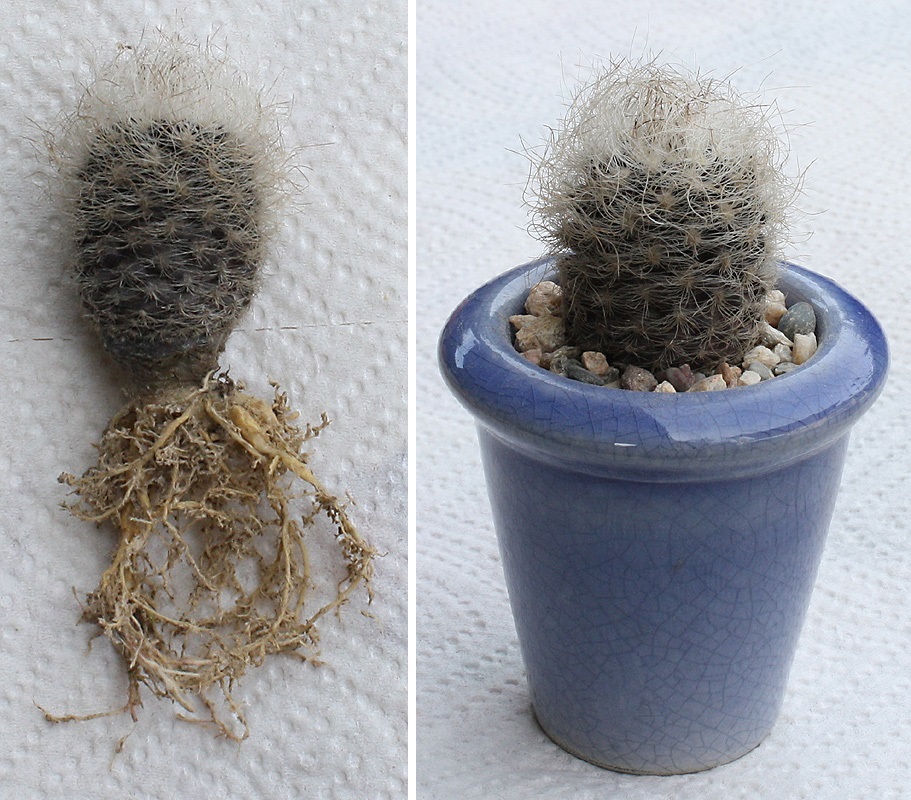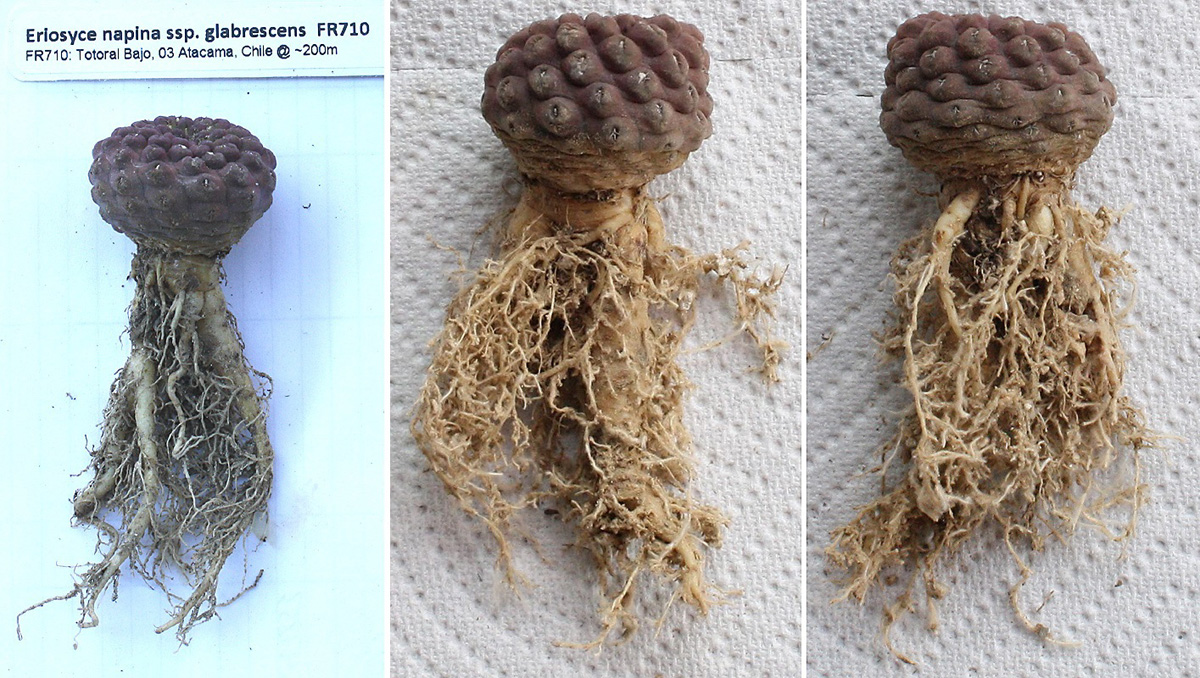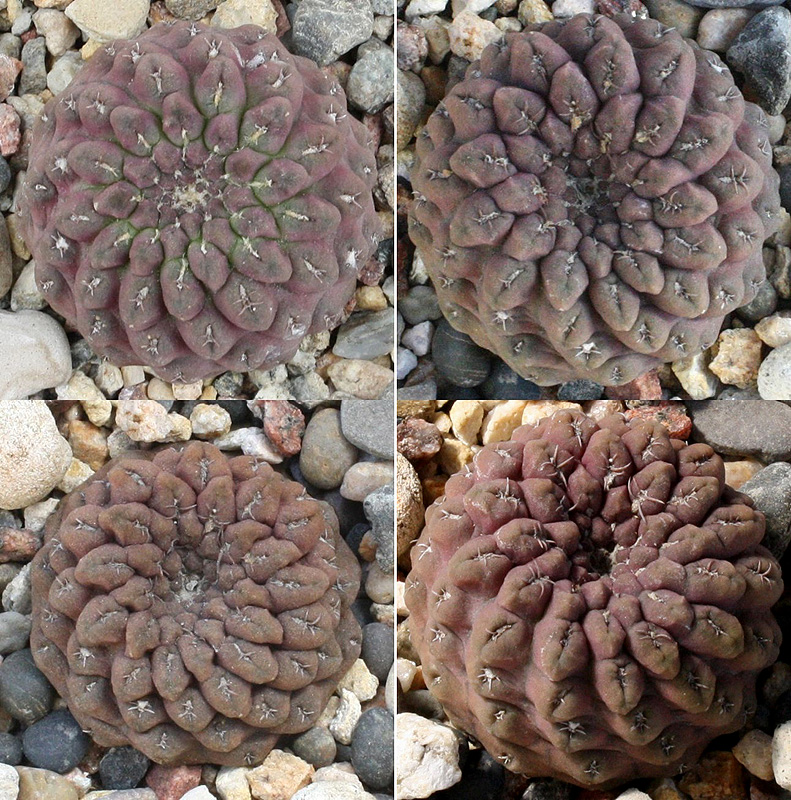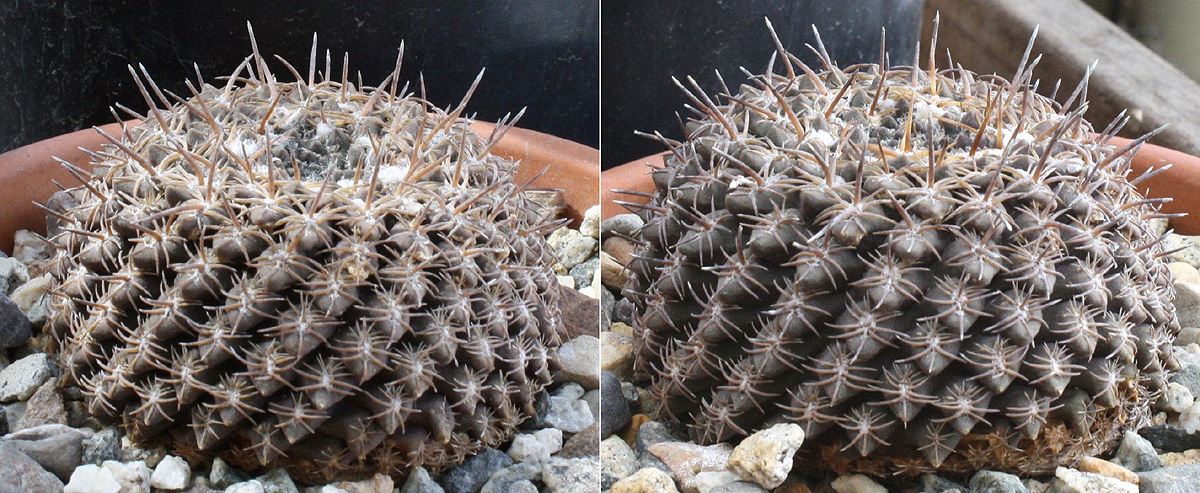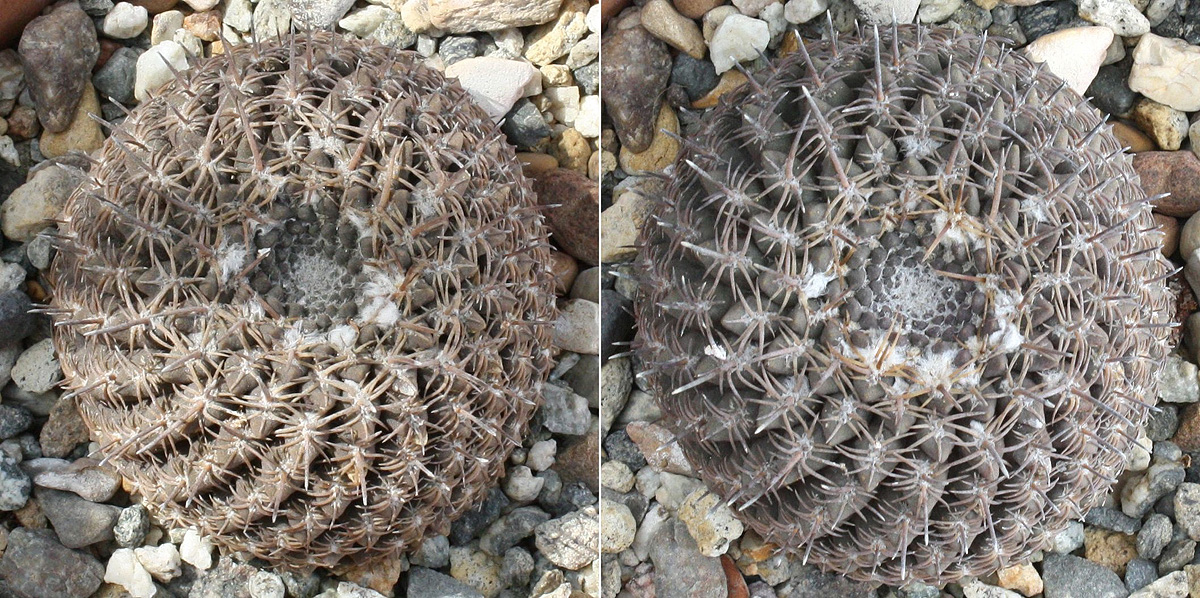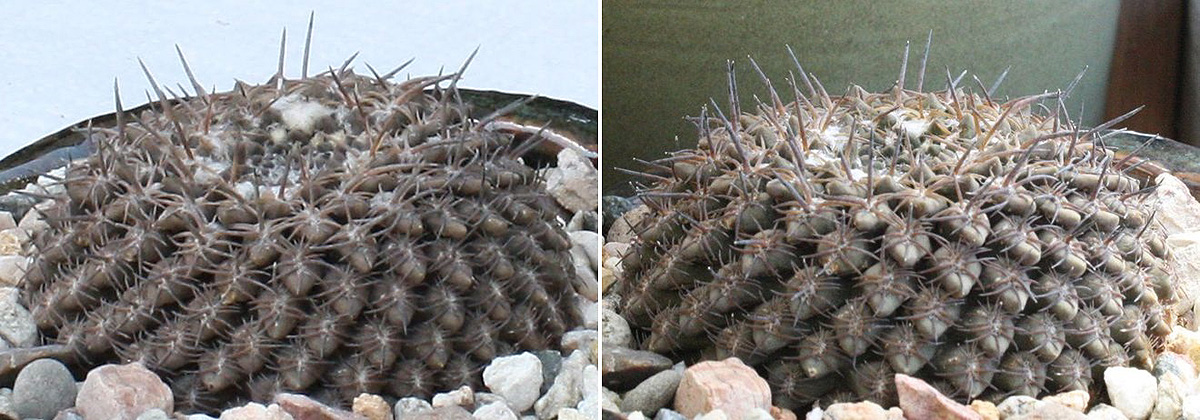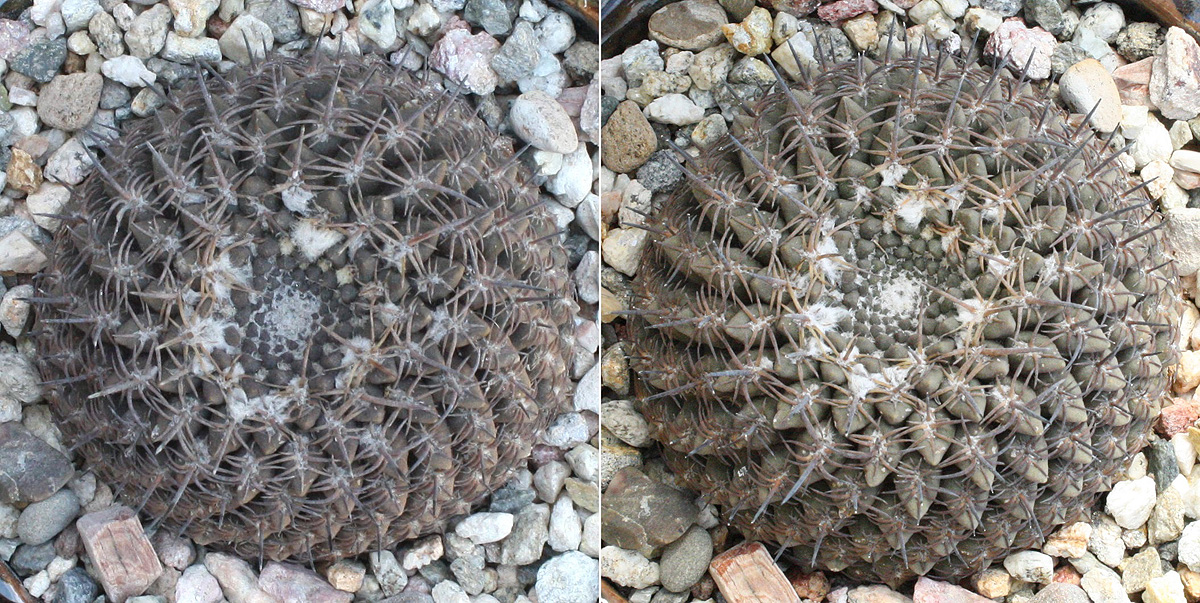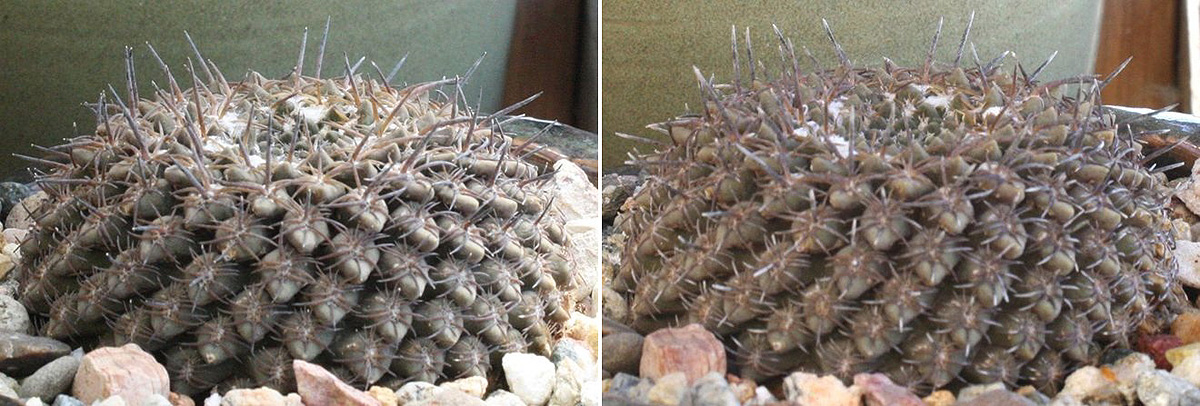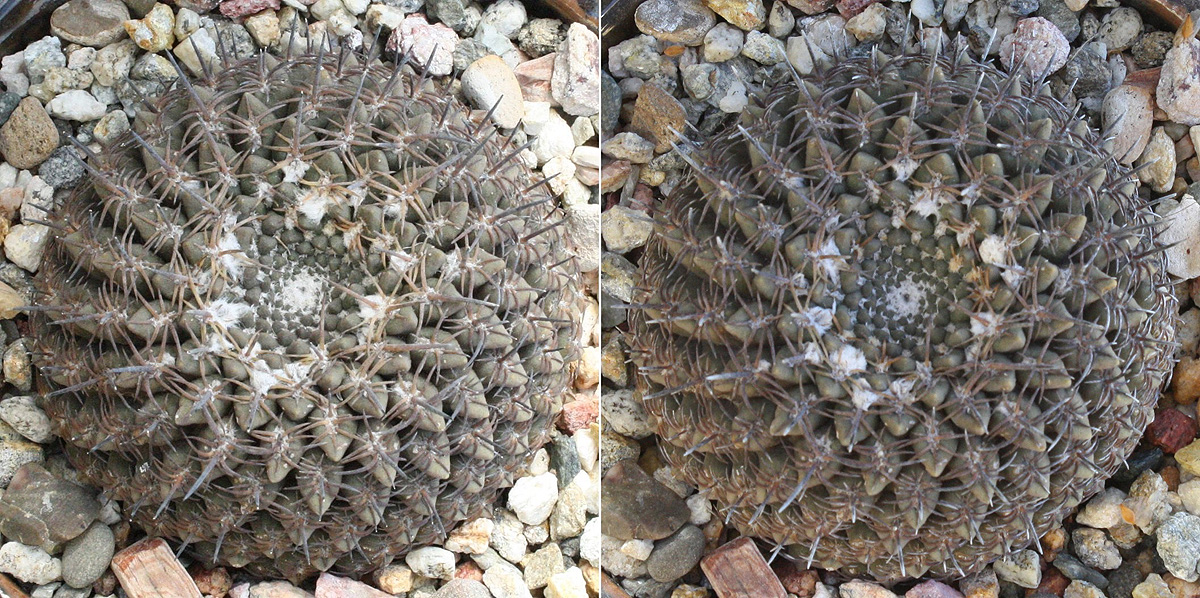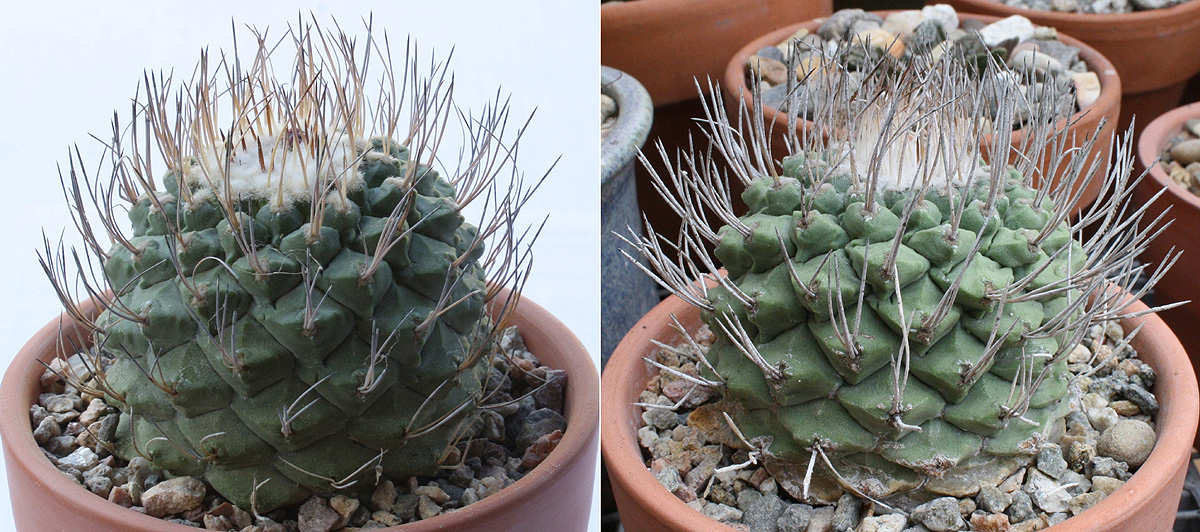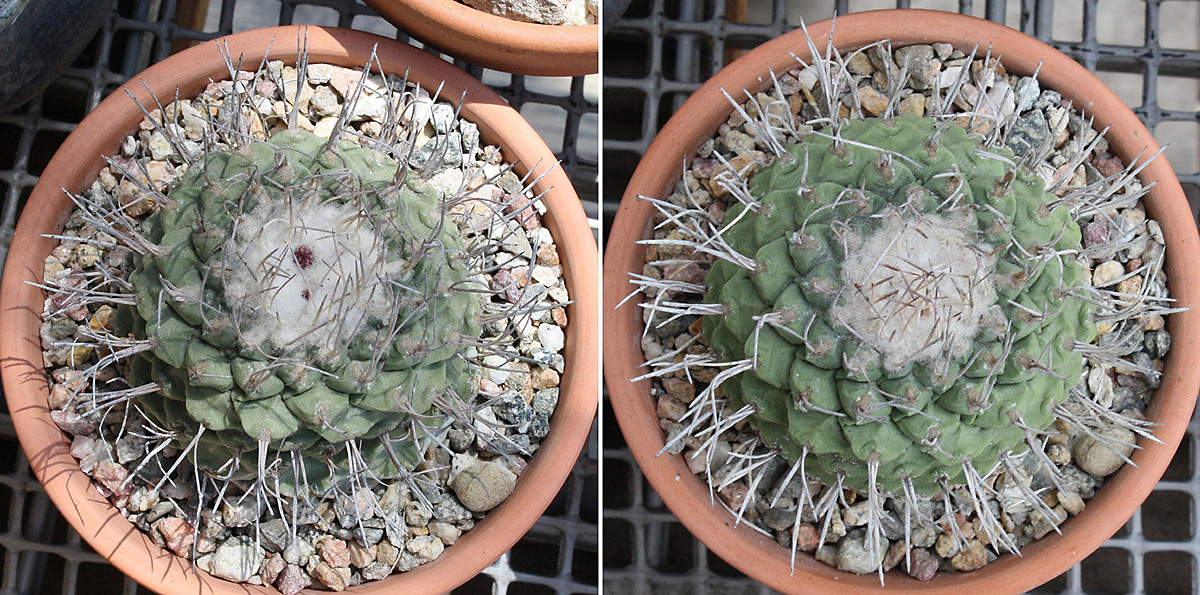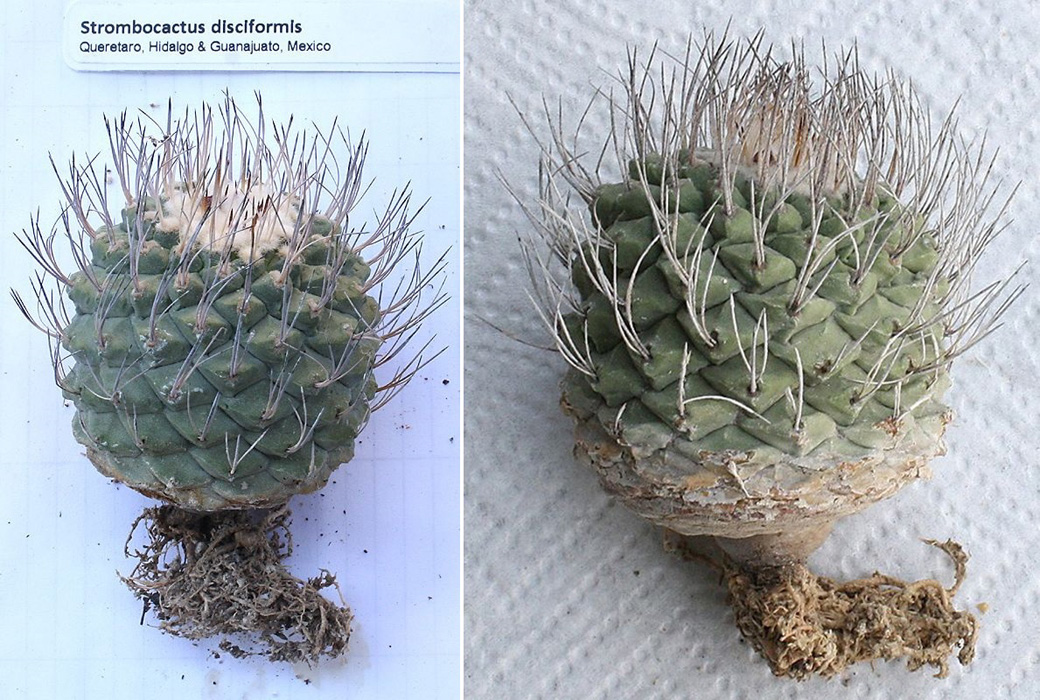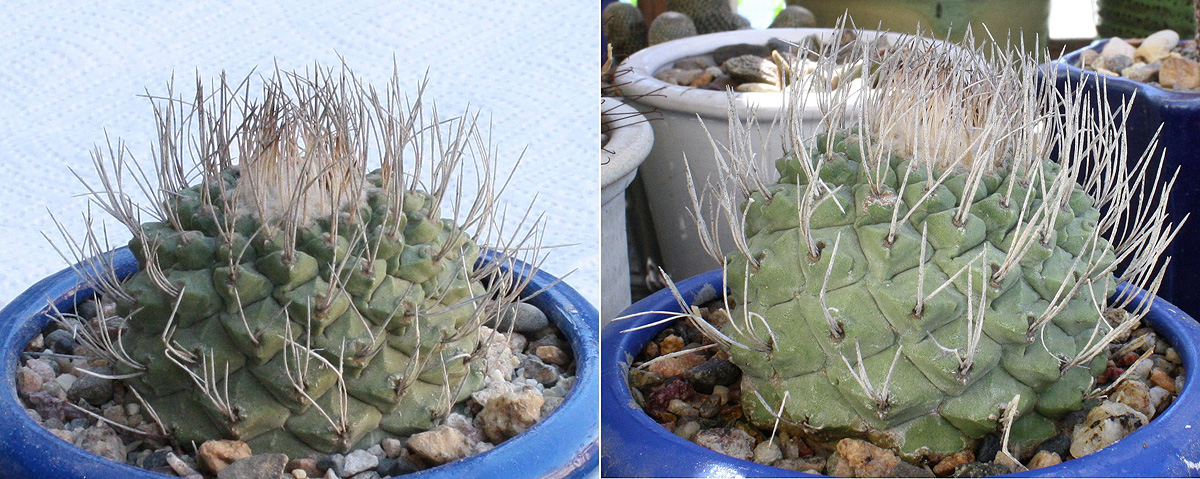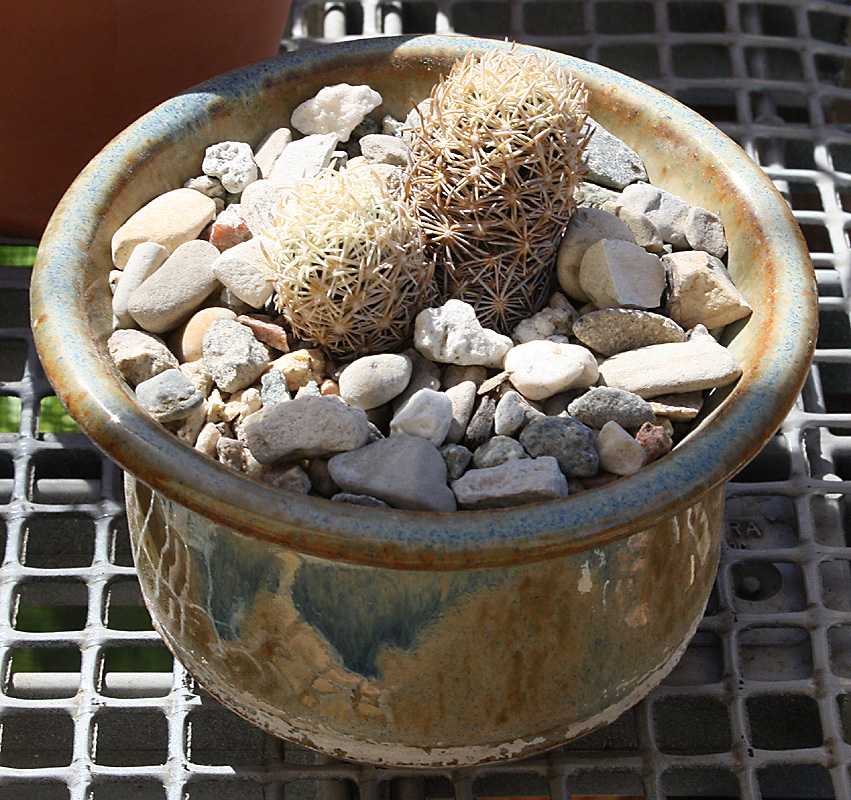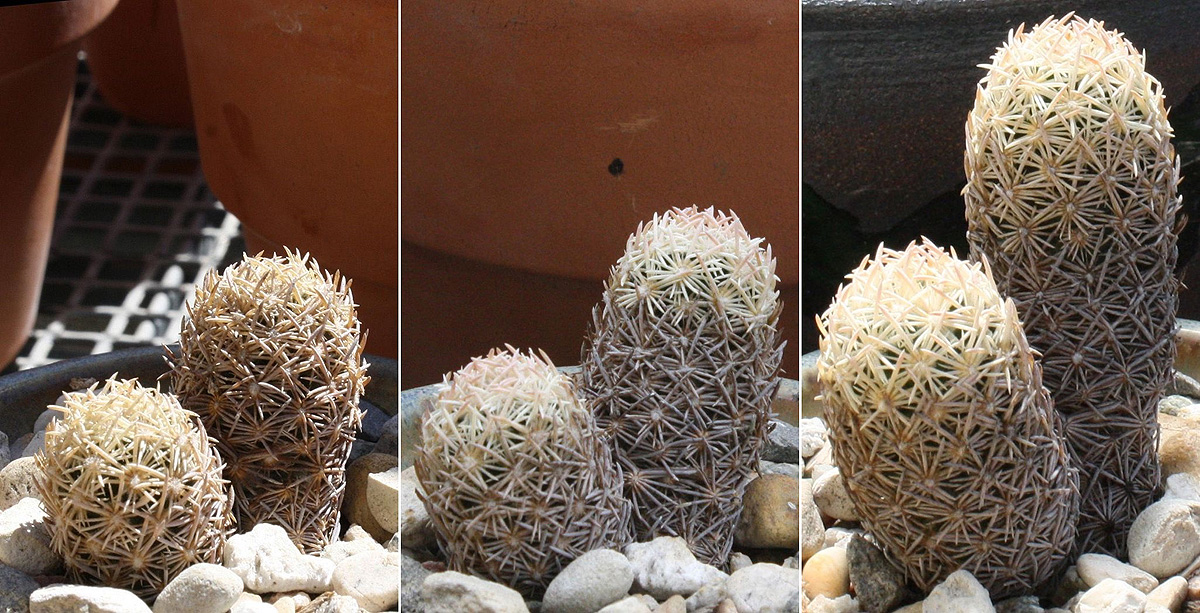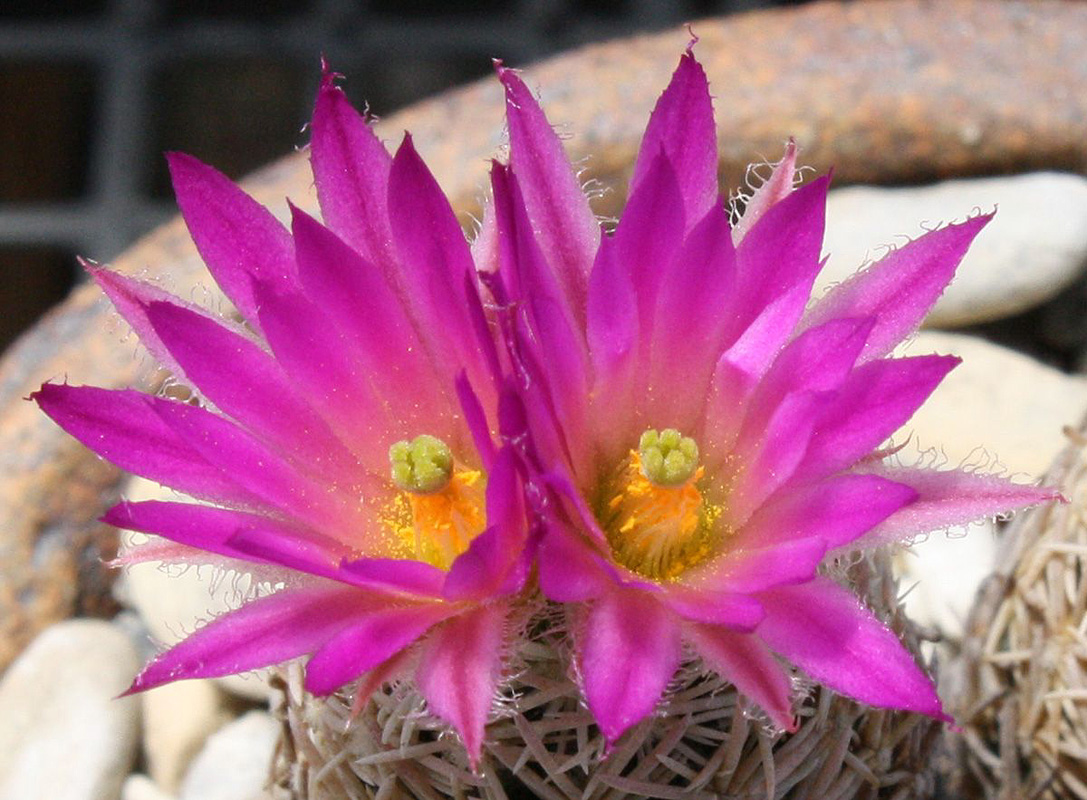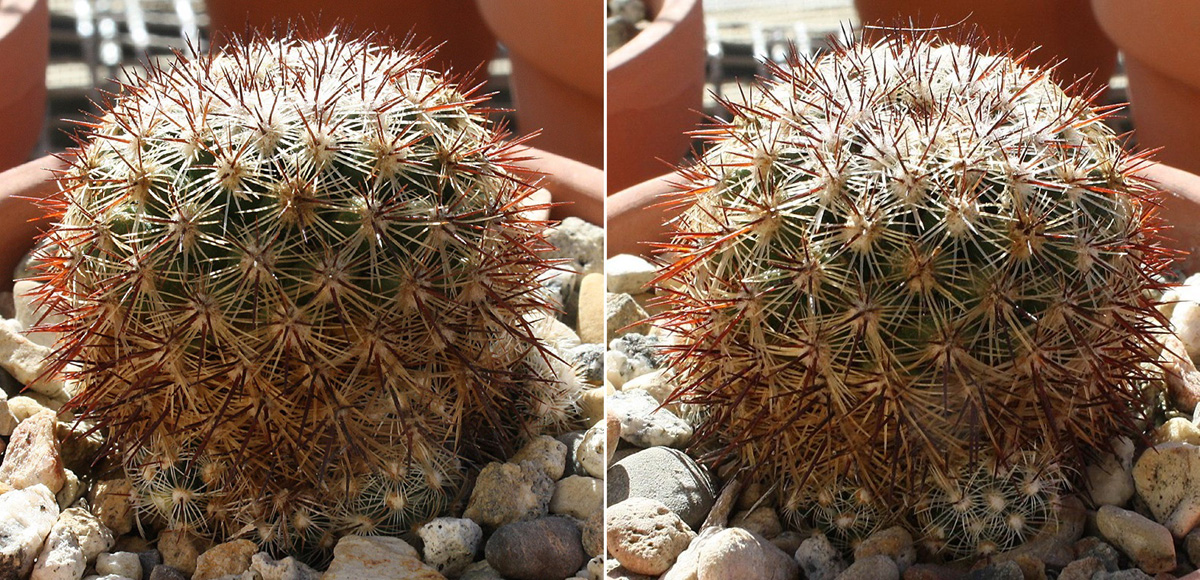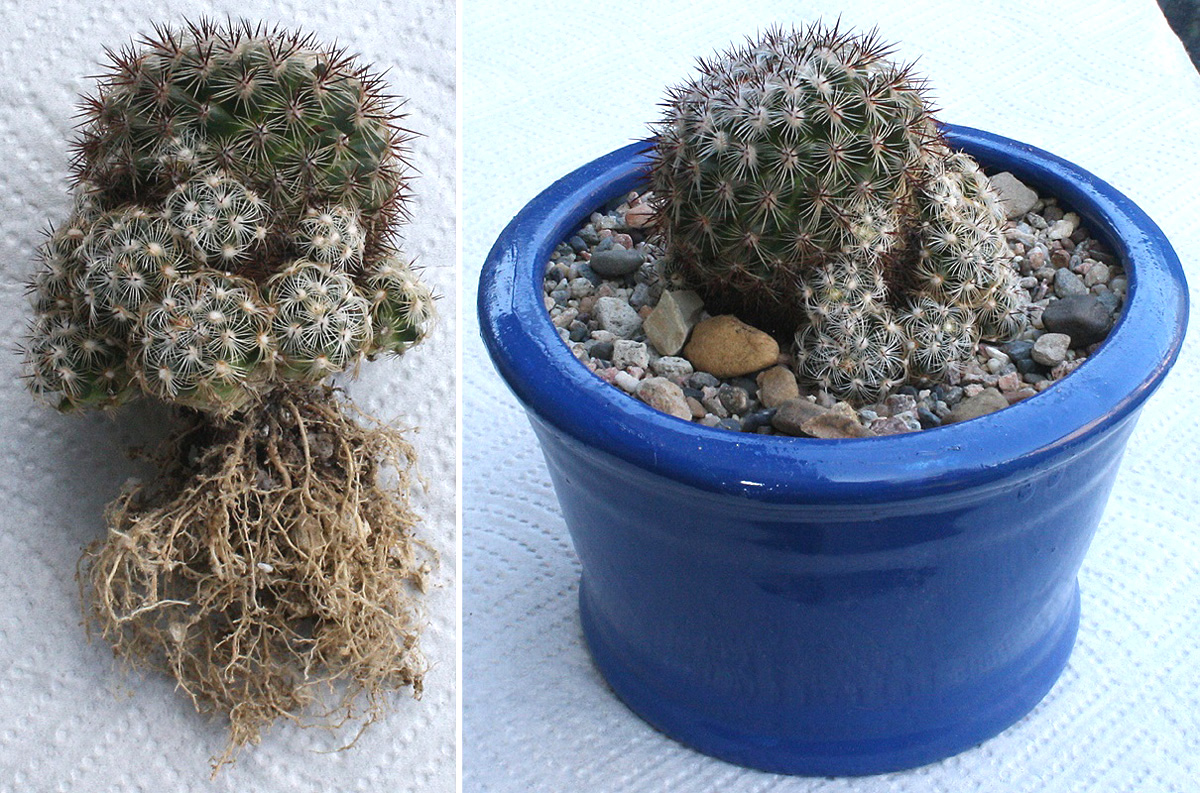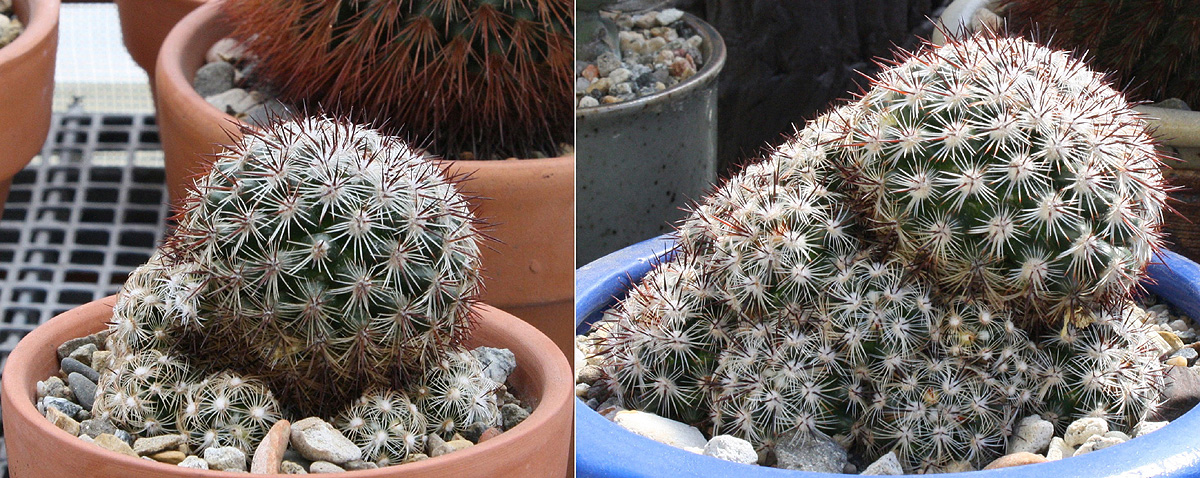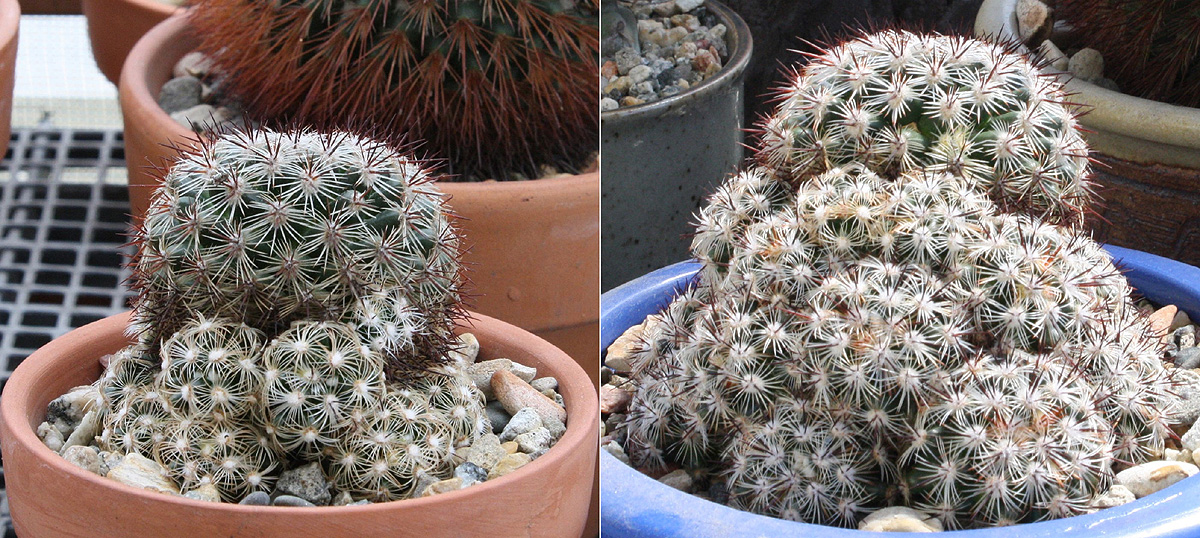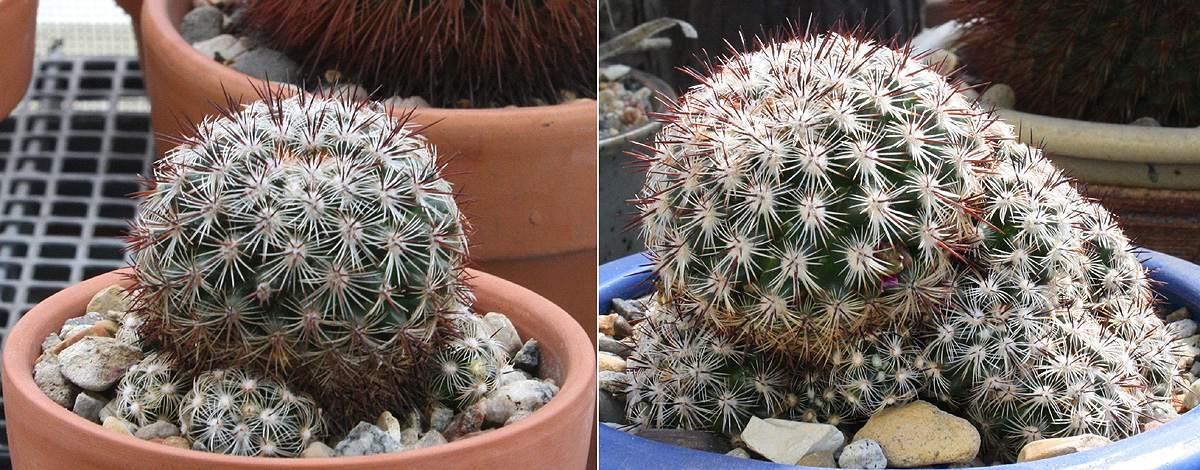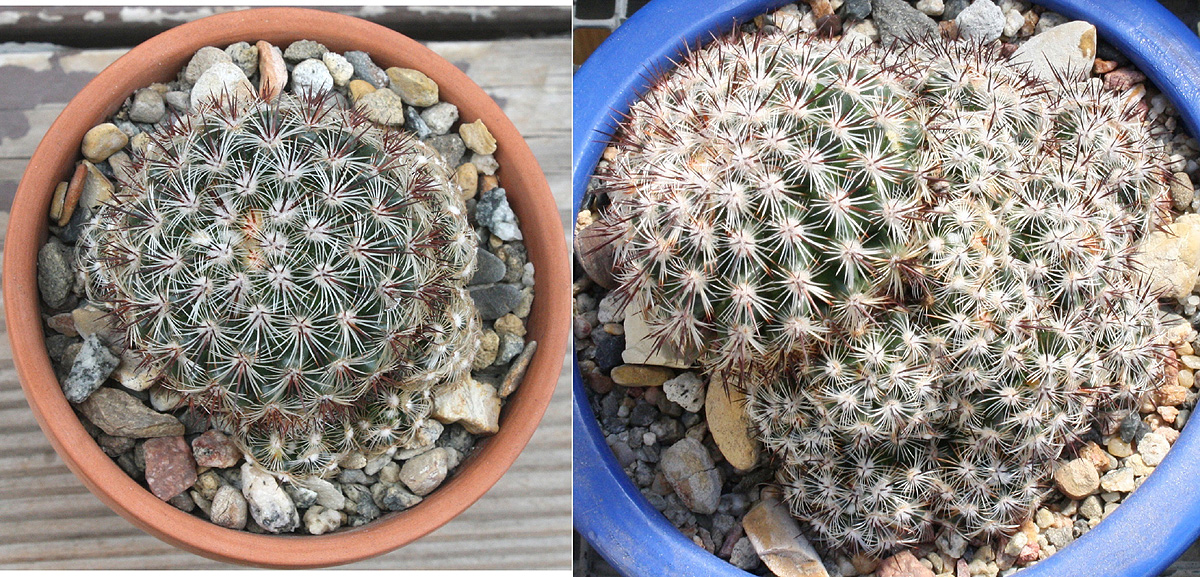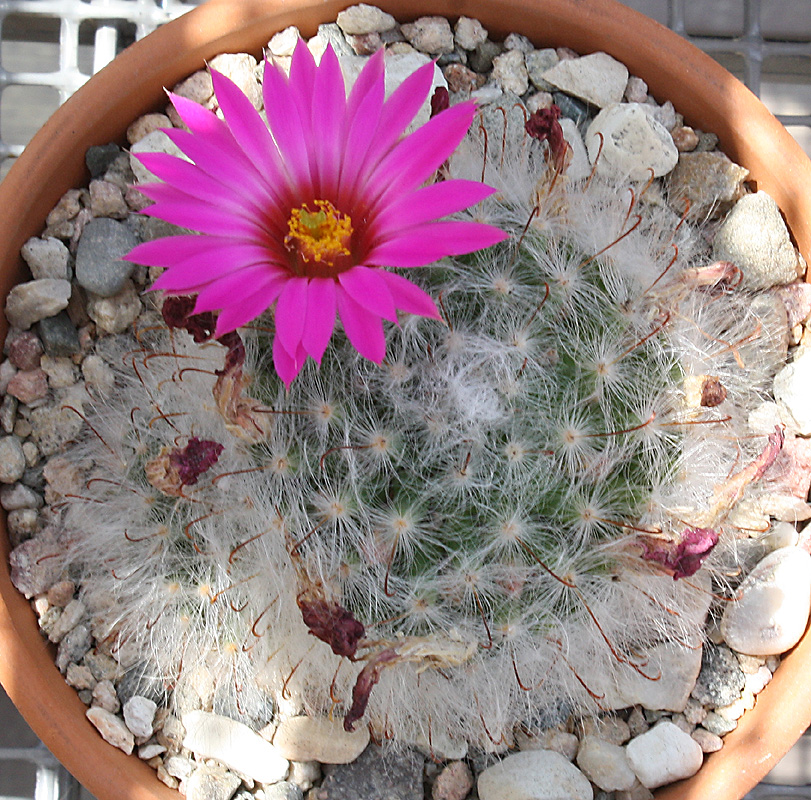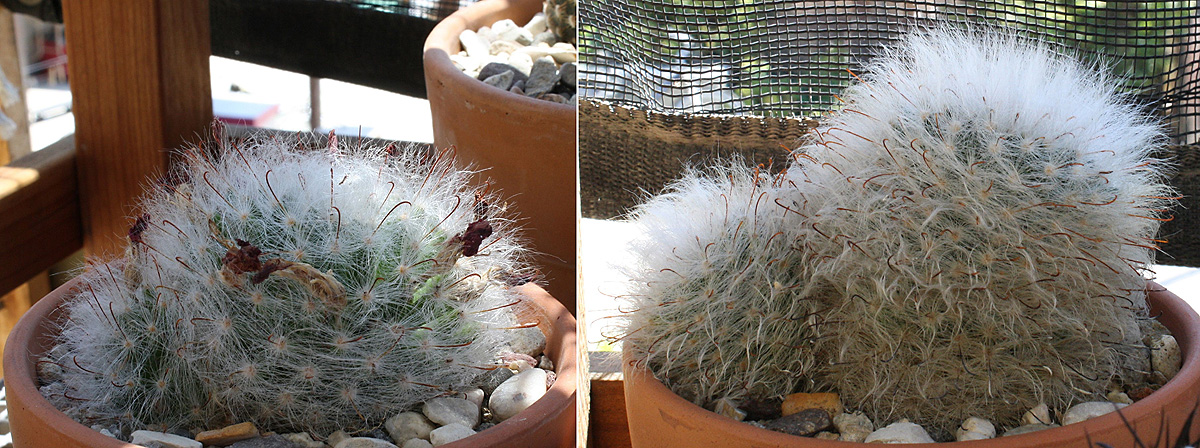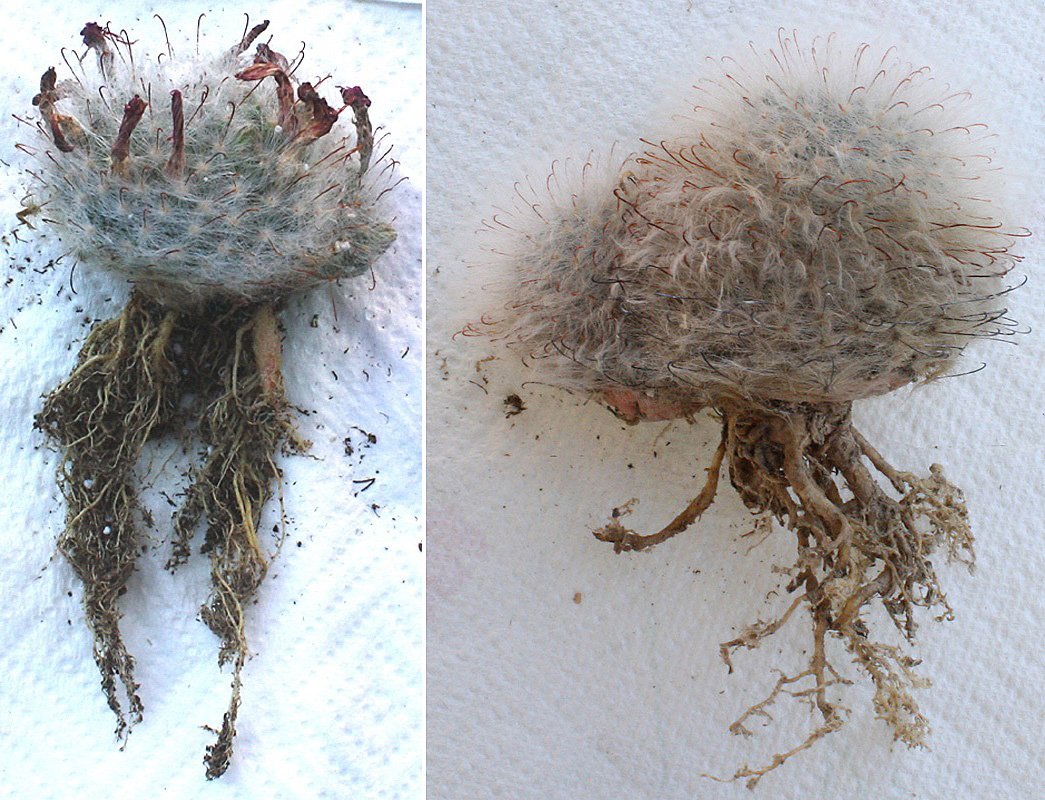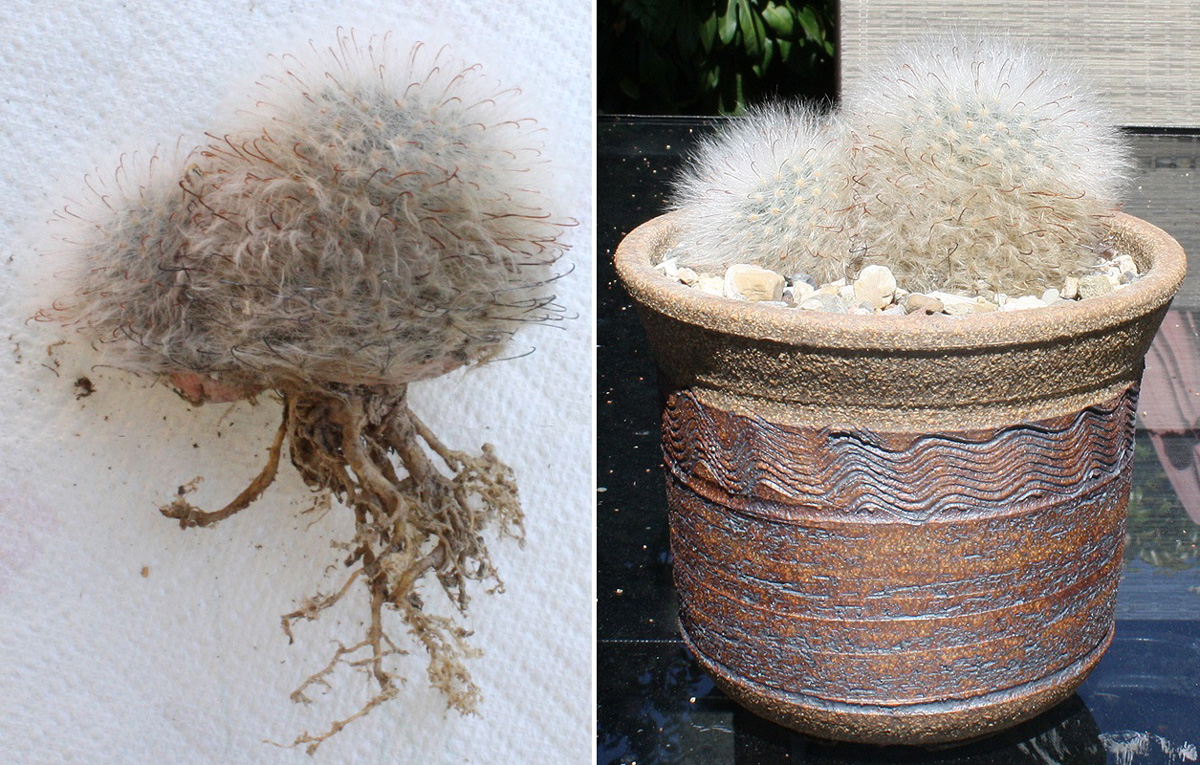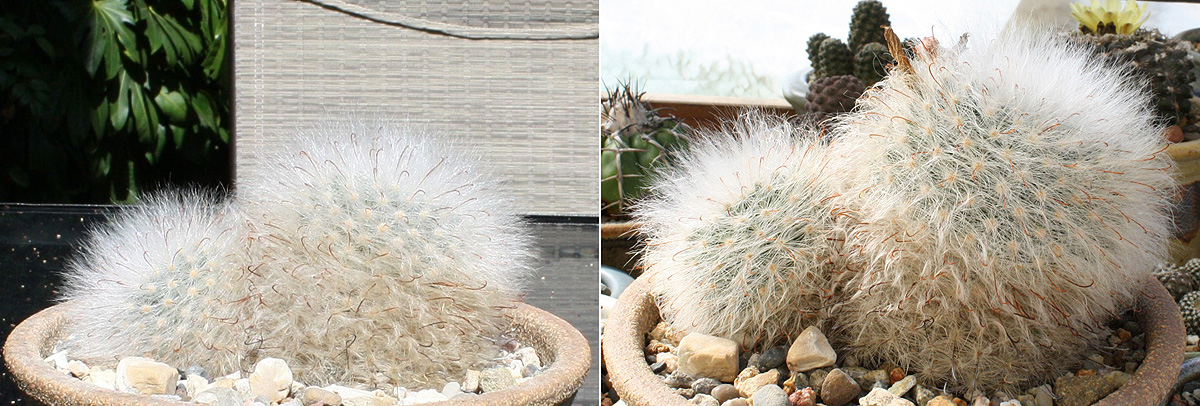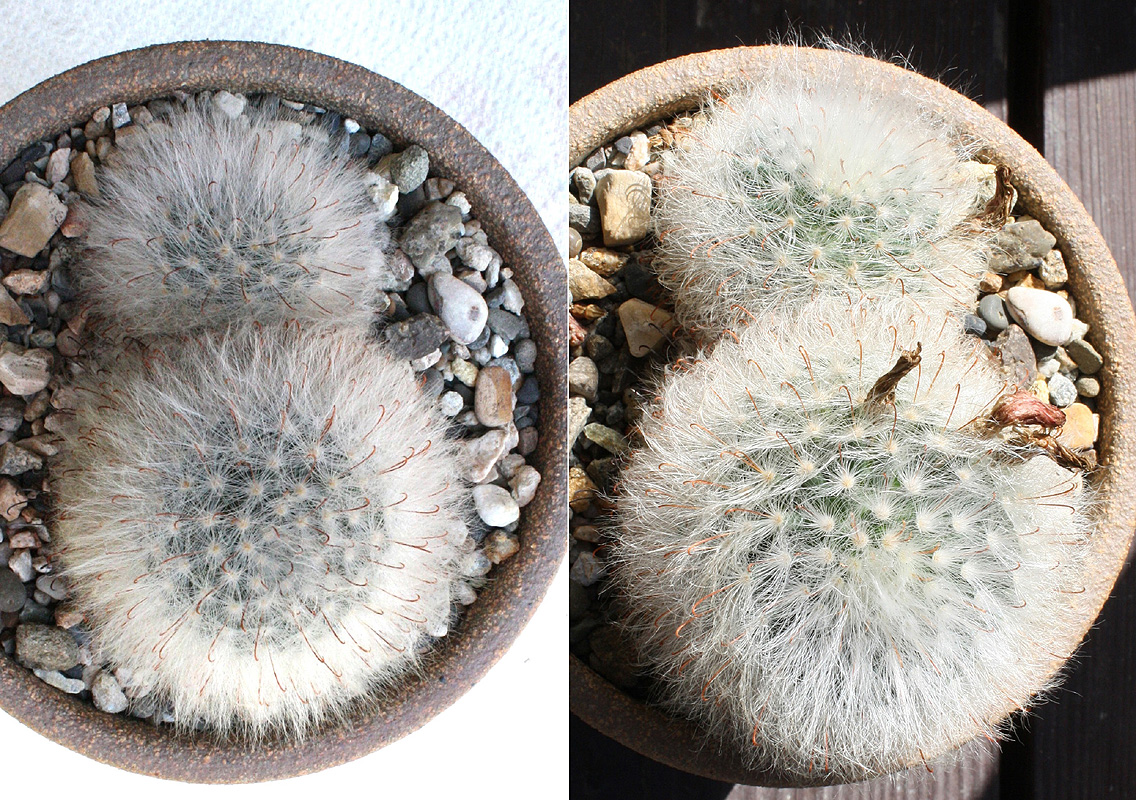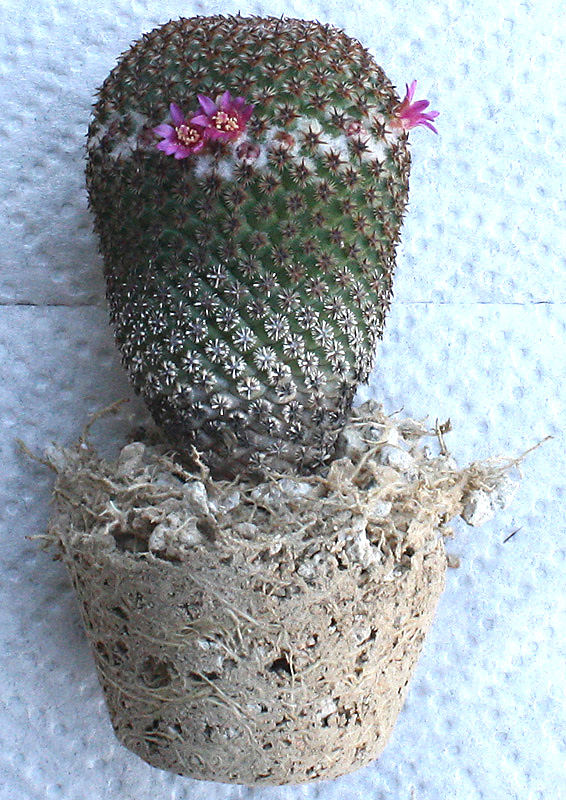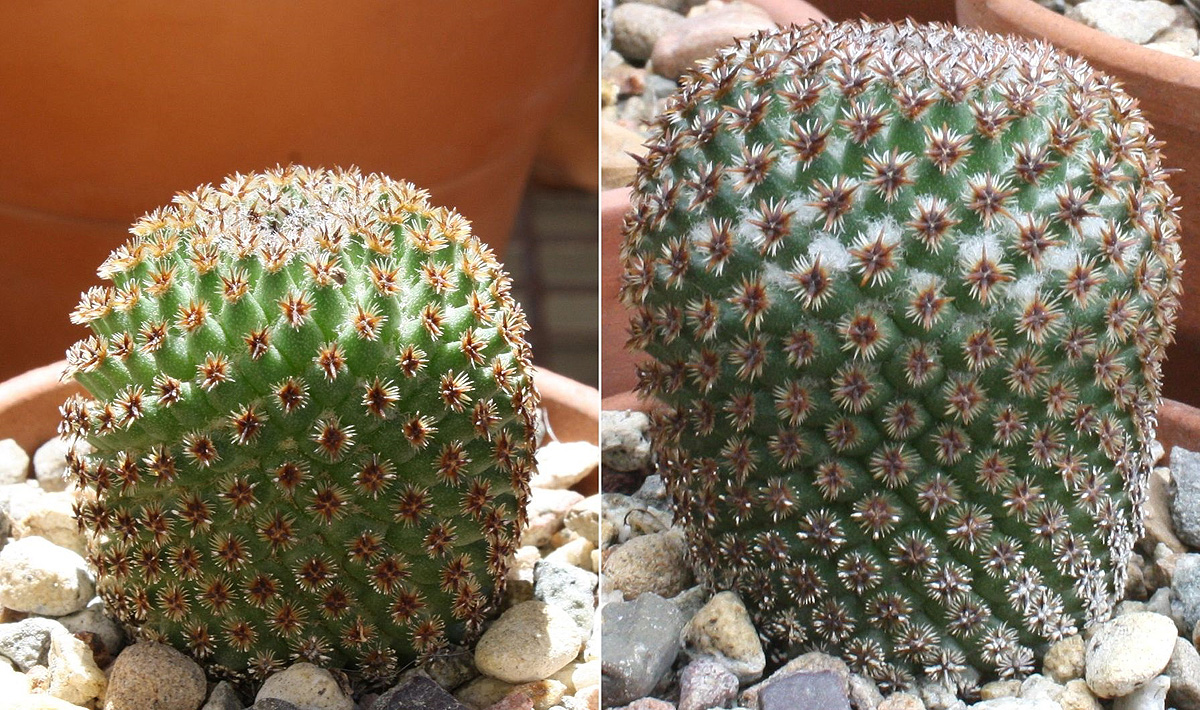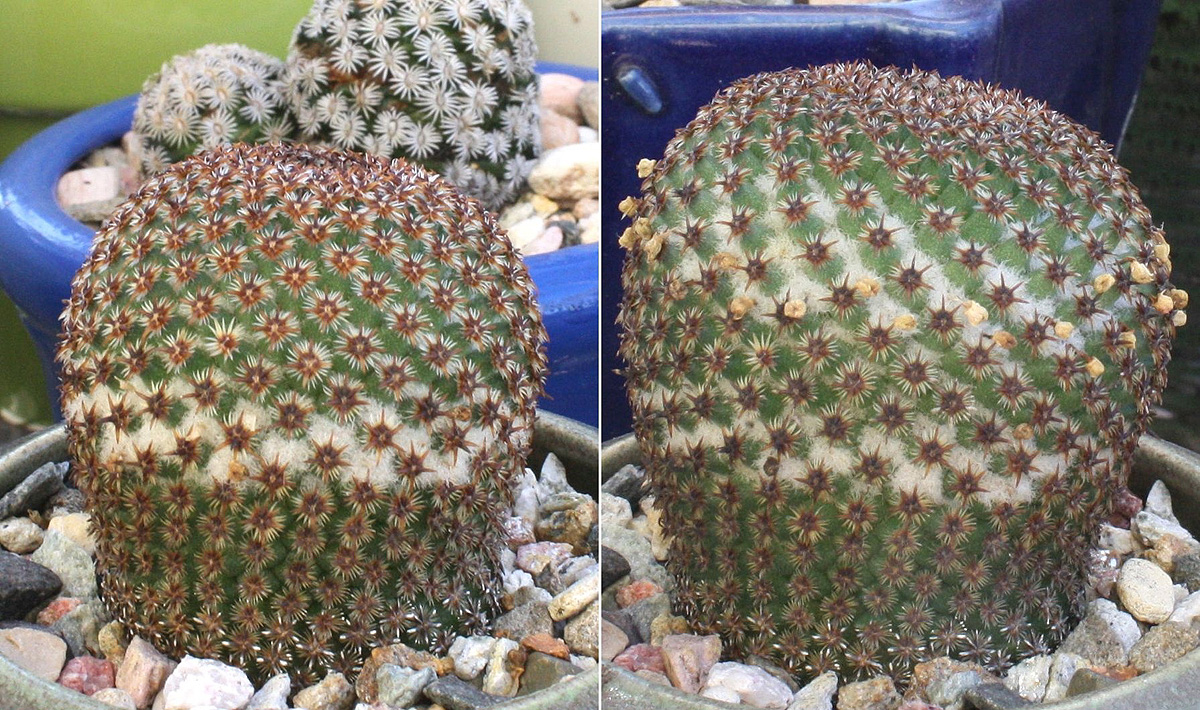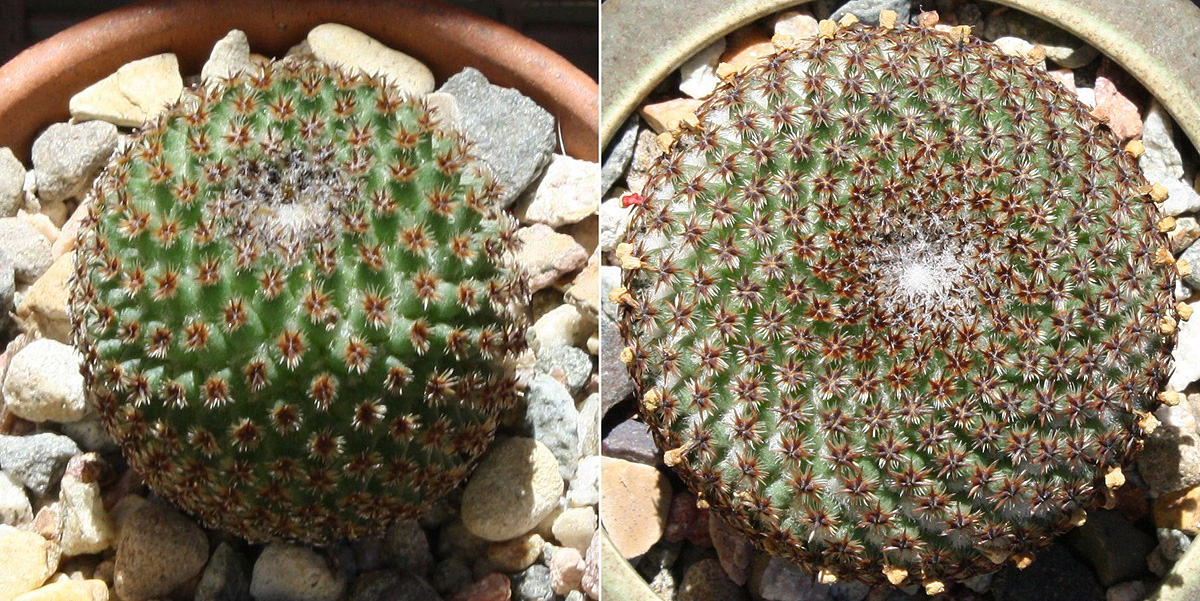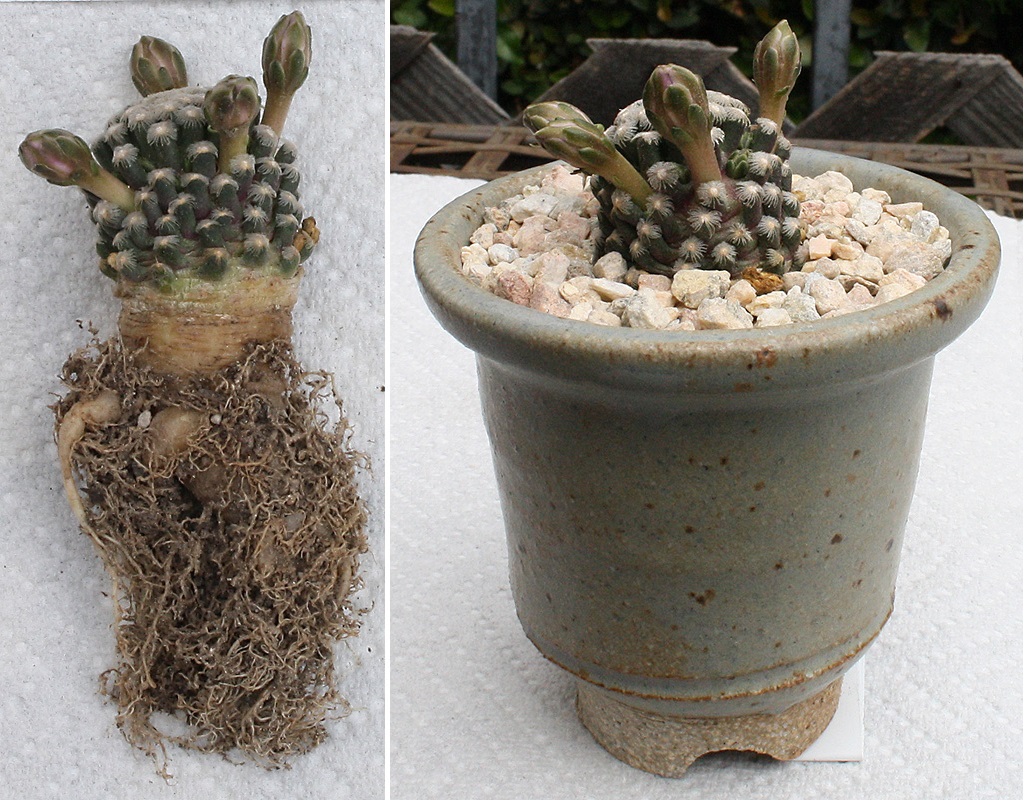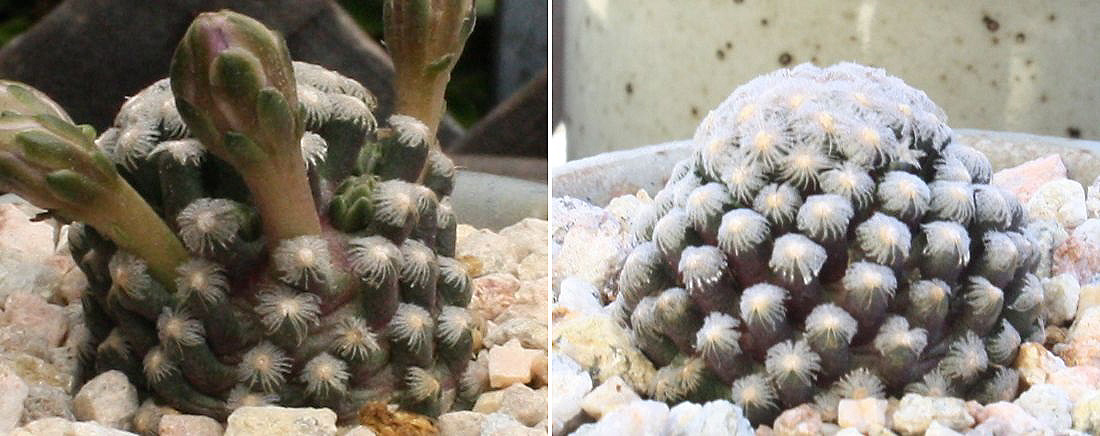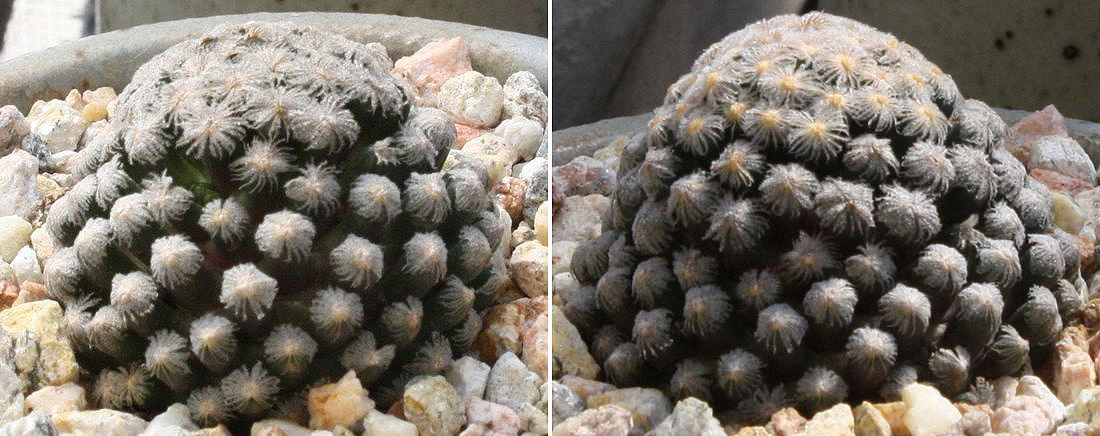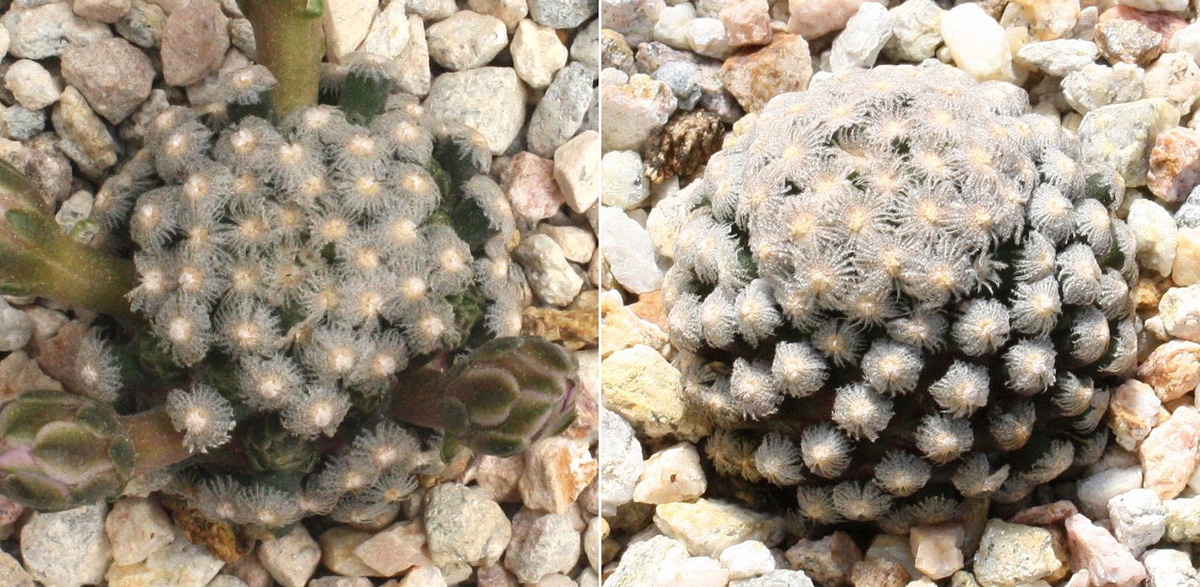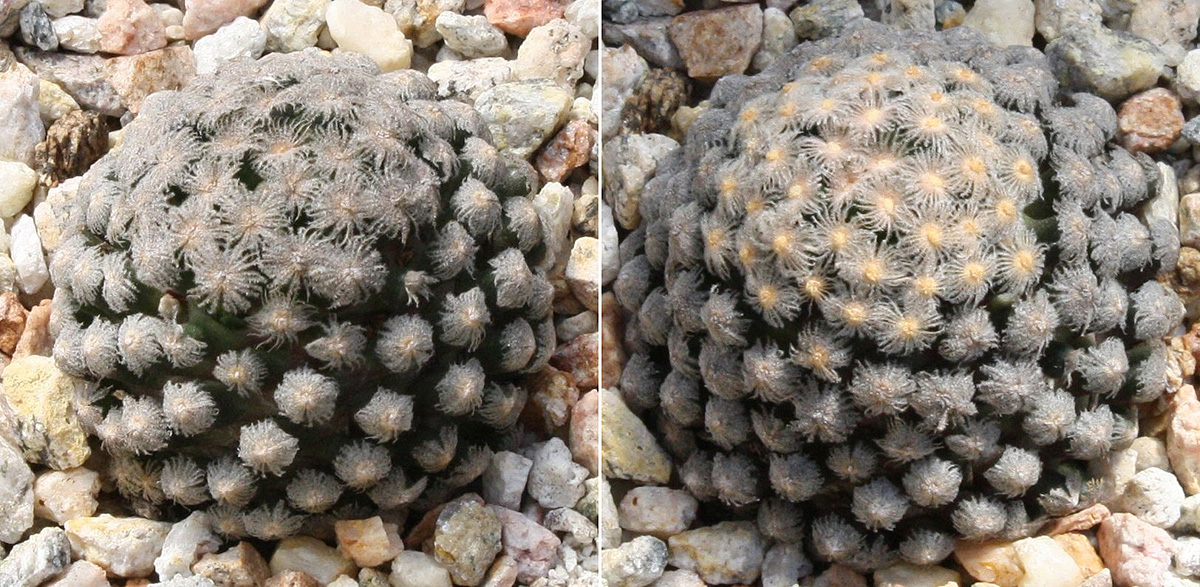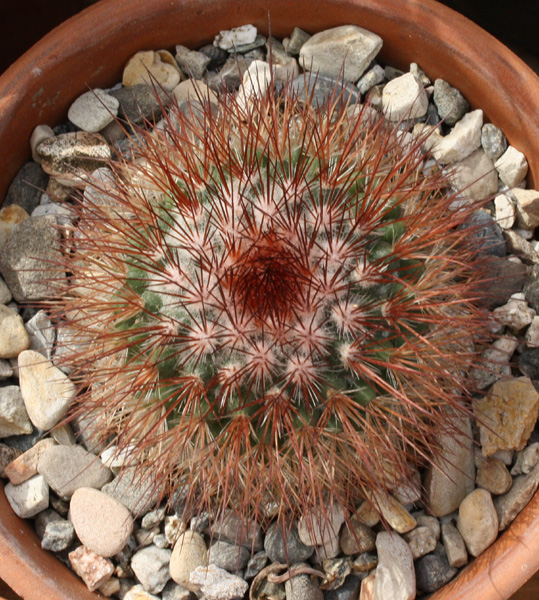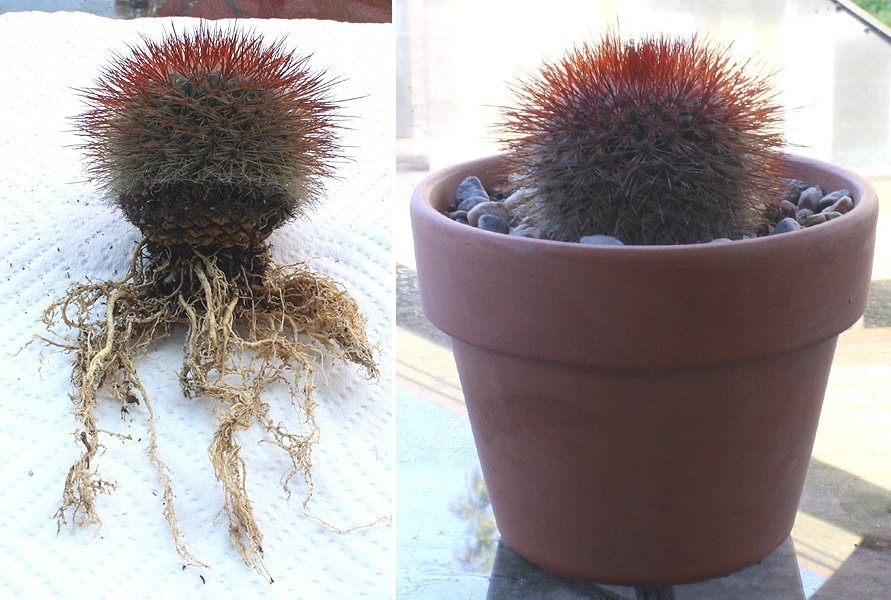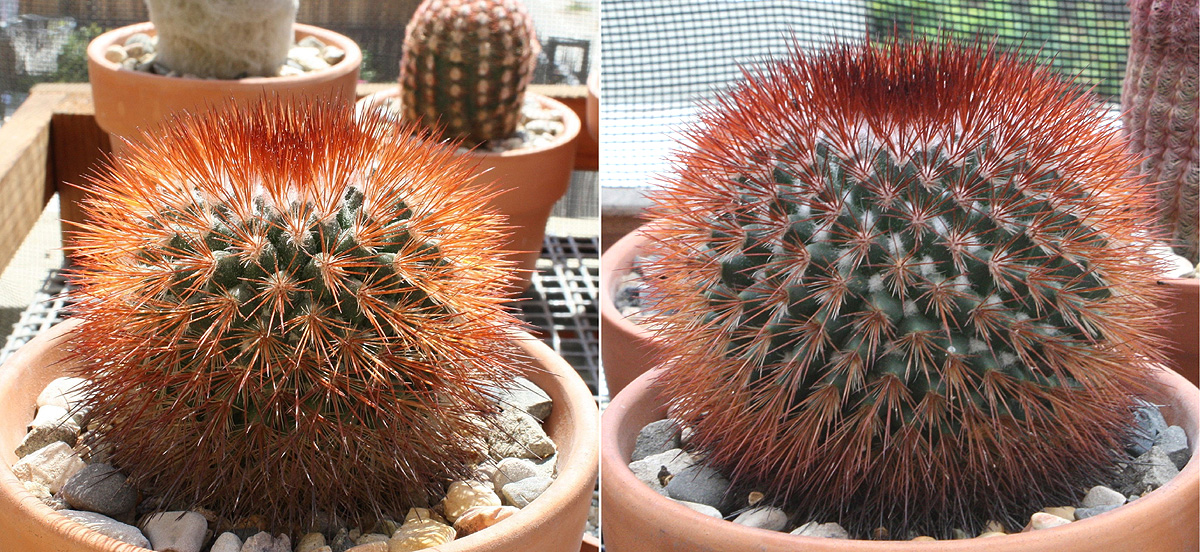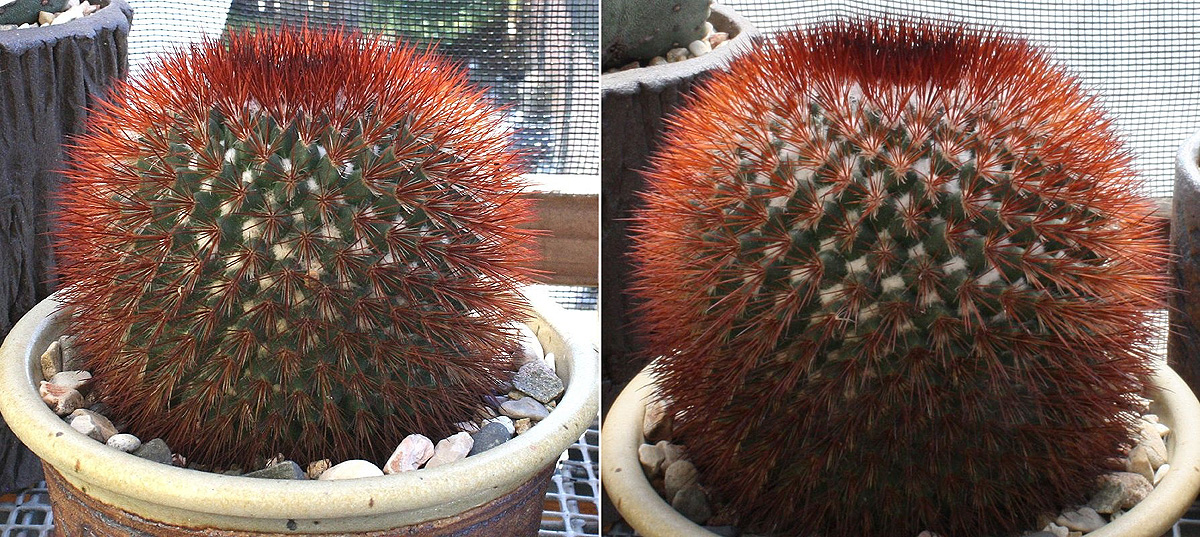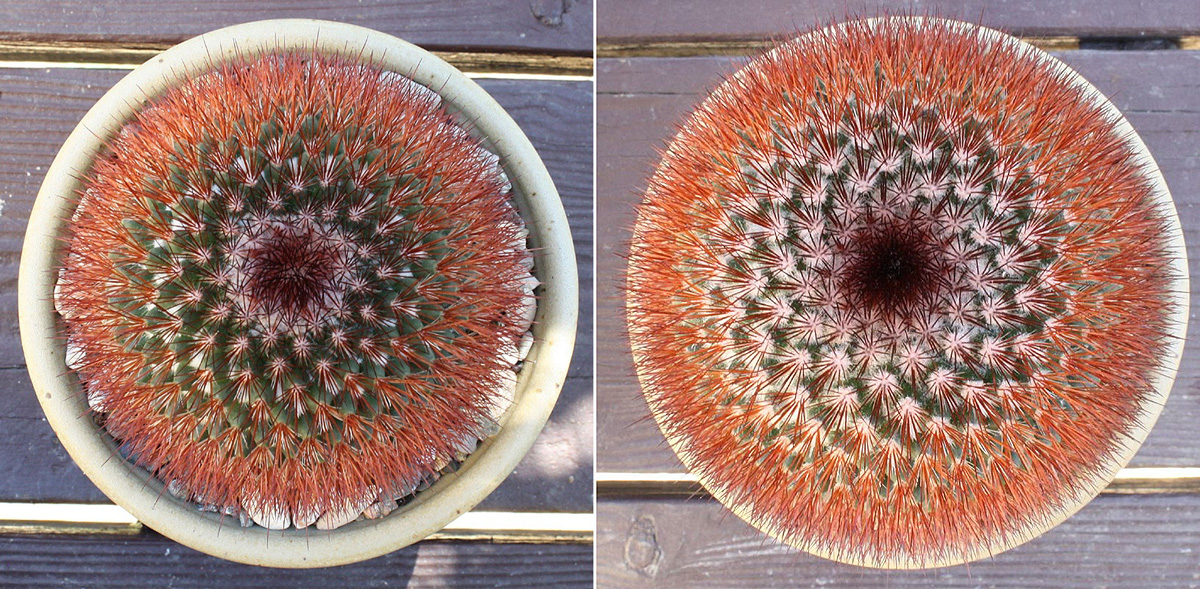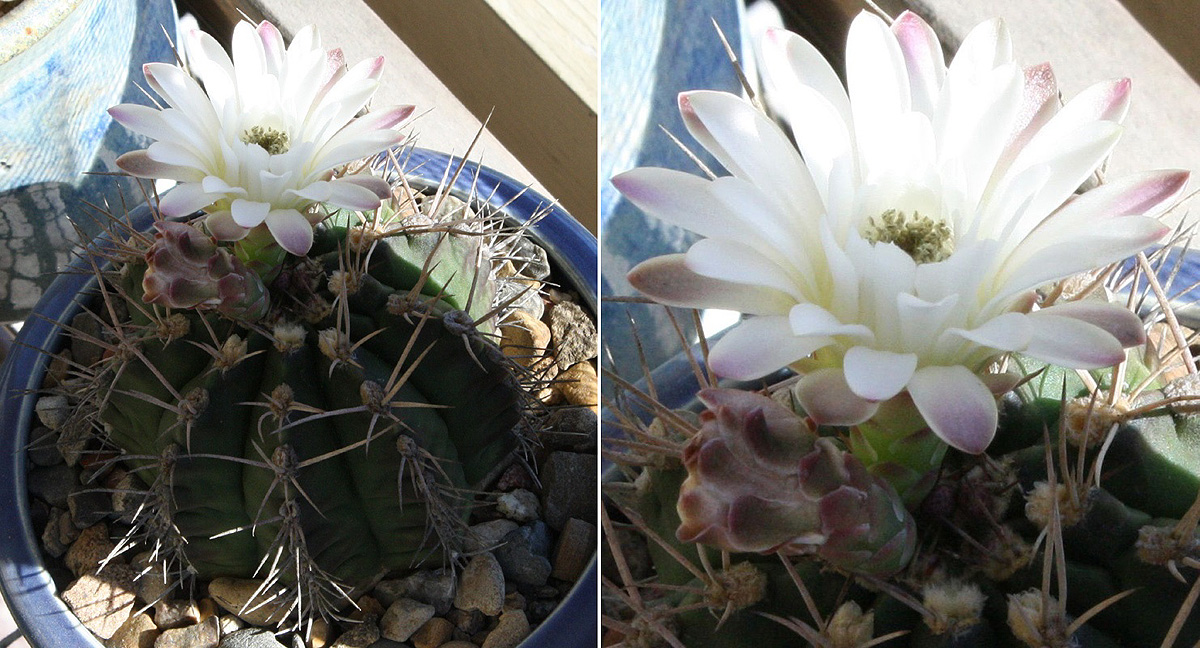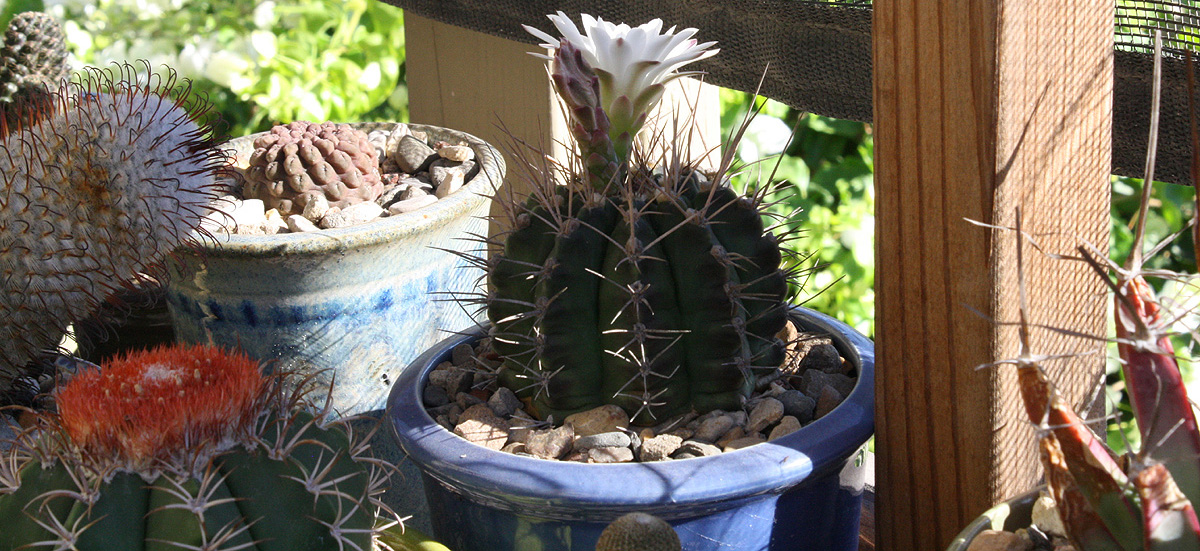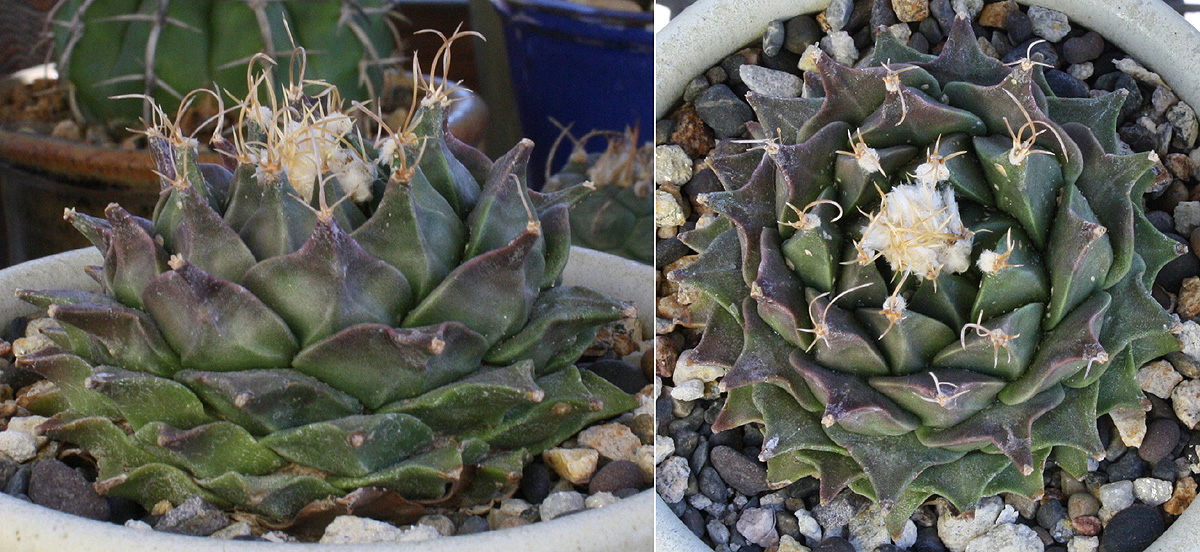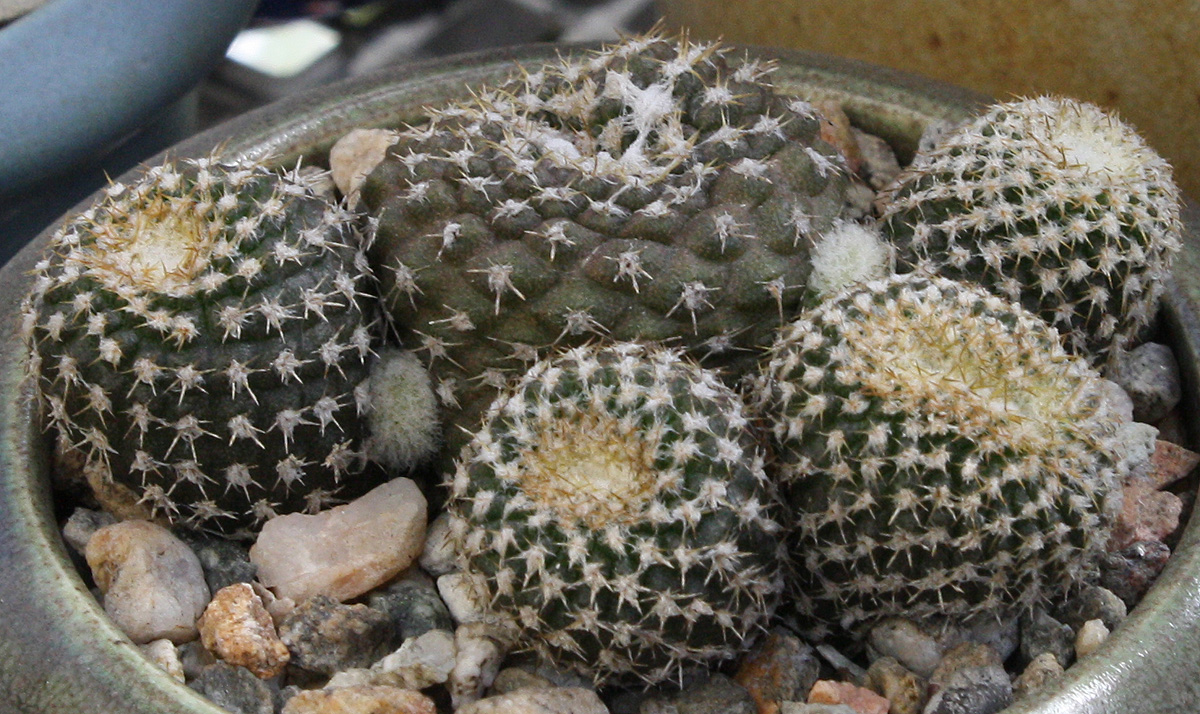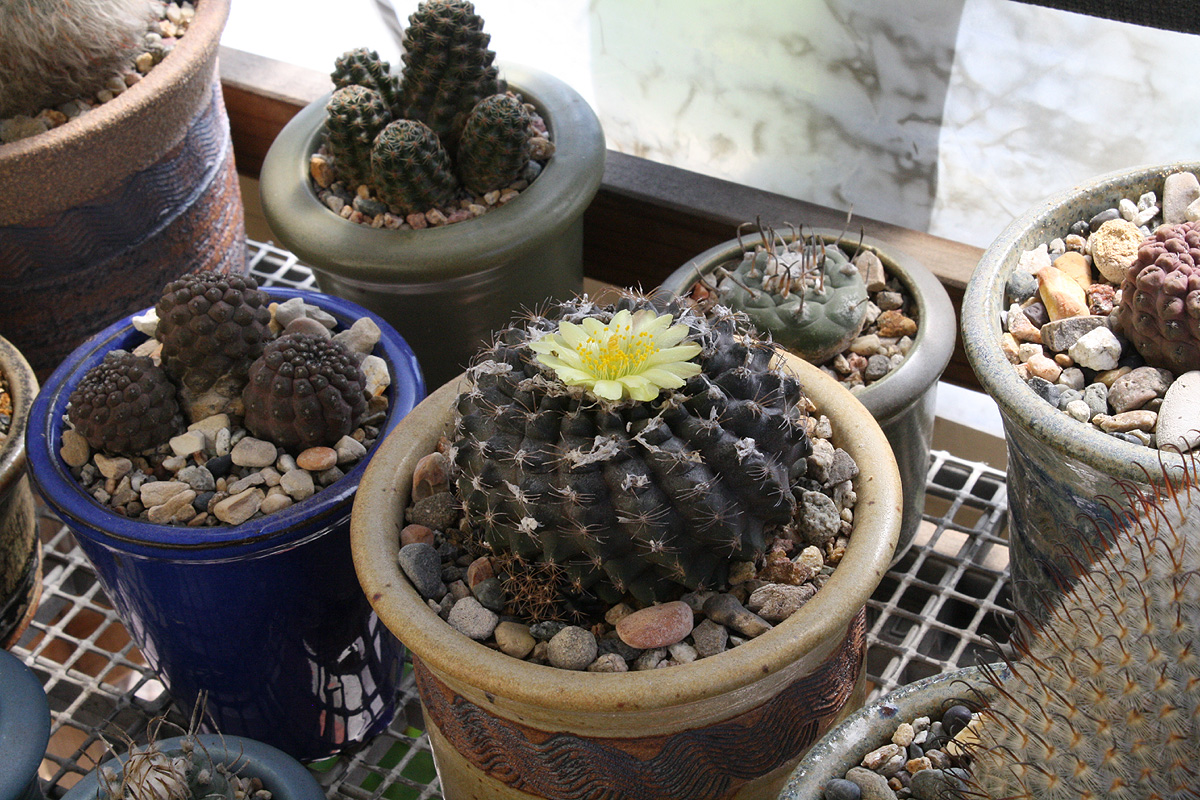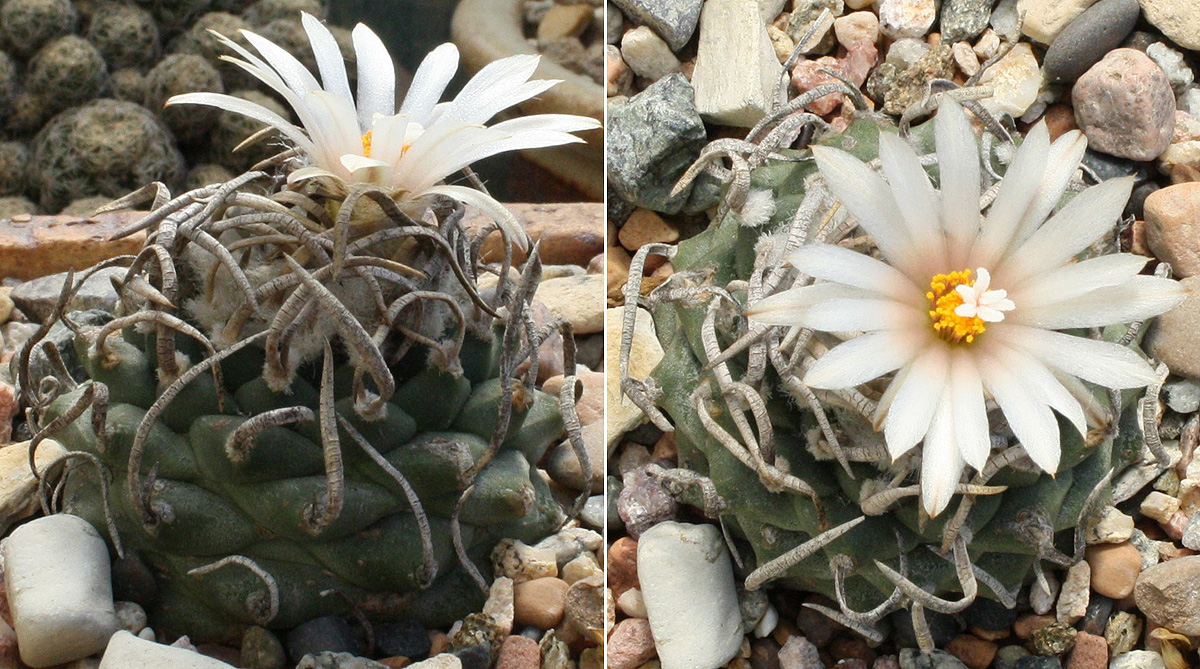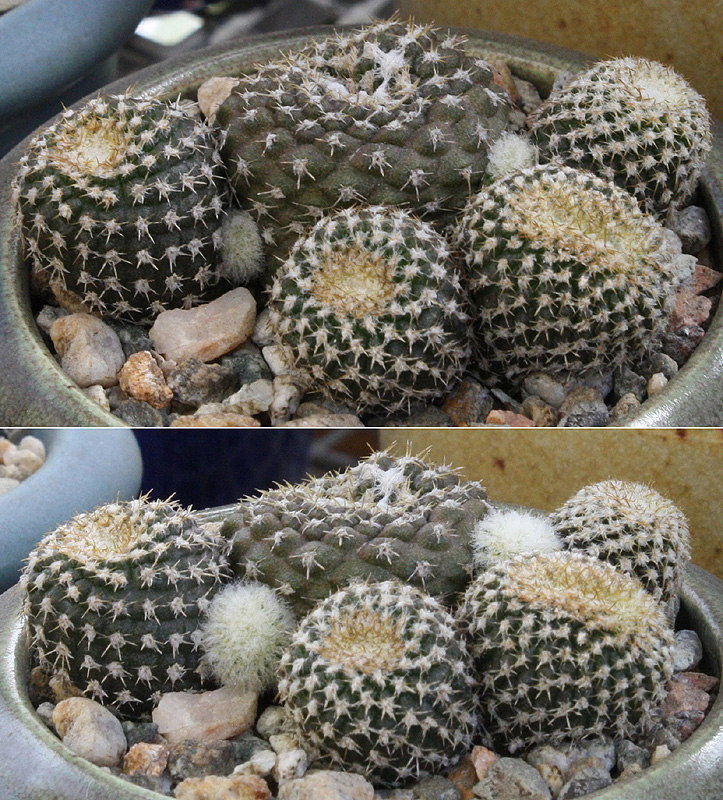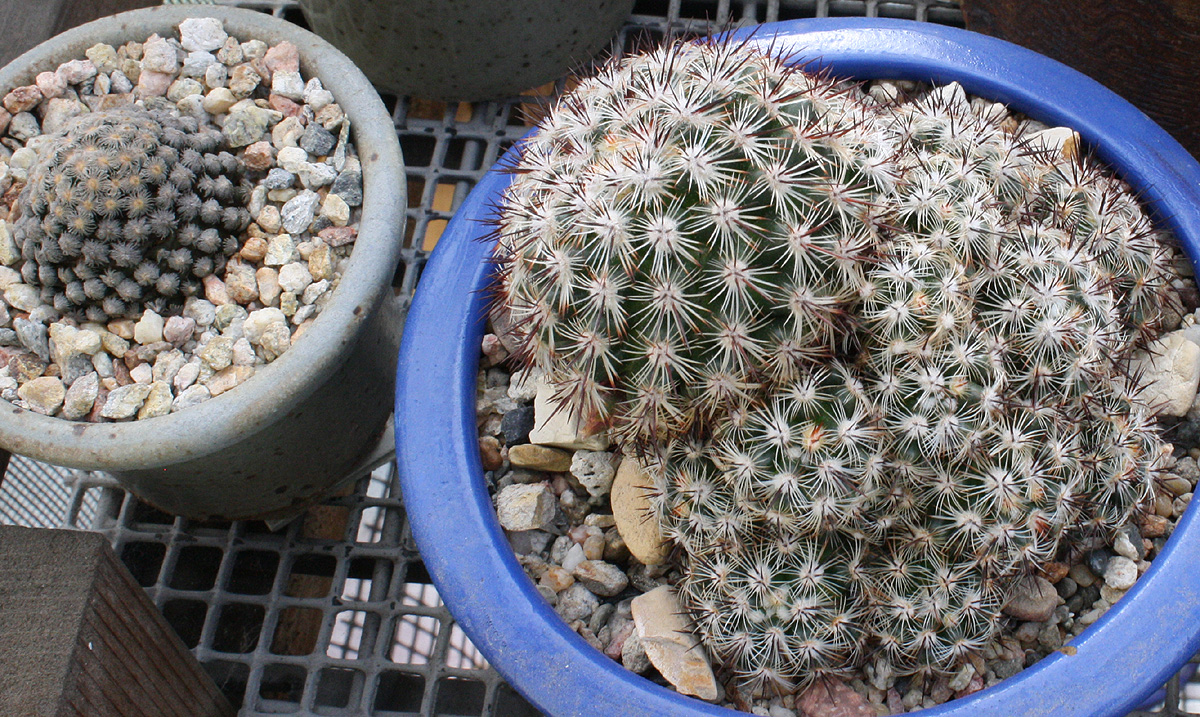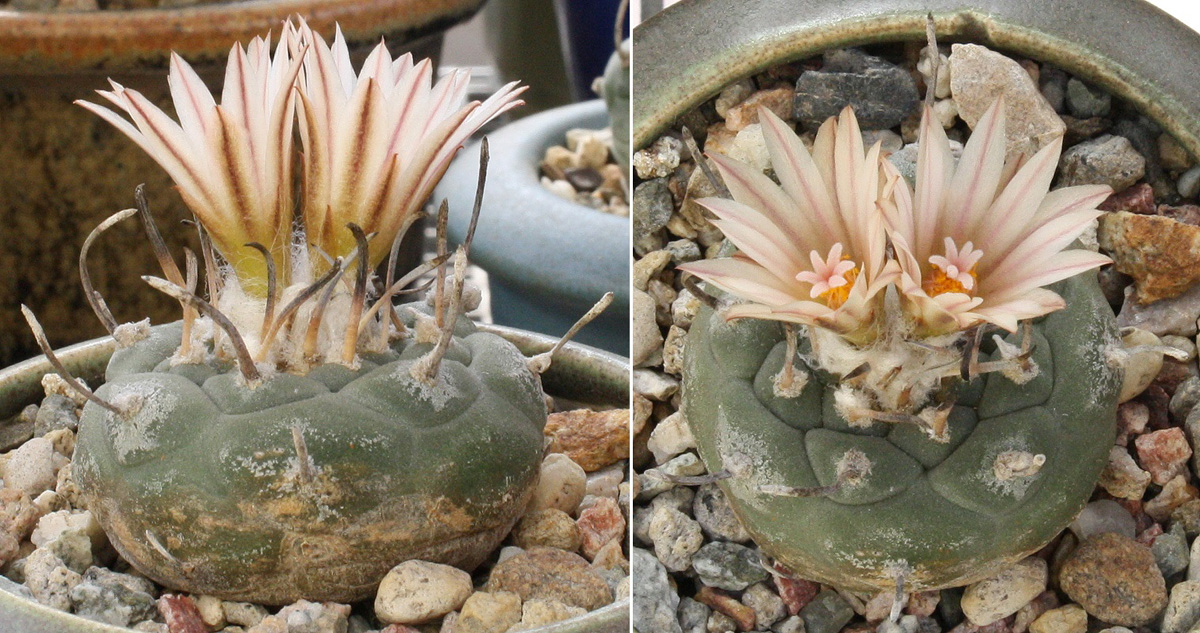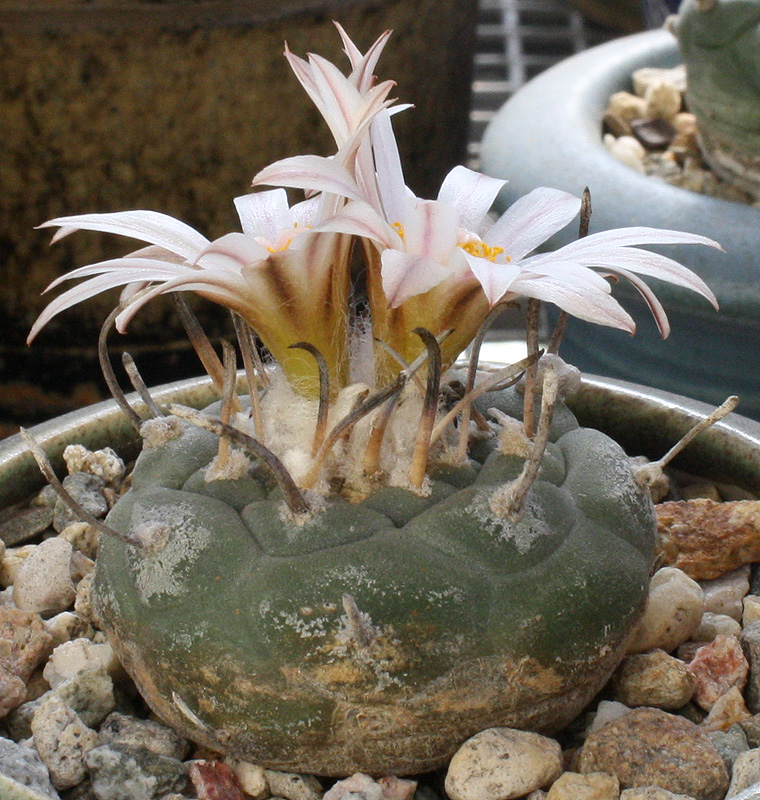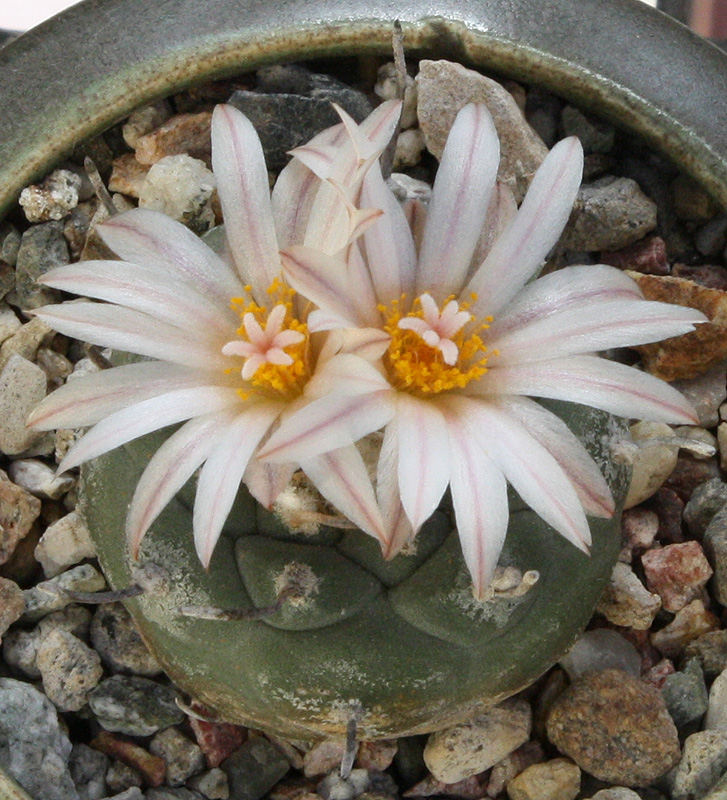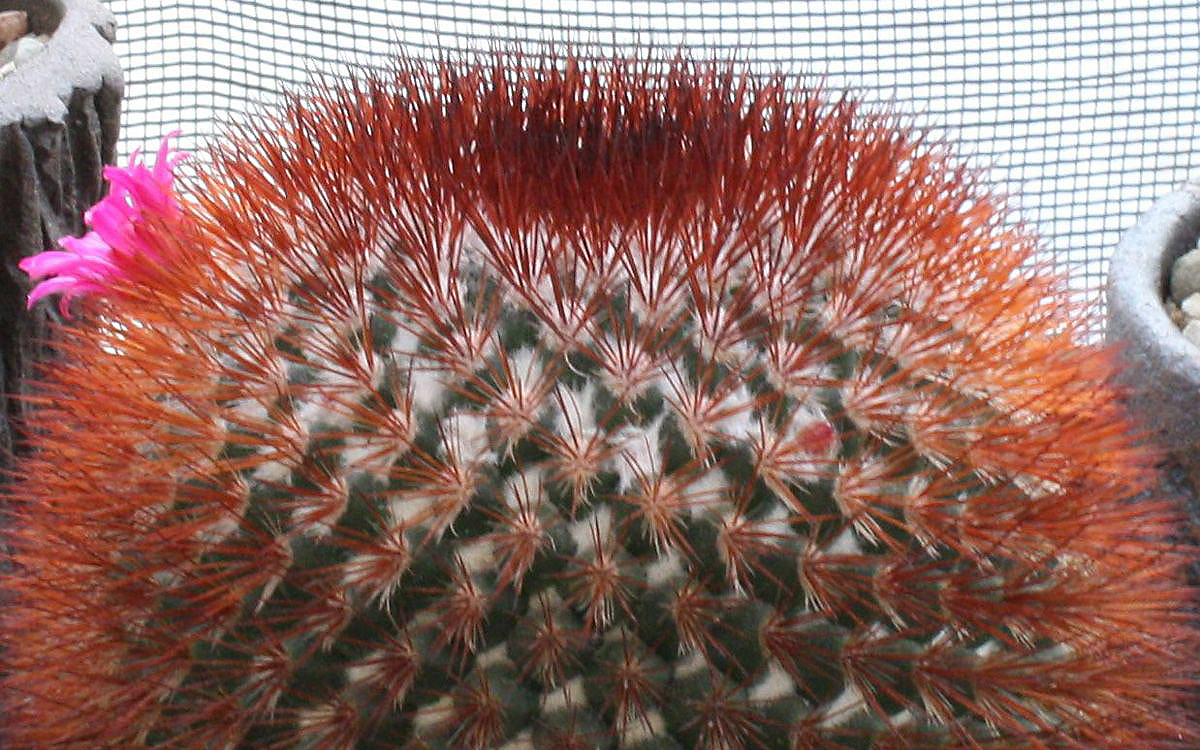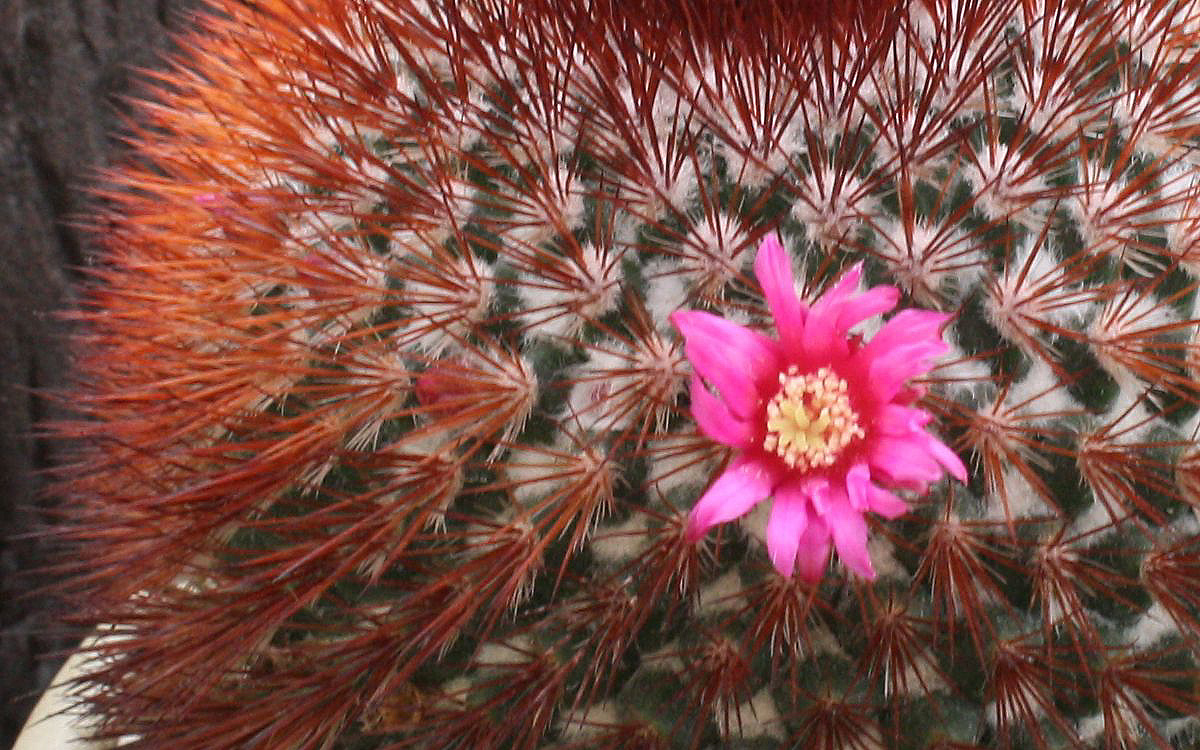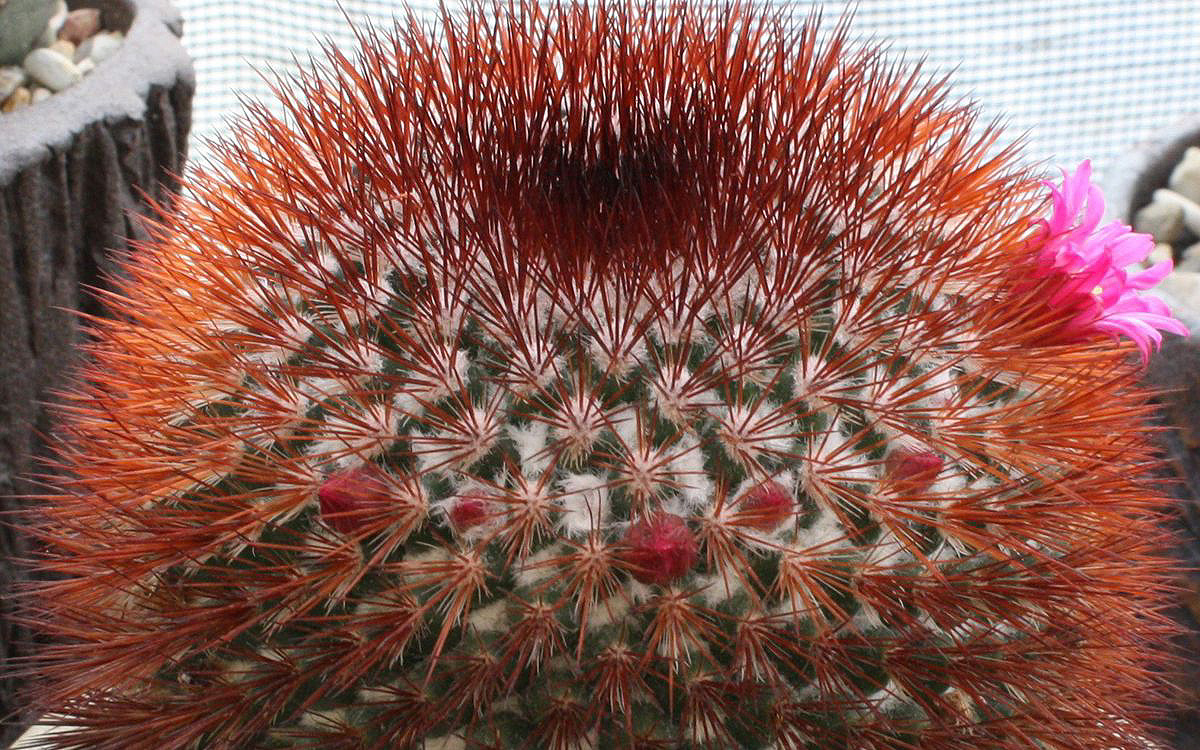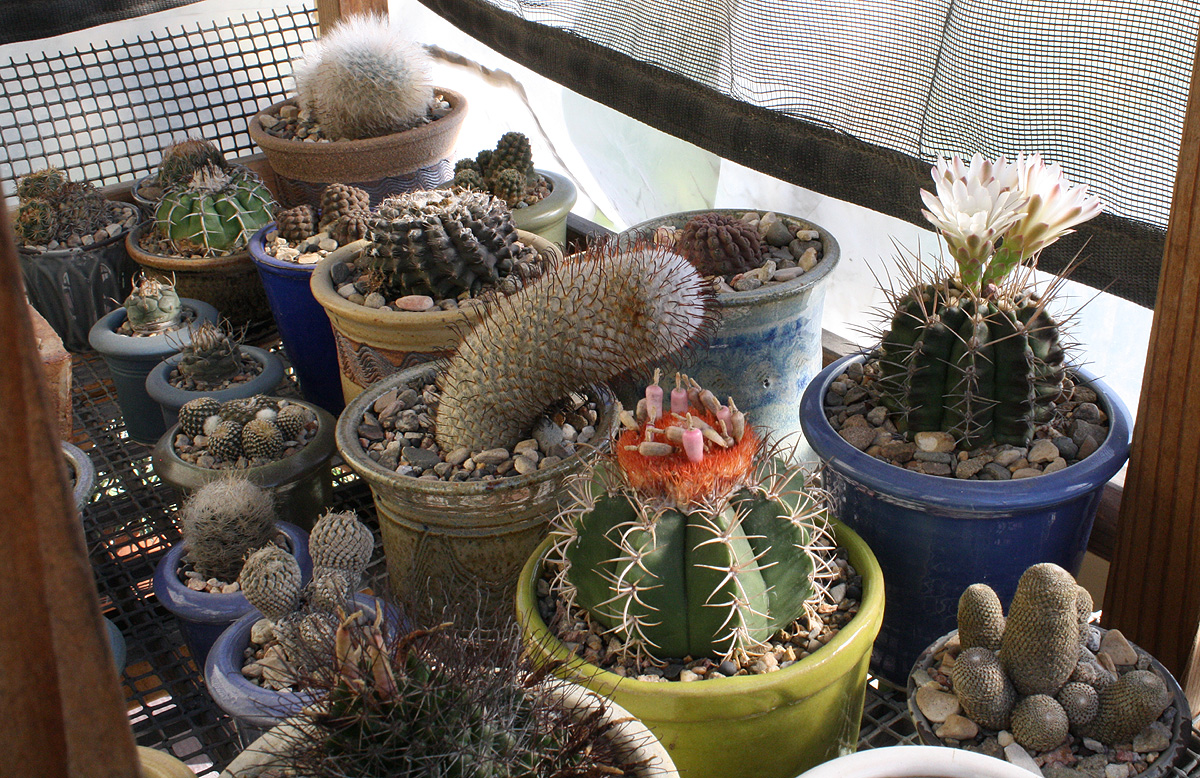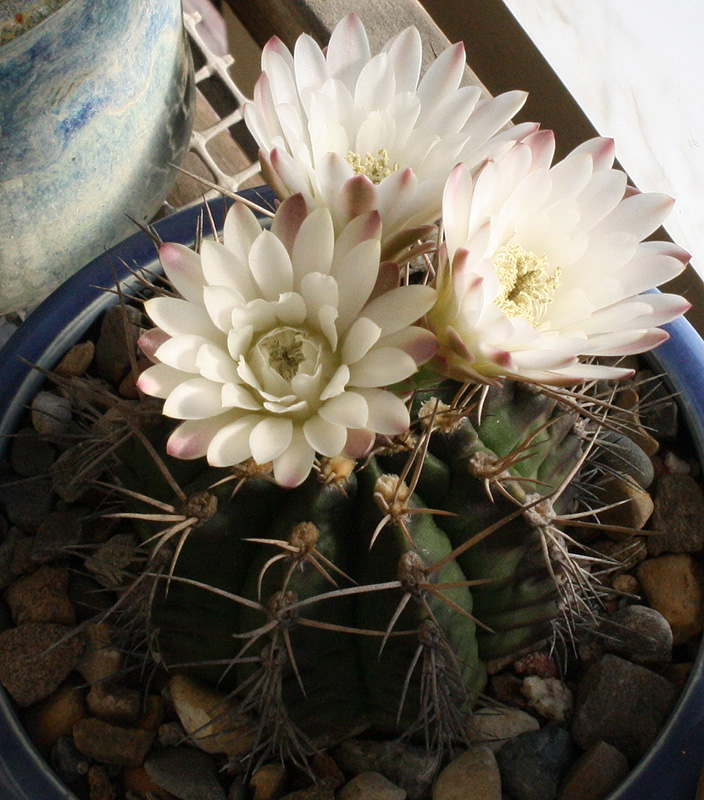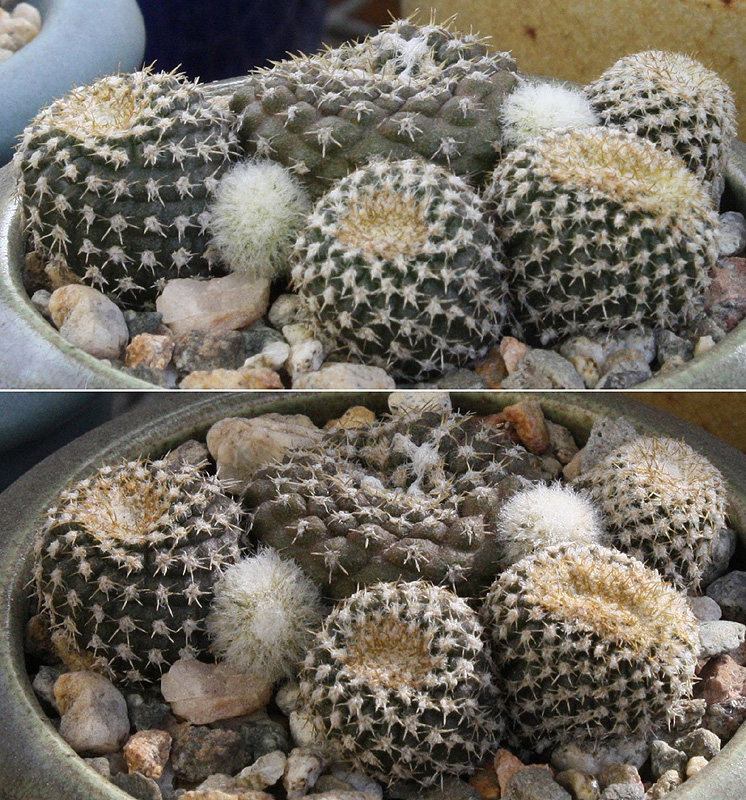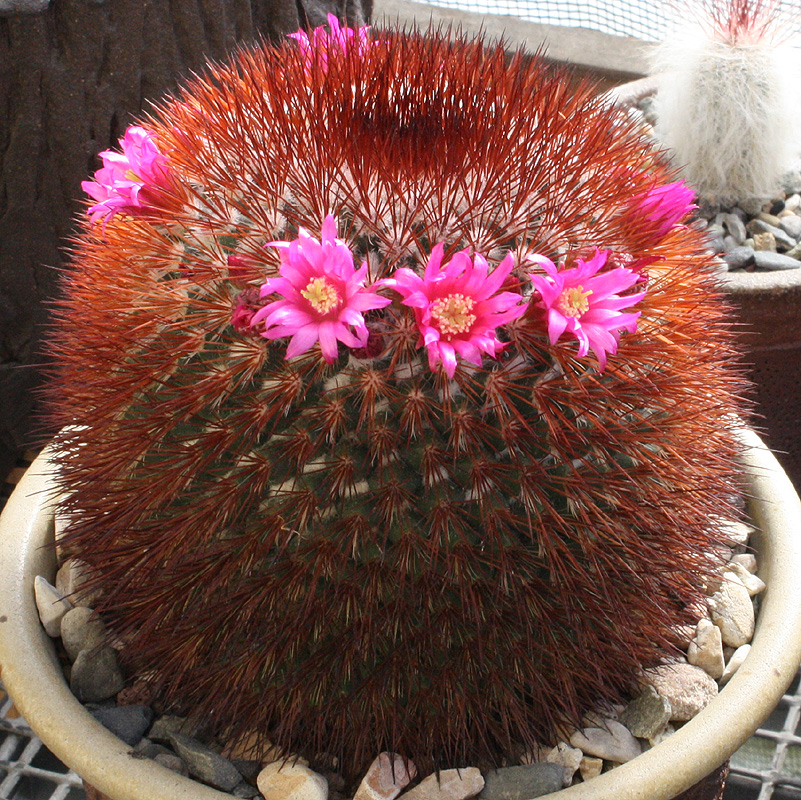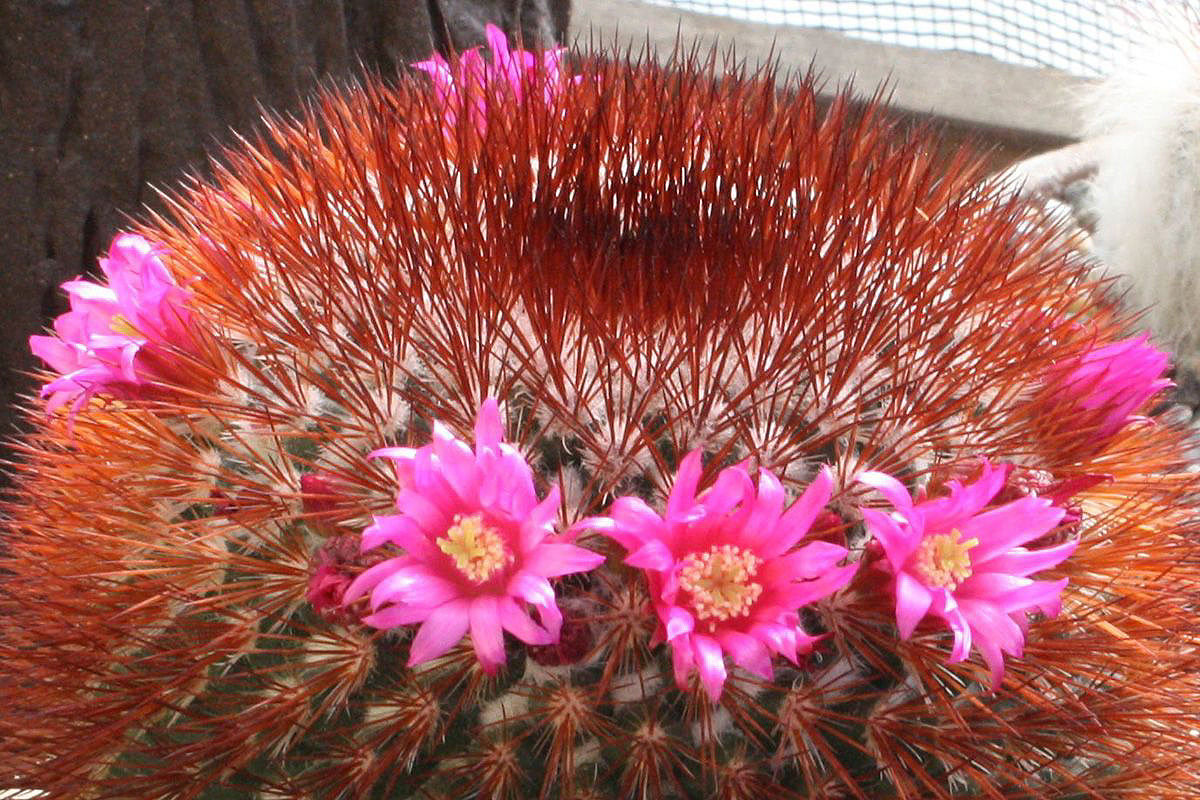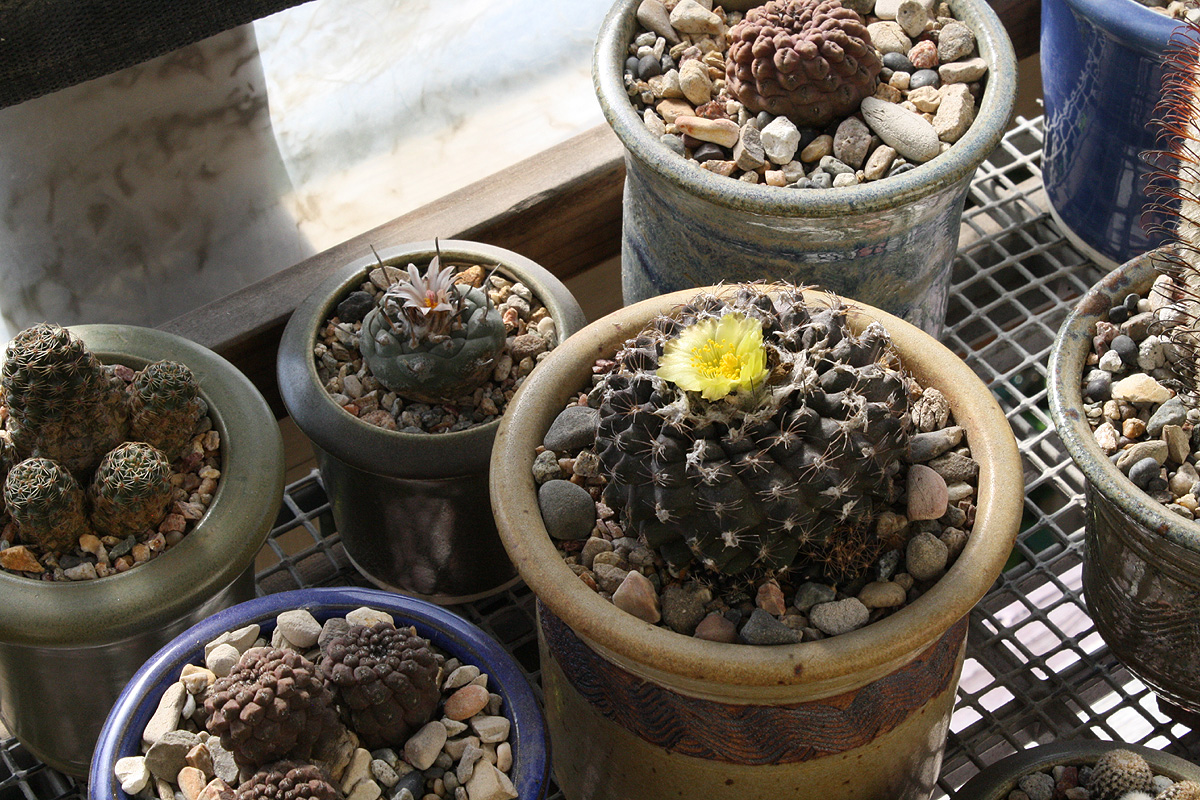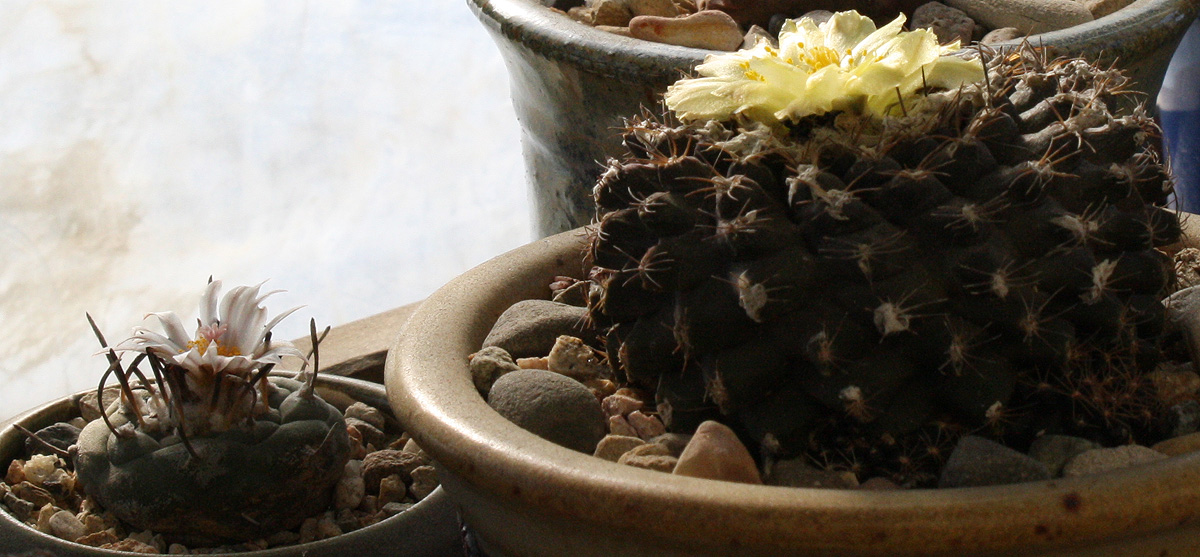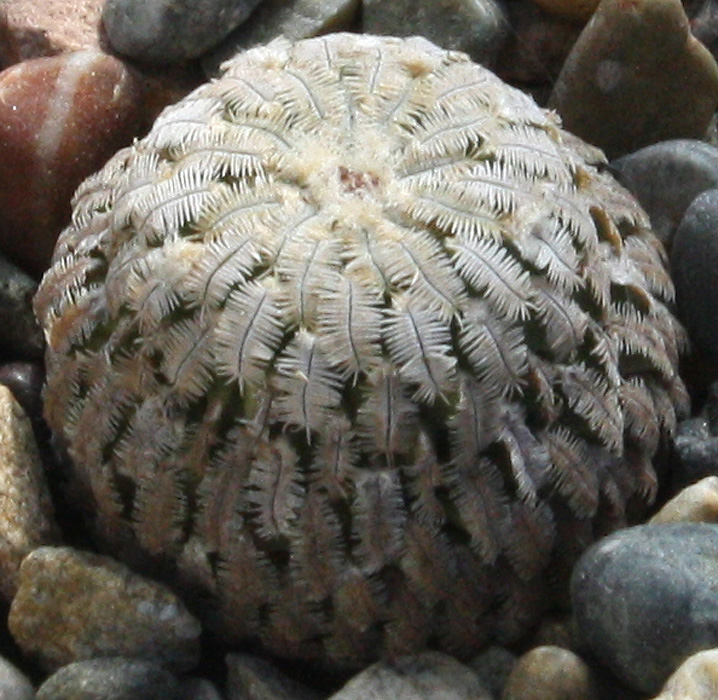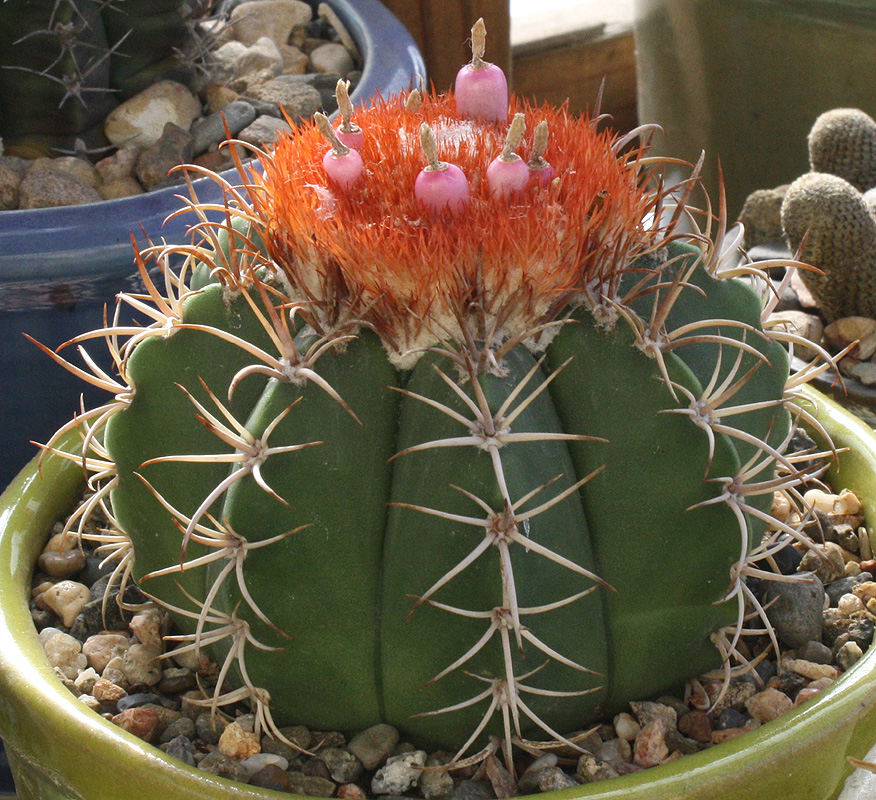My collections have always been small due to limited growing space, so the approach now is the same as it was in my younger days -- concentrate on smaller cacti, but don't limit yourself to collecting just a handful of genera. I've been lucky on both counts because I developed a taste for miniatures early on, and a talent for putting together fairly diverse representation of species being grown. In other words, a little bit of this and a little bit of that. Gymnos certainly rated back then, so when it was time to build a new collection, the genus was still on my "radar".
G. ochoterenae vatteri (California Cactus Center, June 2011) -- seen here on 9/27/11:
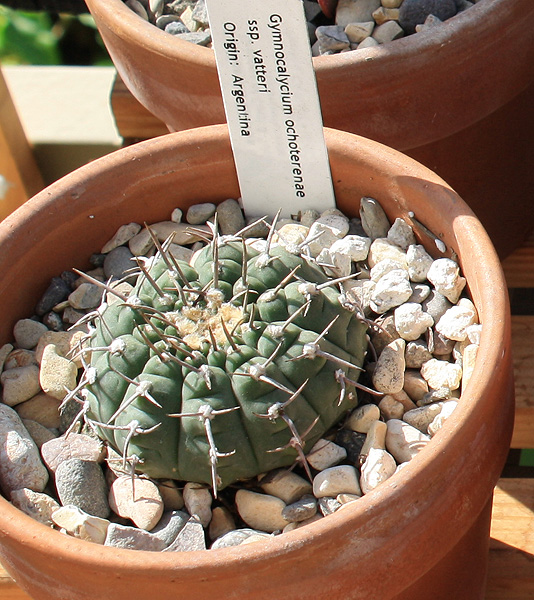
I remember growing horstii, mihanovichii, and platense, with platense being the one that interested me the most in the '70s. Unfortunately the CCC had a slim selection of Gymnos when I went there in 2011 -- no sign of the species I really wanted, but the vatteri they did have suited me just fine. Sometimes miniatures don't stay that way for long, and little did I know that I was about to grow a big, beautiful monster. Here's the vatteri on 3/16 and 9/27/14:
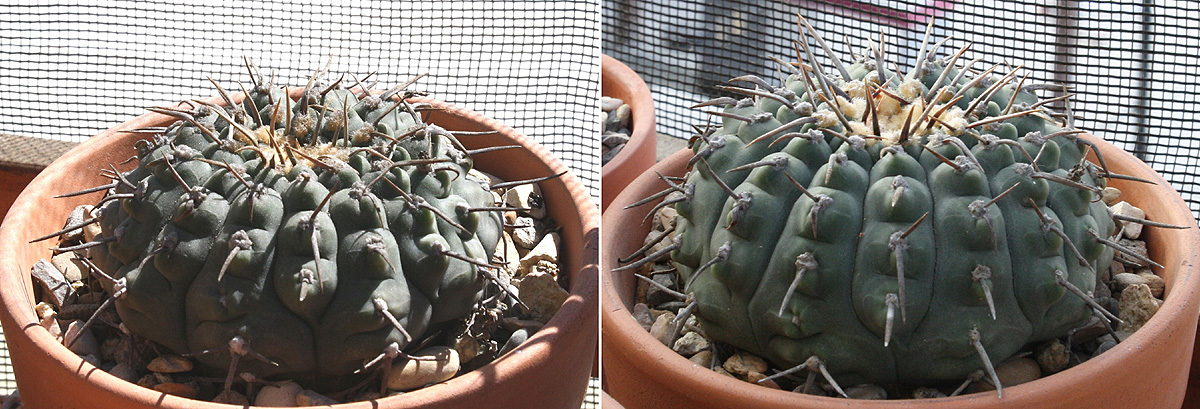
Okay, not quite a monster yet, but we're getting there! The plant was about ready to outgrow its 4" terracotta Azalea pot, so I moved it to a bigger glazed ceramic pot in March 2015. Per usual repotting practice, the move including changing out "dirty" mineral mix for clean. After the vatteri's first summer in the new pot on 9/20/15, followed by the end of this one on 9/17/16:

Now we have a beautiful vatteri monster! The plant has always been good about sending up flushes in summer, but this is the best I've seen to date. Let's have a closer look:
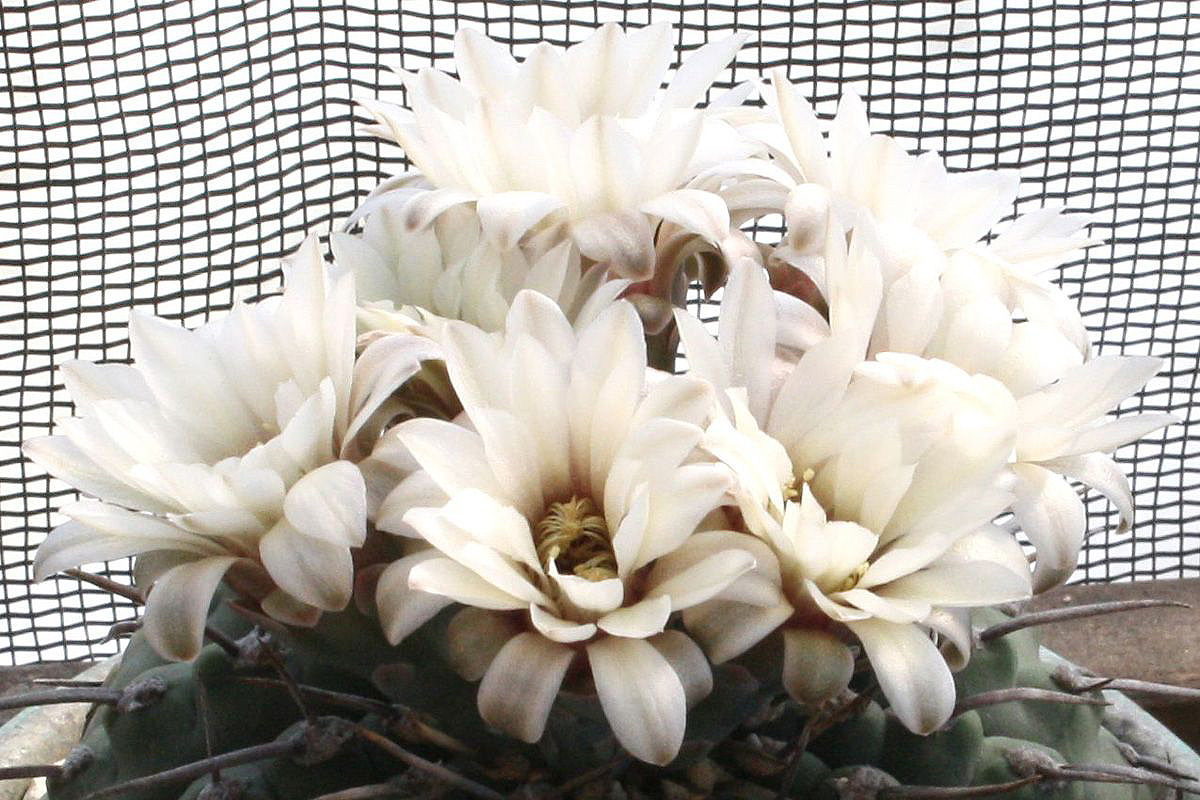
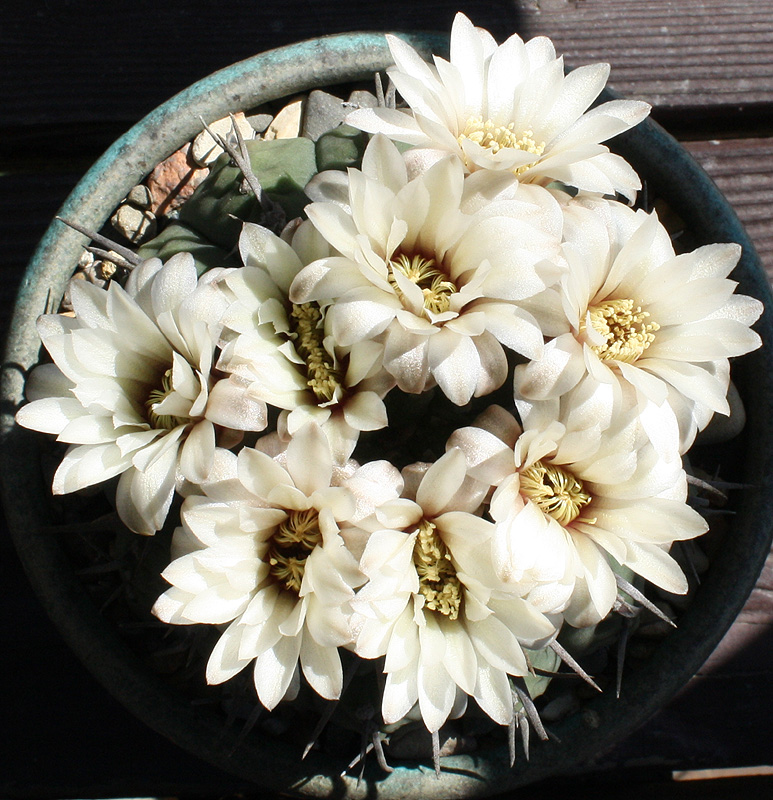

G. stenopleurum (CoronaCactus Nursery, July 2012) -- seen here on 7/15/12:

We find mihanovichii all over the place, and the species used to be a staple in my first collection. While I've always enjoyed its lovely skin colors, stenopleurum caught my eye as being similar but more interesting. In the stenopleurum's first fall under my care (11/23/13) and at the end of last summer (9/20/15):
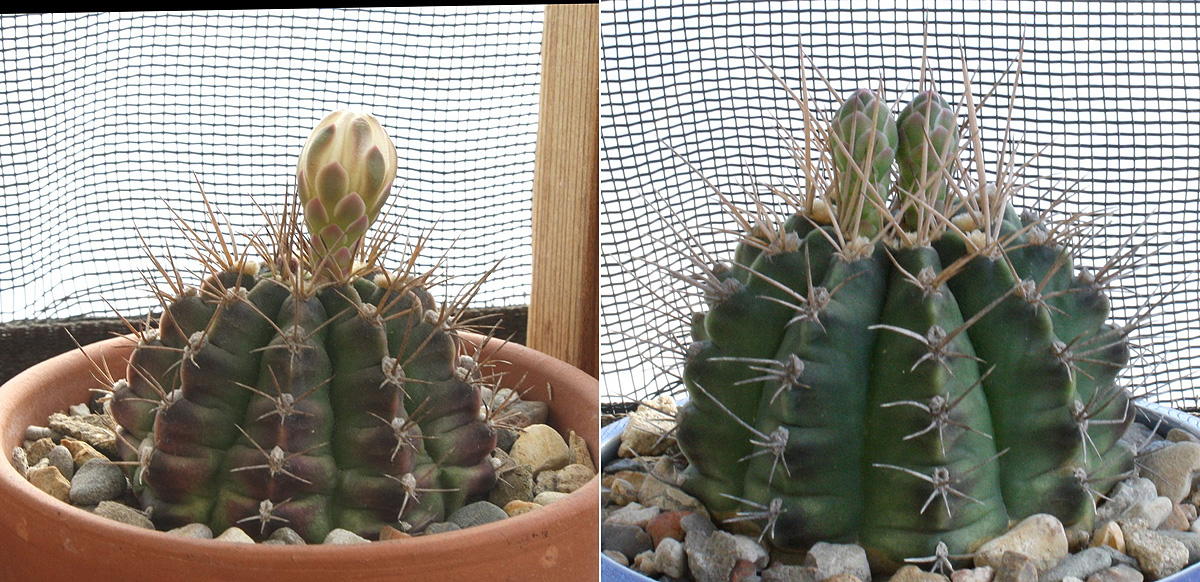
The plant undergoes a rather dramatic change as it gets shriveled and stressed in winter dormancy. You saw the beginning of it in the "before" pic, so I'll show you what happens when my stenopleurum comes out of its dormancy and slowly puts on its pretty summertime dress -- 4/3 and 9/18/16:
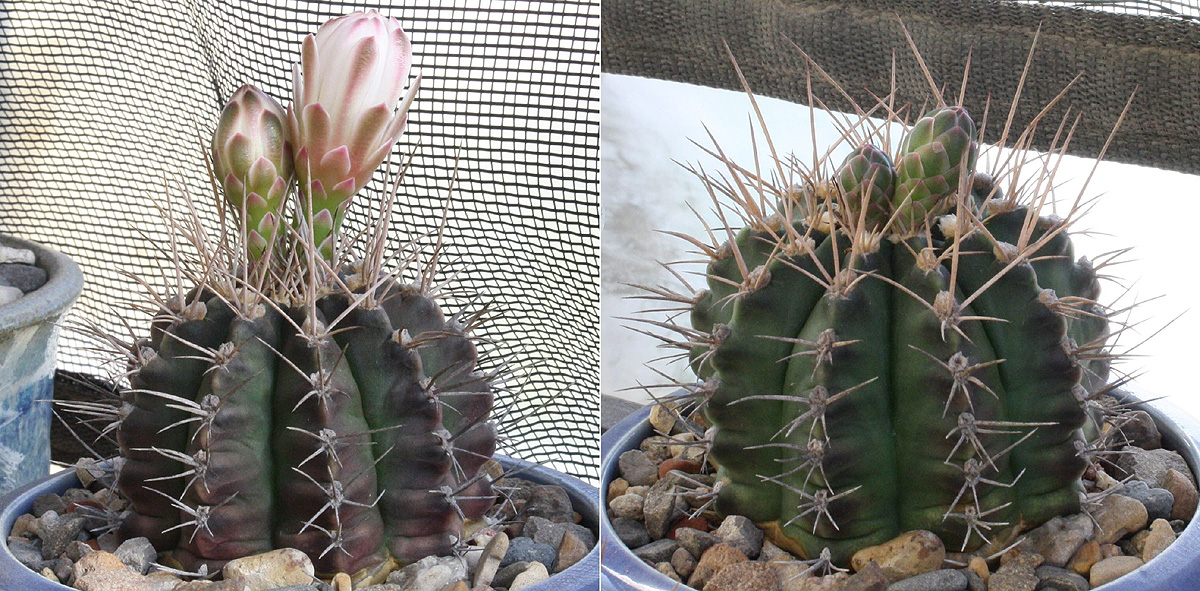
Unlike vatteri (which does most of its blooming in summer), stenopleurum will produce flowers throughout spring, summer, and fall. A nice big singleton for you on 9/24:
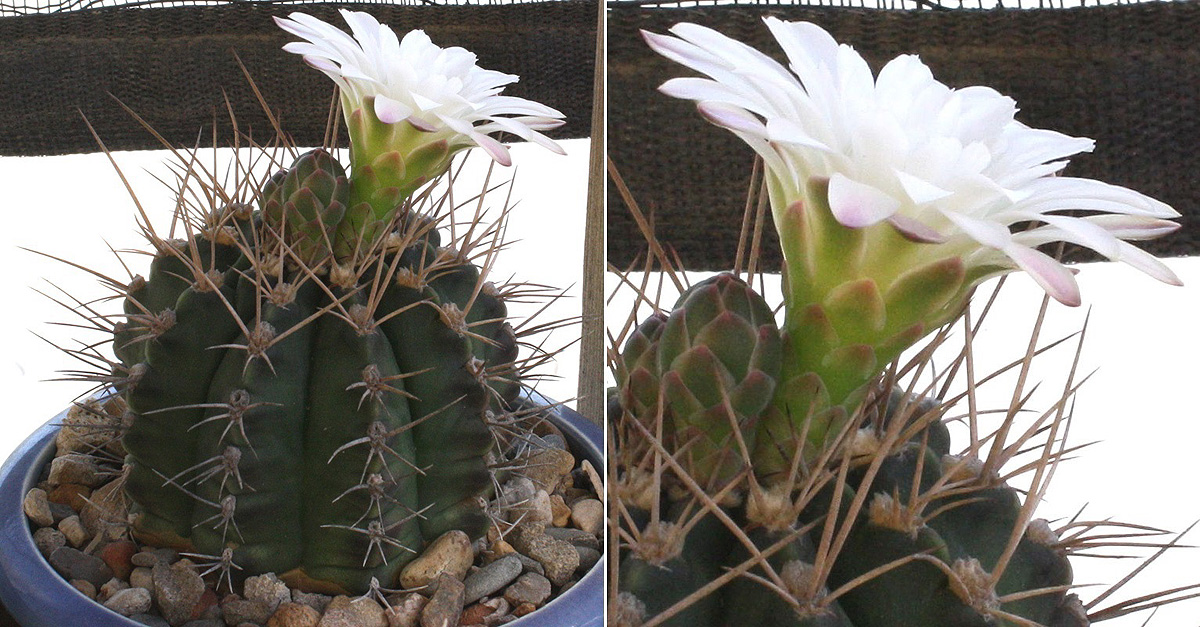
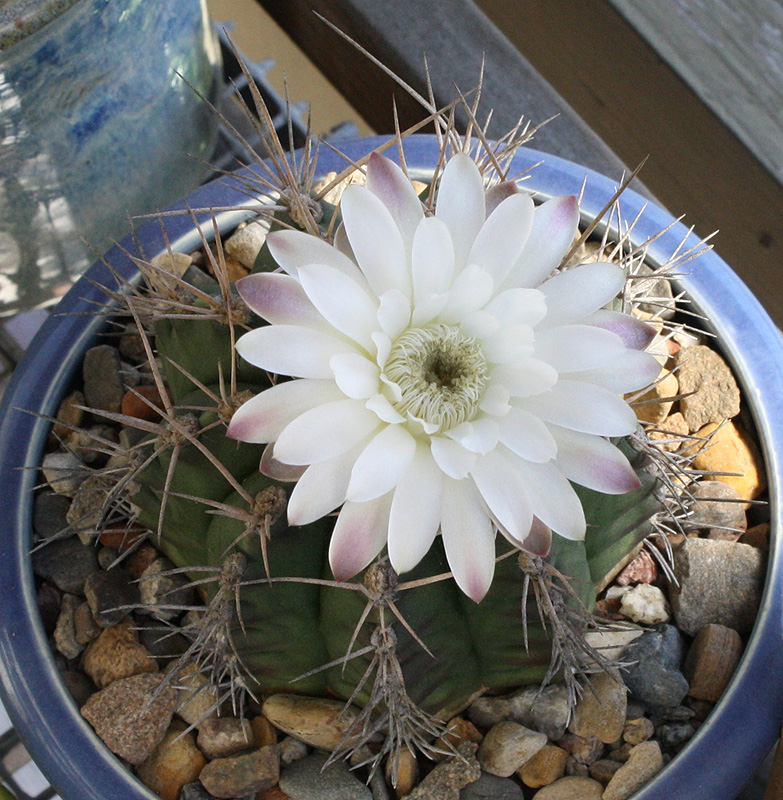
G. baldianum (Sunset Nursery, July 2013) -- seen here on 7/7/13:
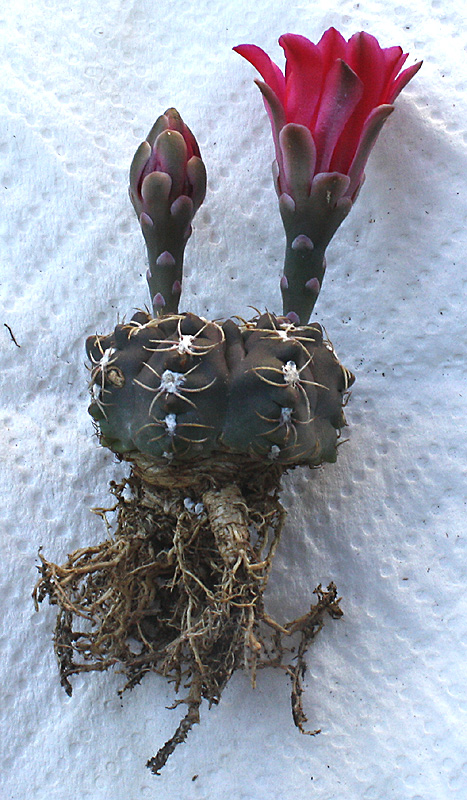
This was a rare departure from my avoidance of buying cacti at general-purpose nurseries. Located in the Silverlake district of L.A., Sunset has been around for quite awhile, and I occasionally go there just to check the place out. Cactus-wise, the nursery's variety and quality tend to be hit-and-miss (more miss than hit), but when I came in for a visit over that long July 4th weekend, the baldianums in stock were a hit. And one in particular said "buy me, buy me!" I couldn't resist its lovely form and spiderlike spines, with a beautiful red flower about to pop that sealed the deal. Downside to buying a potted cactus was having to dump out the nursery's mix (totally wrong for desert cacti!) and thoroughly prep the roots so they're squeaky clean before repotting. It was a yucky, time-consuming mess, although worth the effort for what I was getting. The new baldianum with a gorgeous bloom on 7/13/13:
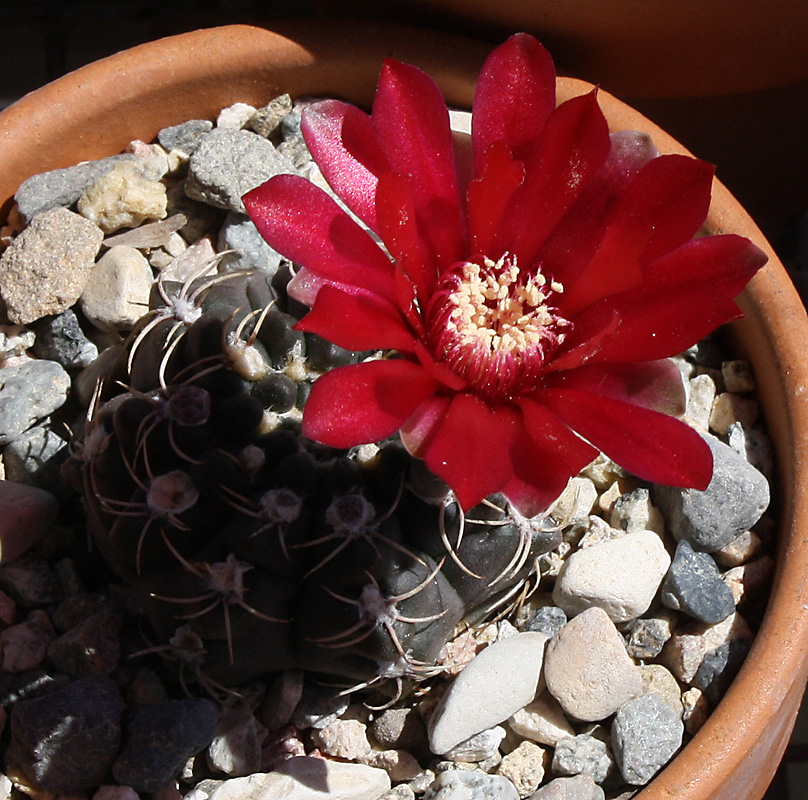
Mineral mix and my acidified water/fert regimen did the plant a lot of good. However, a couple of things still needed adjusting -- get rid of the terracotta and "dirty" mix in favor of a glazed ceramic pot and clean mix. That was done in March 2015, so we'll review the baldianum's progress at the end of 4 summers on 9/22/13, 9/20/14, 9/20/15, and 9/25/16:

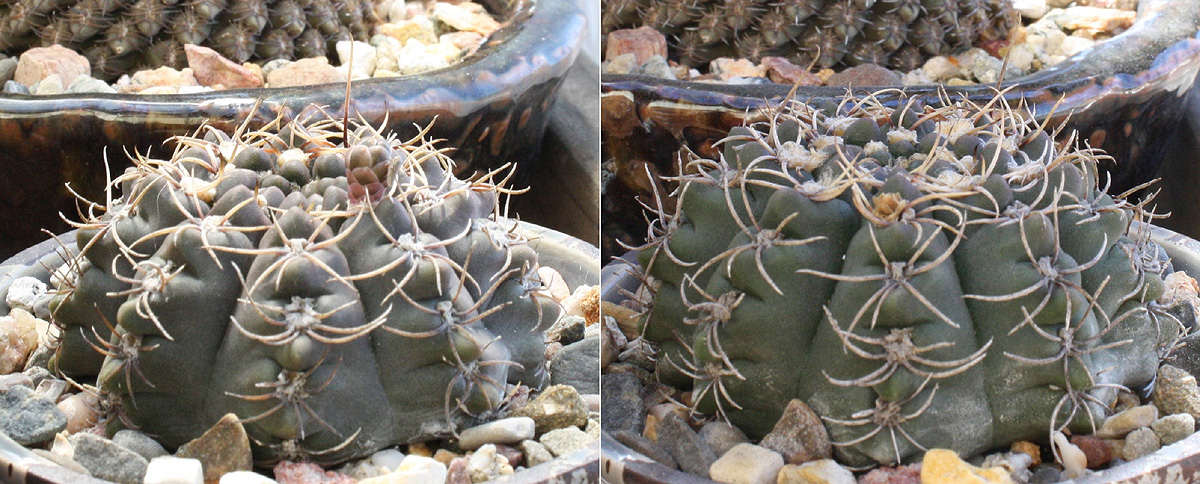
Same dates with a view from above:
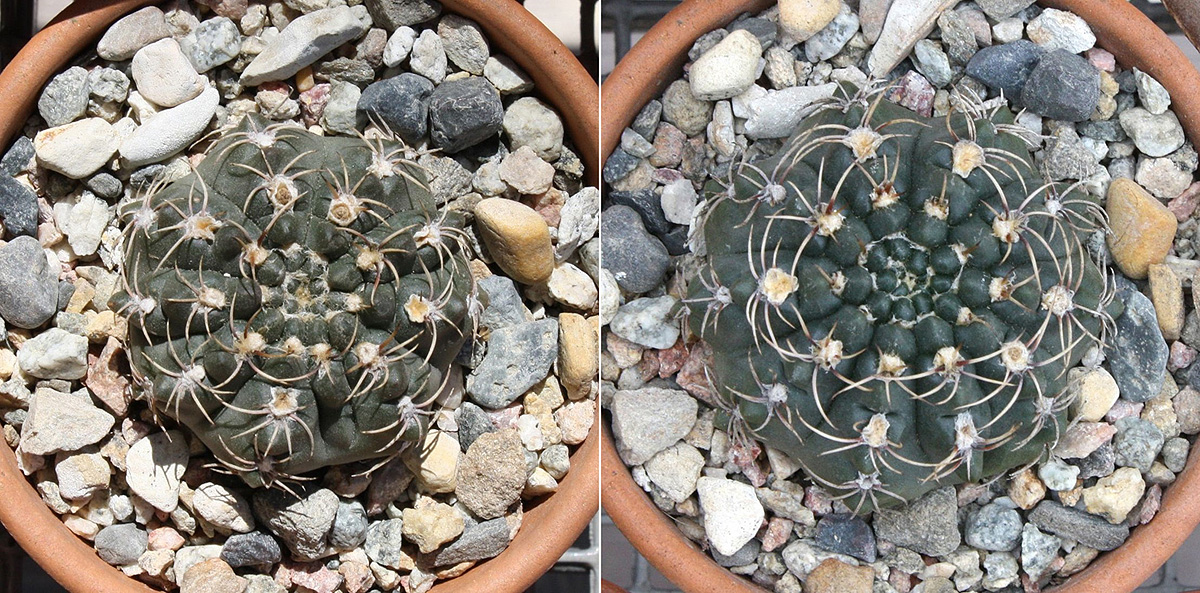
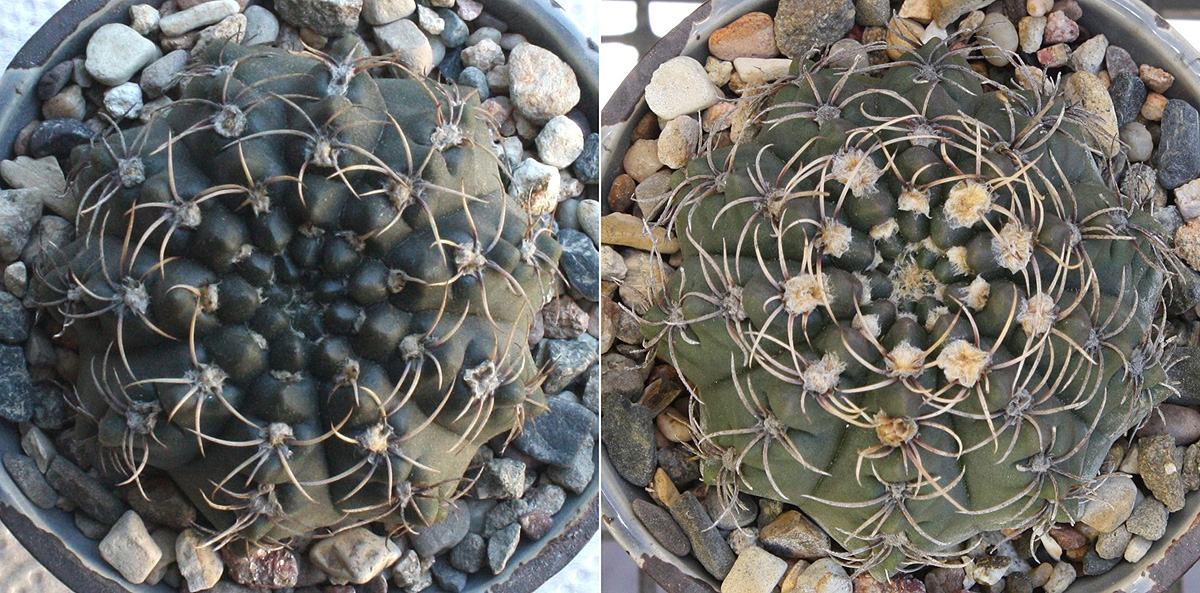
As well as it was doing before its latest repot, I can tell that DG fines in the "dirty" mix were holding the baldianum back a bit in terms of growth. Maybe not terribly noticeable in the side views, although the improvement we see with the aerial shot on 9/25 is remarkable. And flowers? Oh yes, on par with previous years. This plant is an excellent choice to go with my other Gymnos.
We'll end today's post with a "one-off" species I tried growing in my early collecting years...
Ariocarpus fissuratus (CCN, July 2013) -- seen here on 7/14/13:

I say "one-off" because fissuratus was the only Ario species SoCal hobbyists were going to find in the '70s. Definitely not for beginners either, and my only experience was knowing how to rot them. When I went soil-less in 2012, everything changed, and I started thinking about cacti that seemed impossible in the old-school years of heavy soil-based mixes. Thanks to the online sources we have these days, the selection has expanded beyond fissuratus, but it's still my favorite Ariocarpus. All I required was space for one to try again. The new plant bench I installed in 2013 got me within striking distance, so when I went cactus shopping that summer, a fissuratus filled one of the empty spots. It's probably the slowest-growing cactus I have in the collection, so tracking year-to-year progress is like watching a glacier. (Just kidding, that honor goes to Aztekium
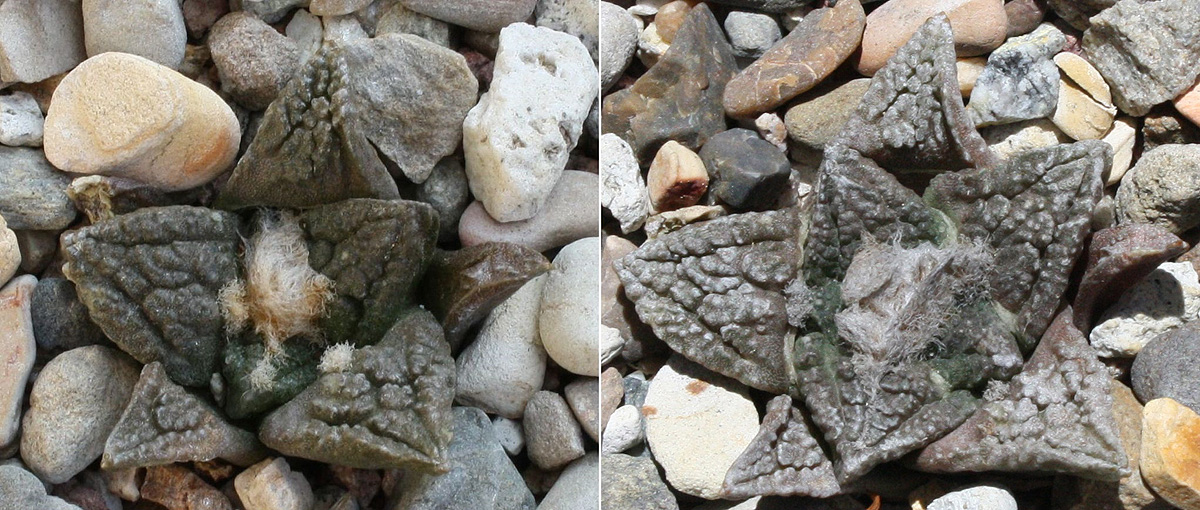
Growth rate is decent, although I'm keeping the plant in Sun Valley, and it may be getting more sun than it should. Then again, if my fissuratus has a more natural look compared to the GH-grown Arios we usually see, so much the better. One thing worth noting is the whitish cast to the skin when it's dry. If it's part of the natural look outdoors, could this be the fissuratus version of plant mimickry? If so, that's kinda interesting. Now we'll take the "after", turn it into a "before", and see the difference when the skin stayed moist the morning after I watered the plant -- 9/11/16 on the right:
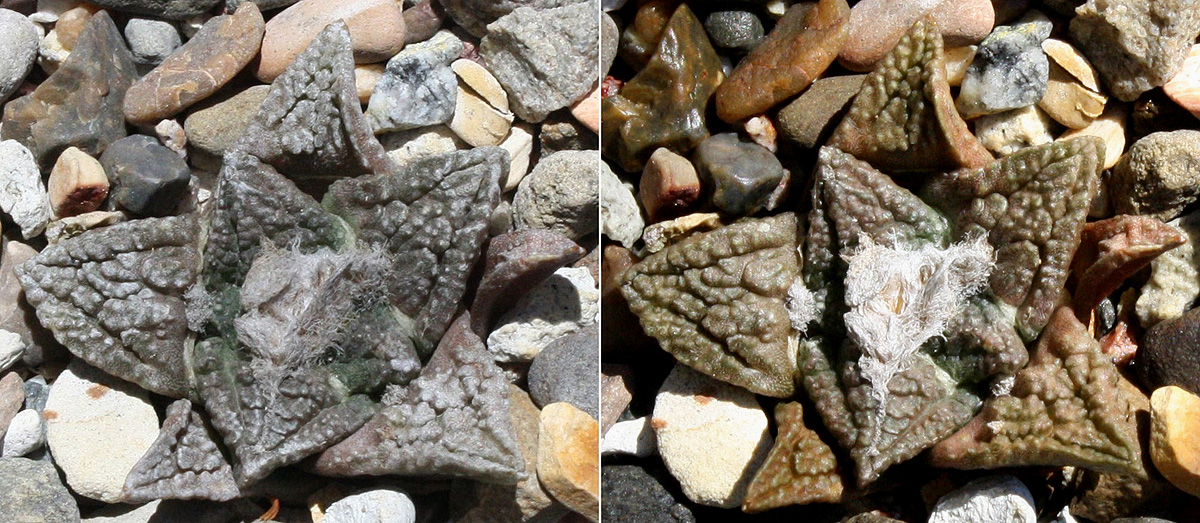
Ah, there's that Sun Valley tan. Being its very slow self, how do we know if the fissuratus is growing or not? We have 2 sure signs -- one is vibrant dark green skin around the growth point. And the other, a beige spot popping out in the middle of that dingy old wool. There we have it, and sign #2 tells us the "living stone" cactus grew a touch to end its summer.
I was thrilled to witness my first-ever Ario flower when the fissuratus bloomed in November 2014. I'll admit that I'm disappointed about not seeing another since then. Not sure why, but if it's healthy enough to keep growing in 2017, we'll have another shot toward the end of next year. Before we move on, here's a souvenir of the Ario fissuratus going from bud to bloom on the 1st, 5th, and 6th of that magic November:
